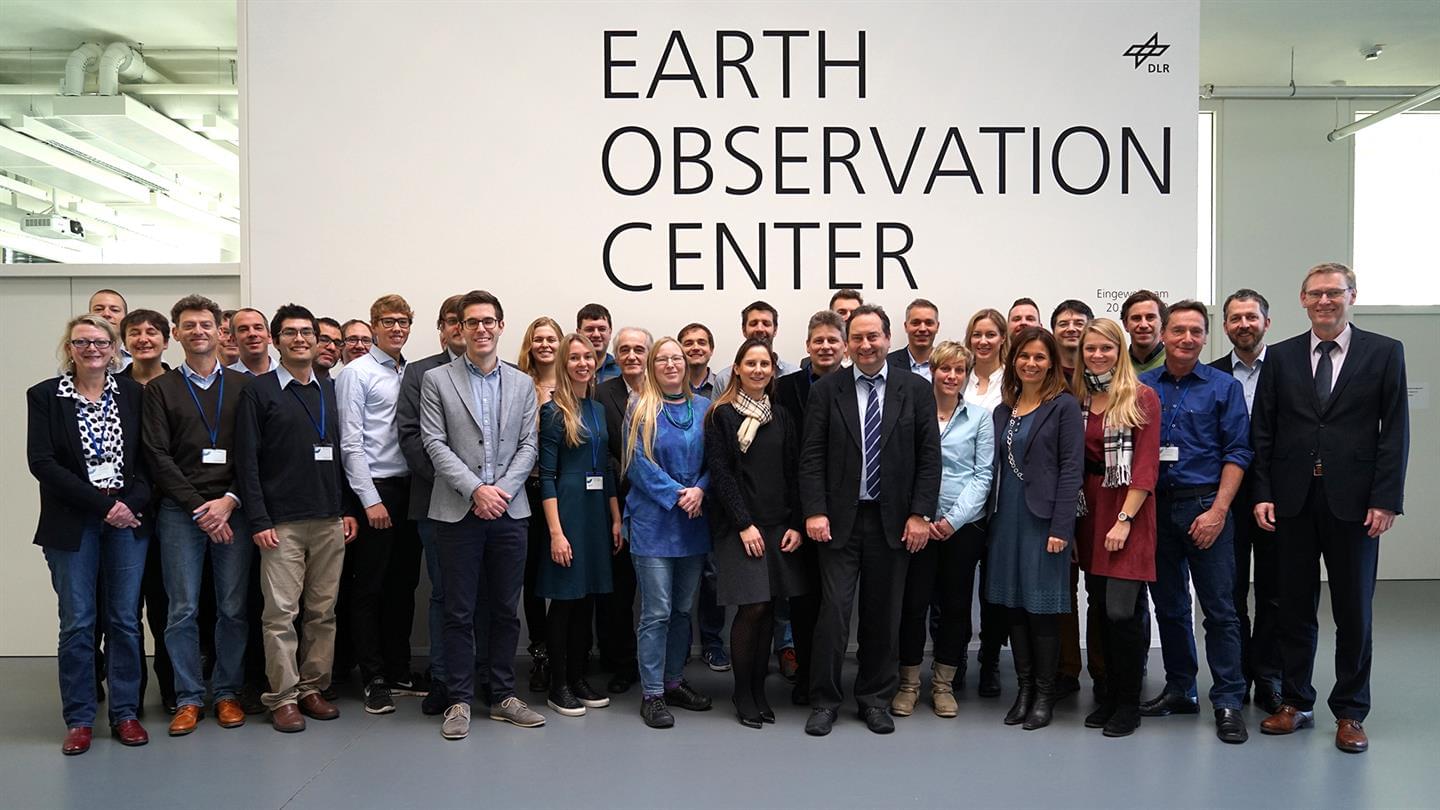2024
29.02.2024
On 29 February 2024, the RIESGOS project ends after more than 6 years.
THANK YOU to everyone who was involved in RIESGOS and thus made a significant contribution to the project’s success.
Further information on the conclusion of the project can be found in the following news article.
28.02.2024
The most important project findings were summarised in a “Policy Brief” which is aimed at decision makers working in the context of Disaster Risk Management (DRM) and associated research. It addresses the challenges of multi-risk assessment as well as the opportunities and limitations of technological developments, especially in the tension between research and practice. In addition, the “Policy Brief” provides recommendations for action for DRM in complex multi-risk situations.
The Policy Brief is published in English, Spanish and German (A4 format; page 1-7 and screen format; page 1-7).
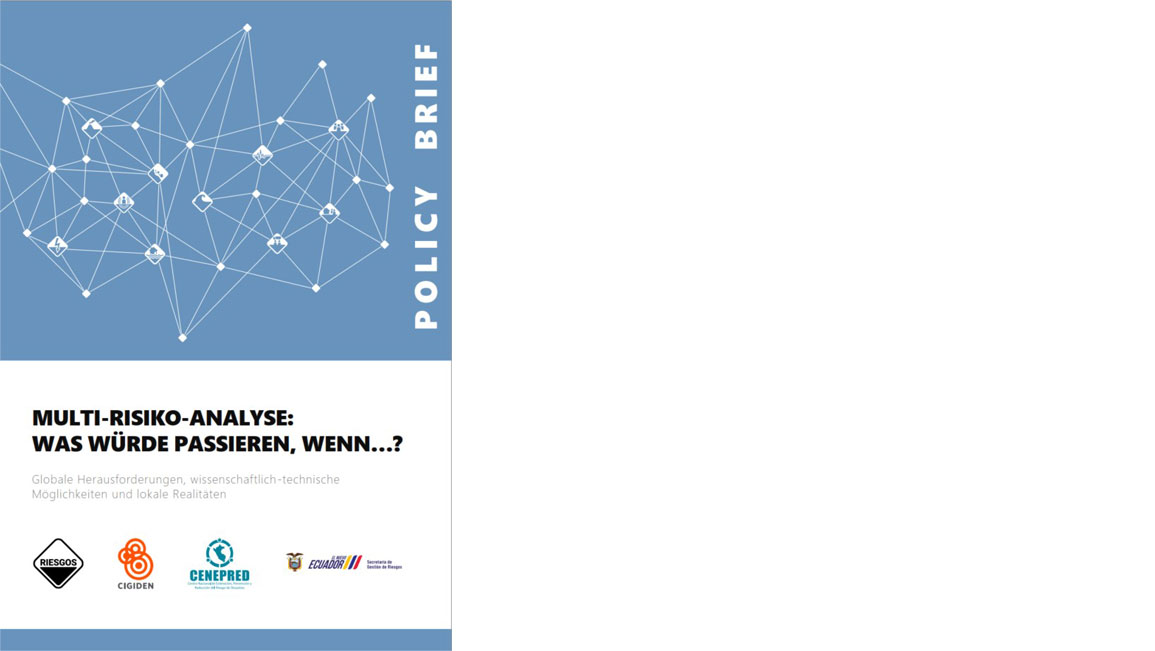
23.02.2024
The virtual closing event of the RIESGOS 2.0 project will take place on 28 February 2024.
In the frame of the BMBF-funded project RIESGOS 2.0, experts from various disciplines from Germany worked together with institutions from academia, civil society and public authorities in the partner countries Chile, Ecuador and Peru to improve the information base for proactive preparation for complex disaster events. The most important project findings were summarized in a joint “Policy Brief” aimed at people working in the context of disaster risk management (DRM) and related research. At the final event of the project, the “Policy Brief” will be presented with recommendations, which offer guidelines for relevant aspects of multi-risk analysis and the creation of suitable conditions for dealing adequately with this complex topic.
Final event: “Multi-risk analysis: What would happen if…?
Wednesday, 28.02.2024, 15:00 – 16:30 (CET)
Final event: “Multi-risk analysis: What would happen if…?”
Wednesday, 28 February 2024
15:00 – 16:30 (CET)
To the registration.
2023
22.11.2023
On 22 November 2023, colleagues from the RIESGOS 2.0 team presented a new user interface for the “RIESGOS Demonstrator”. The web frontend has been designed for users with no special prior knowledge who want to explore potential multi-risk scenarios (“what-if?”) and compare different scenarios with each other. The “RIESGOS Demonstrator Light” version was developed in the final year of the project in response to user feedback from the South American partners on the “RIESGOS Demonstrator” and the need for a simplified version.
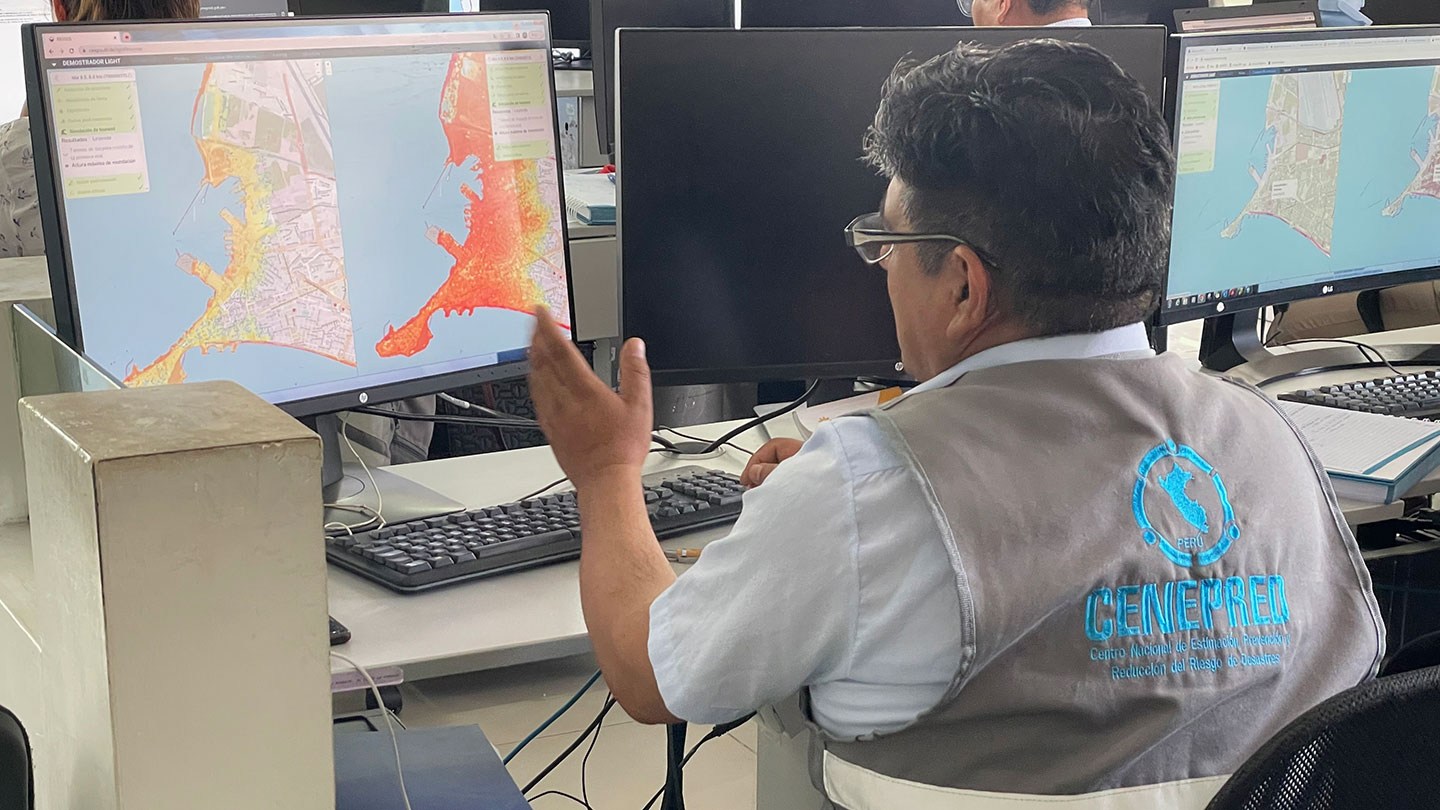
21.11.2023
Following the events in Chile, the project delegation travelled to Lima in Peru. On 21 November 2023, there was another round table discussion on lessons learned and recommendations for action for future challenges in disaster risk management in the event of complex multi-risk situations. At the invitation of the National Center for Estimation, Prevention and Reduction of Disaster Risk CENEPRED, representatives of various Peruvian institutions met, including the Presidency of the Council of Ministers (PCM), INDECI, Predes, GIZ Peru, CISMID, UNDP, City Council Callao, Regional Government Callao, University of Lima, Ministry of Defence, Directorate of Hydrography and Navigation of the Peruvian Navy. The topics discussed are to be summarised in a “Policy Brief” document and published at the end of the project in February 2024.
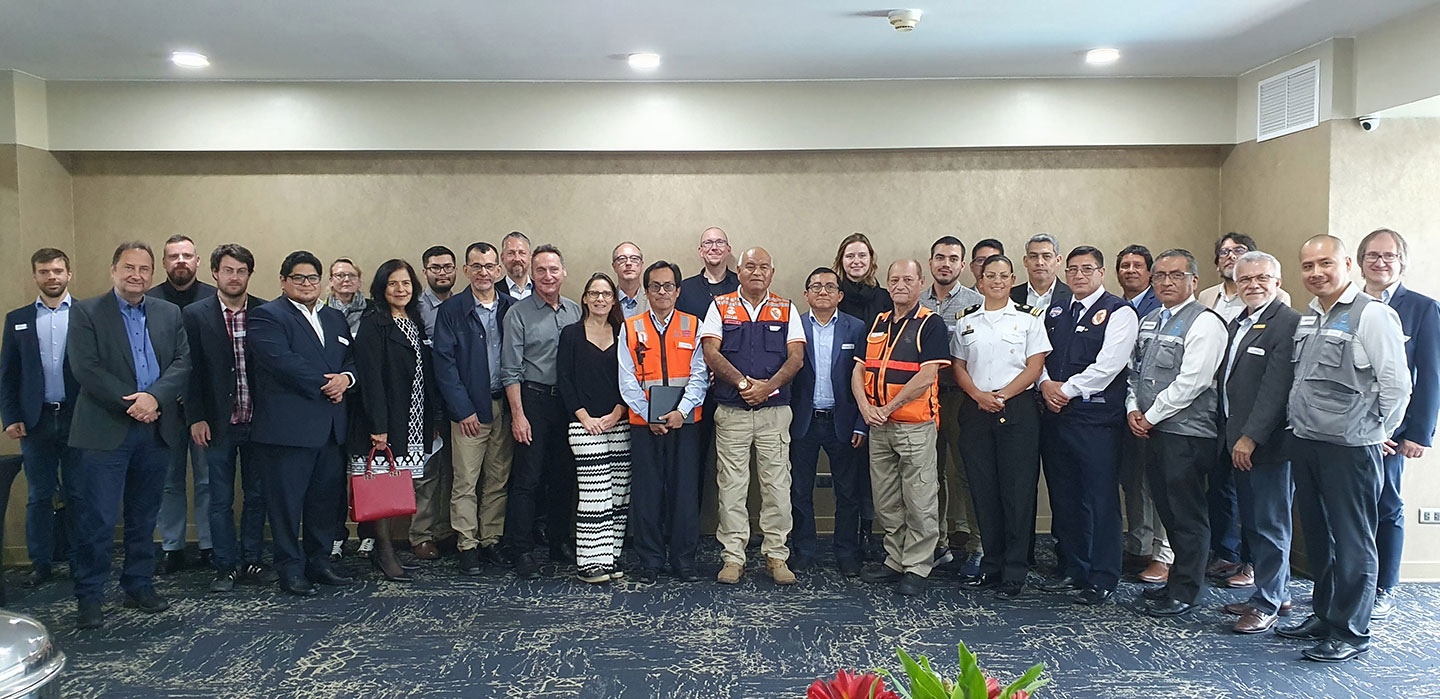
17.11.2023
On the last day in Chile, various meetings took place on the topic of “economic and scientific utilisation”. For example, the SMEs involved in the RIESGOS 2.0 project (geomer, SLU and 52°North) met with potentially interested companies for a networking meeting at the AHK Chile. Further bilateral meetings were held with various institutions to discuss future cooperation opportunities, including the Copernicus Regional Center for Latin America and the Caribbean (CopLAC Chile), the National Centre for Artificial Intelligence (CENIA) and the Heidelberg Center Latin America (HCLA).
16.11.2023
The 15-member delegation from the RIESGOS 2.0 project visited several institutions in the pilot region of Valparaíso, Chile. The programme began with a visit to the Hydrographic and Oceanographic Service of the Chilean Navy (SHOA). After scientific presentations, the delegation was able to observe an exercise at the tsunami early warning centre. The group then split up: one group went to the Technical University Federico Santa María (UTFSM) to discuss current research work on vertical evacuation options in the event of tsunamis, including a visit to the university’s virtual 3D laboratory. The second group met again at SHOA to present the current work on the RIESGOS demonstrator. Various representatives from the Valparaíso region took part, including SENAPRED Regional de Valparaíso, Quintero City Council and Zapallar City Council. After a brief introduction to the new user interface of the tool, which is designed for non-experts and enables the comparison of different scenarios, the participants were able to test the so-called “RIESGOS Demonstrator Light” independently and evaluate it using a questionnaire.
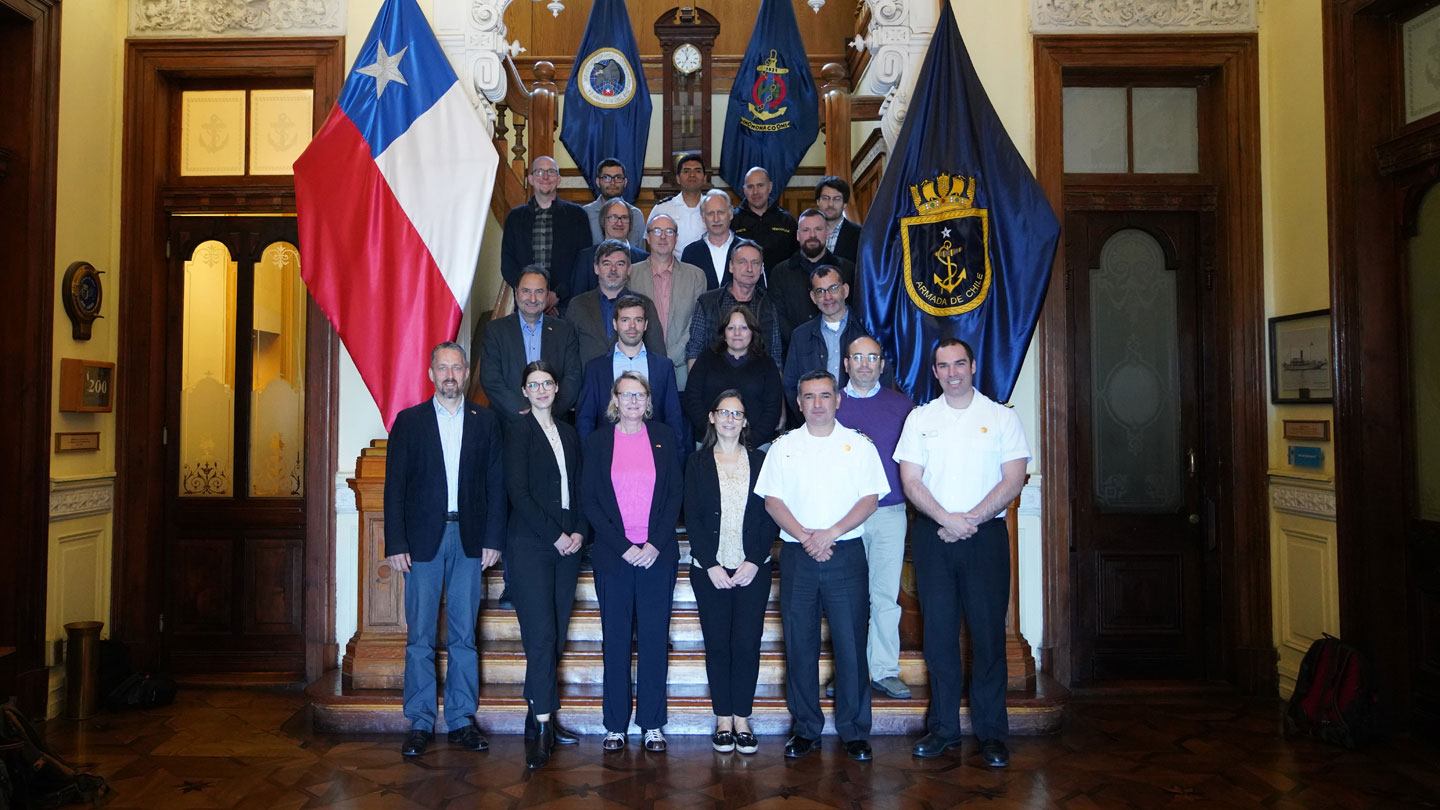
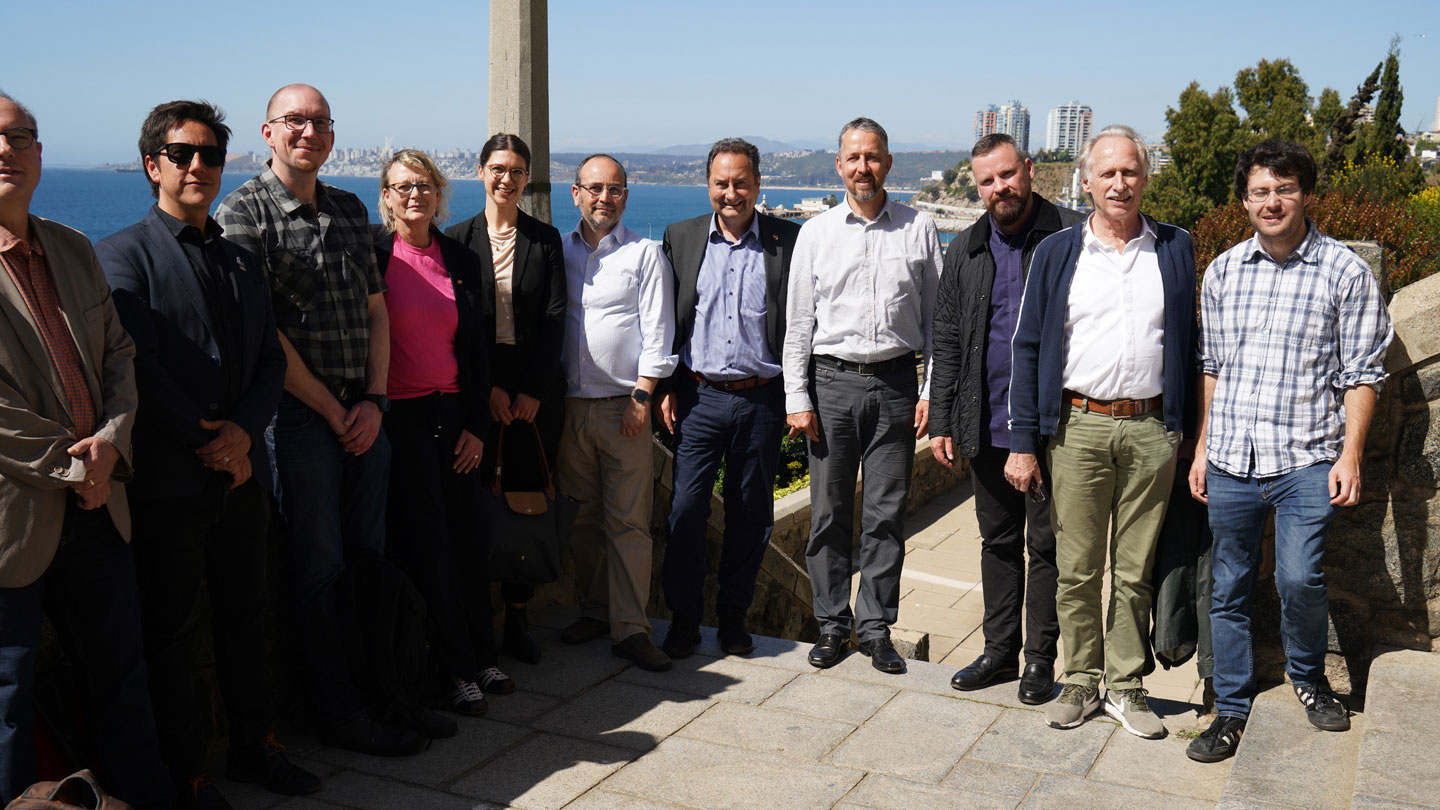
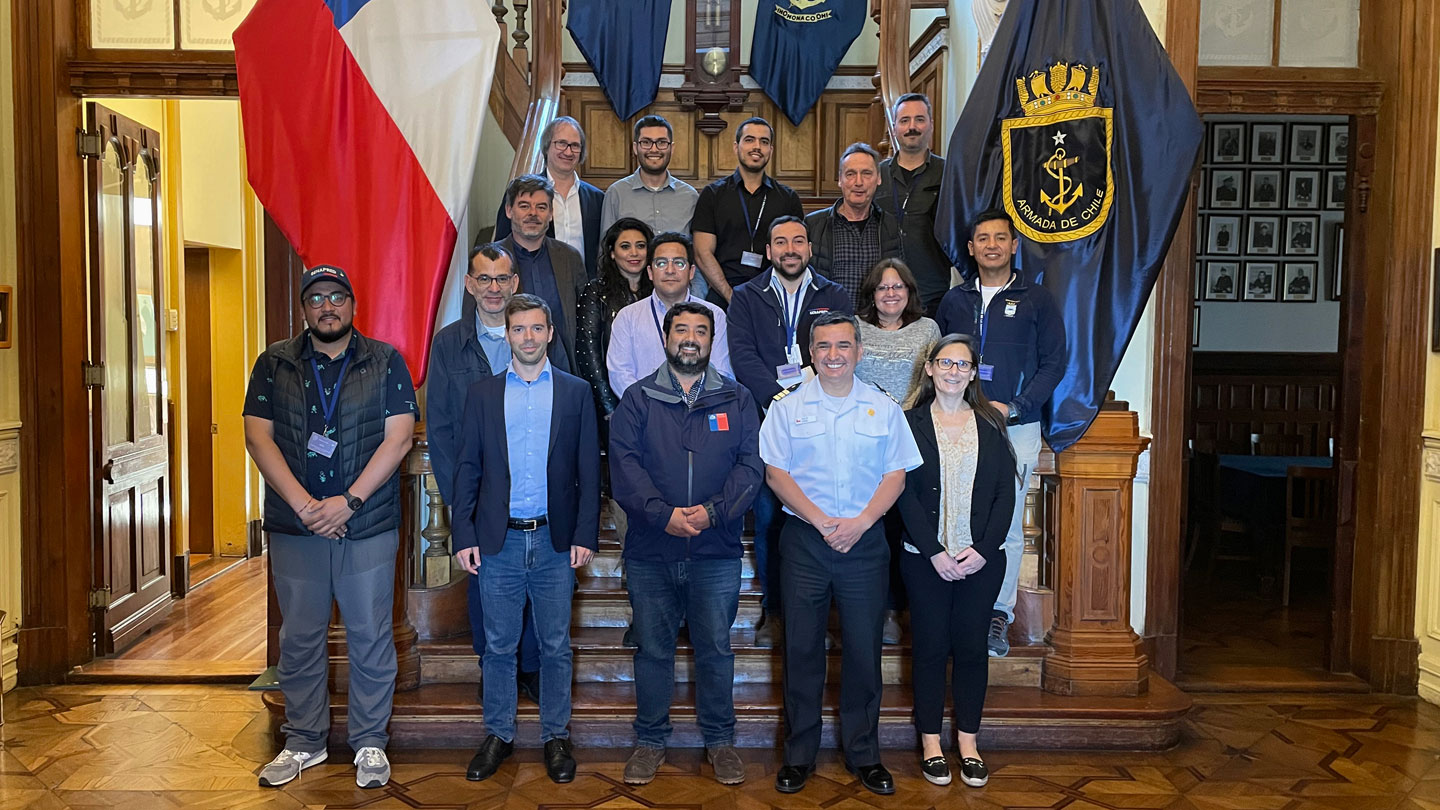
15.11.2023
A few weeks before the end of the project, a half-day scientific workshop was held in Santiago de Chile on 15 November 2023 with colleagues from CIGIDEN. In the afternoon, CIGIDEN and RIESGOS 2.0 hosted a round table. In the moderated discussion, representatives from various institutions, including SENAPRED, the Ministry of Housing and Urban Development, the Ministry of Social Development and Family, Itrend, CIGIDEN and RIESGOS 2.0, exchanged views on the topic of multi-risk analysis. Not only were lessons learnt from the project exchanged, but recommendations for action were also discussed in particular. The publication of a corresponding “Policy Brief” document is planned for the end of the project in February 2024.
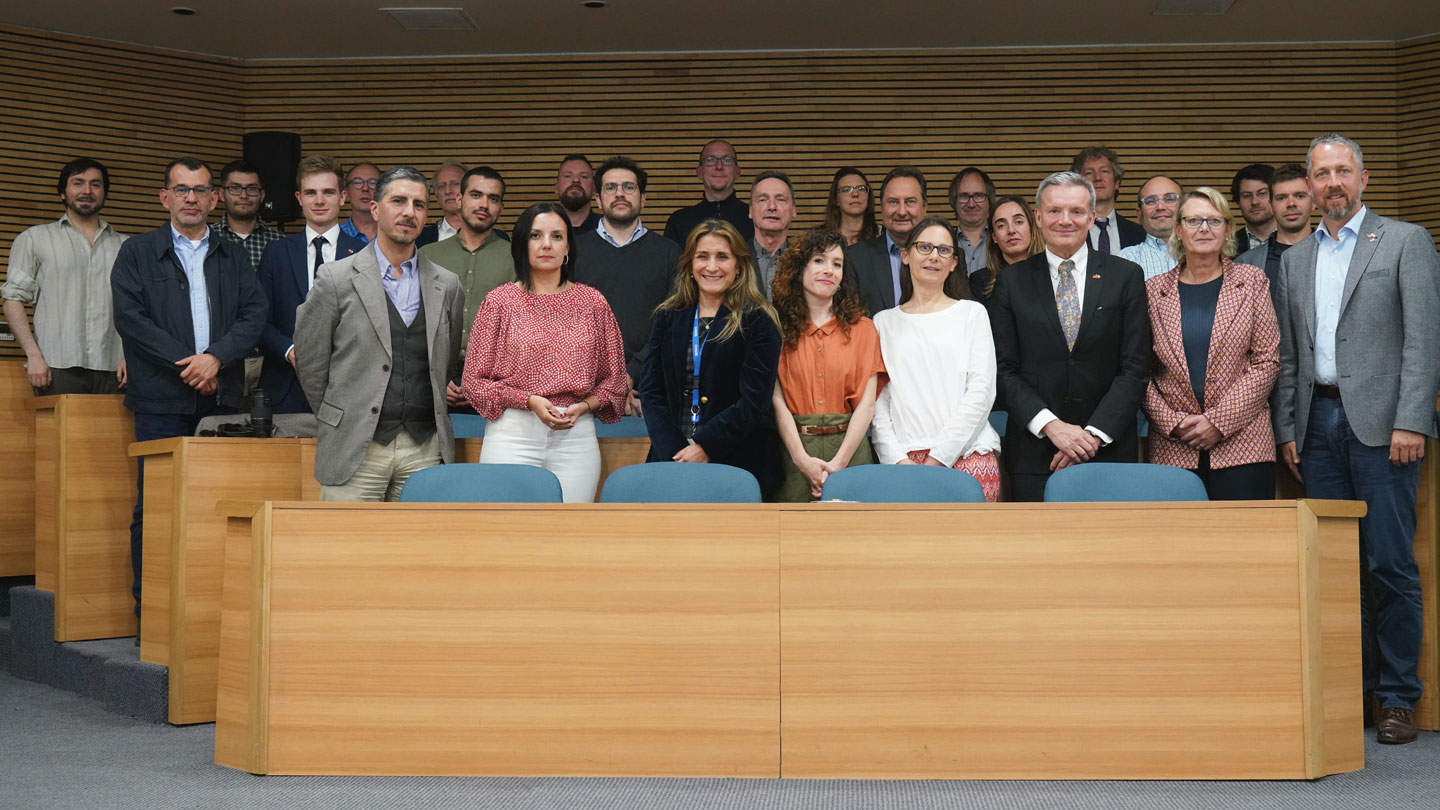
23.10.2023
A Special Issue titled “Multimodal Characterization of Built and Natural Environments for Multi-Risk Assessment” was just published in the journal “Natural Hazards”. Christian Geiß, Elisabeth Schoepfer, Torsten Riedlinger and Hannes Taubenböck (DLR) have edited this Special Issue consisting of 12 scientific papers and 9 short communications over the last few years.
Three publications are closely related to work conducted within RIESGOS. Christian Geiß and colleagues (DLR) exploit measurements from the earth observation missions TanDEM-X and Sentinel-2, which collect data on a global scale, to characterize the built environment in terms of constituting morphologic properties, namely built-up density and height. Rodrigo Cienfuegos (CIGIDEN) outlines the increasing risk of flooding to coastal areas as exposed regions and emphasizes controlling the exposure dimension. Juan Carlos Villagran (UN-SPIDER; associated partner) calls on science to transform achieved results into usable products.
The entire Natural Hazards special issue and all full papers are freely available until 30 November 2023.
19.10.2023
From 17 to 18 October 2023, the RIESGOS 2.0 team met for the annual project meeting. After short presentations of the most important work in the last project year, various presentations followed, including one on the RIESGOS demonstrator and the study on the analysis of uncertainties. In working groups and in the plenary, the team intensively exchanged learning experiences of the last project years. The insights gained are the basis for recommendations formulated by the team until the end of the project. On the second day, the team planned the upcoming final project trip to Chile and Peru in November 2023.
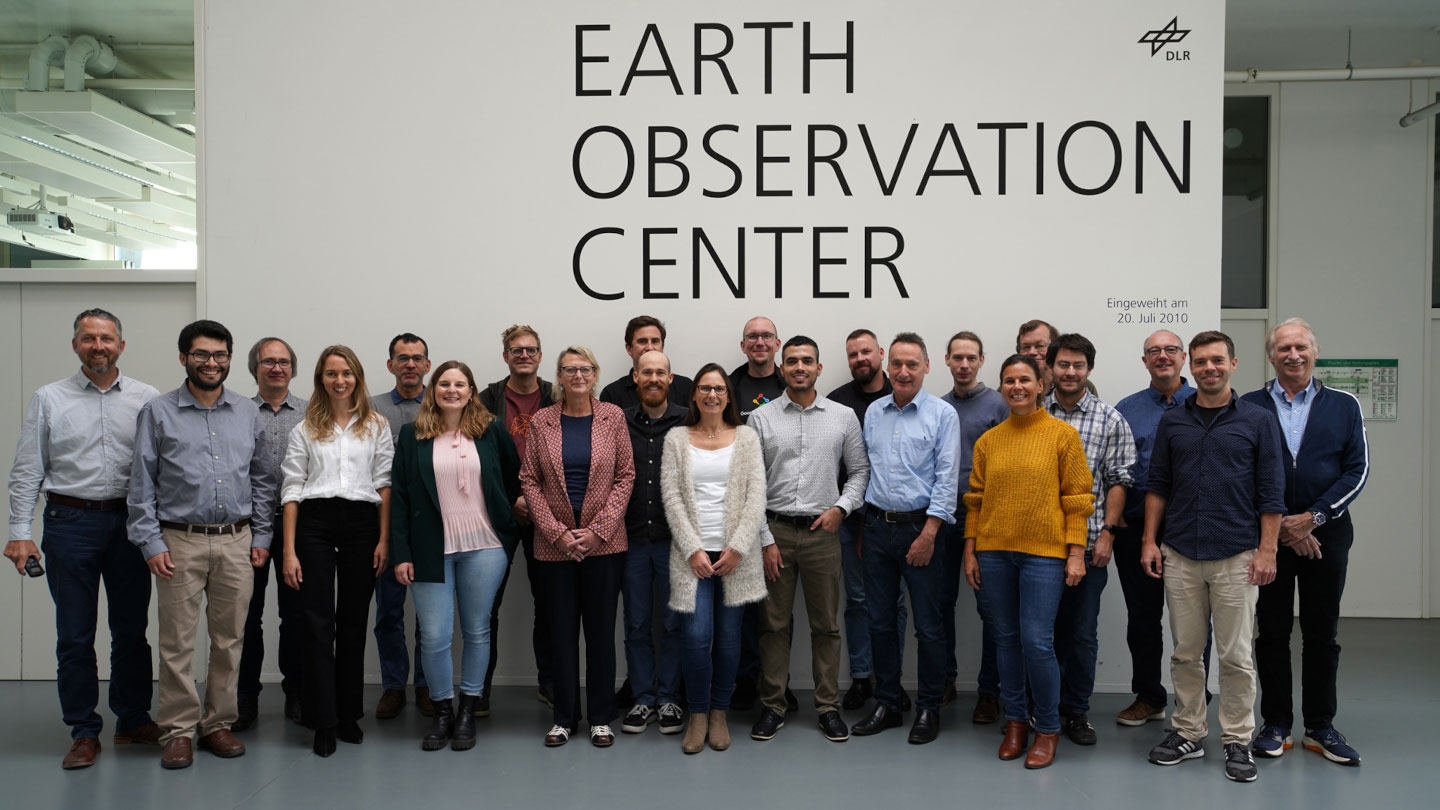
26.09.2023
In their paper “Deep multitask learning with label interdependency distillation for multicriteria street-level image classification” (publication|preprint), Patrick Aravena Pelizari, Christian Geiß, Sandro Groth and Hannes Taubenböck (DLR-DFD) present a deep multitask learning method that allows to efficiently characterize buildings according to multiple vulnerability relevant criteria based on street-level images. This is a prerequisite for multihazard risk assessment. The presented method includes the modeling of interdependencies across the different target variables which improves the prediction accuracy compared to the benchmark methods. Experimental results for the classification of buildings according to the five target variables height, lateral load resisting system material, seismic structural type, roof shape, and block position are presented.
19.06.2023
From June 12-16, 2023, Mr. Alfredo Zambrano, Director of the Information Management Department at CENEPRED, Peru, was a guest in Germany as part of the RIESGOS 2.0 project. CENEPRED is the Peruvian National Center for Disaster Risk Assessment, Prevention and Reduction. At the beginning of his stay, Mr. Zambrano visited the DLR in Oberpfaffenhofen, where among other things the further developments of the RIESGOS demonstrator were discussed and the next steps were outlined. Further stations of his visit were at the Technical University of Munich with researchers of the “Engineering Risk Analysis Group” and the “Landslide Research Group” as well as with the company geomer GmbH in Heidelberg. The focus was on the exchange of experience on cascading effects in connection with critical infrastructure, landslides, floods and heavy rainfall. Accompanied by representatives of DLR, Dialogik and geomer, Mr. Zambrano visited the Federal Office of Civil Protection and Disaster Assistance (BBK) in Bonn and had discussions with representatives of the German Committee for Disaster Reduction (DKKV). Finally, an excursion to the Ahr valley took place under the direction of the Geographical Institute of the University of Bonn. During the excursion, Mr. Zambrano got an impression about how the consequences of heavy rainfall events and floods are dealt with in Germany and what precautions are taken for the future.
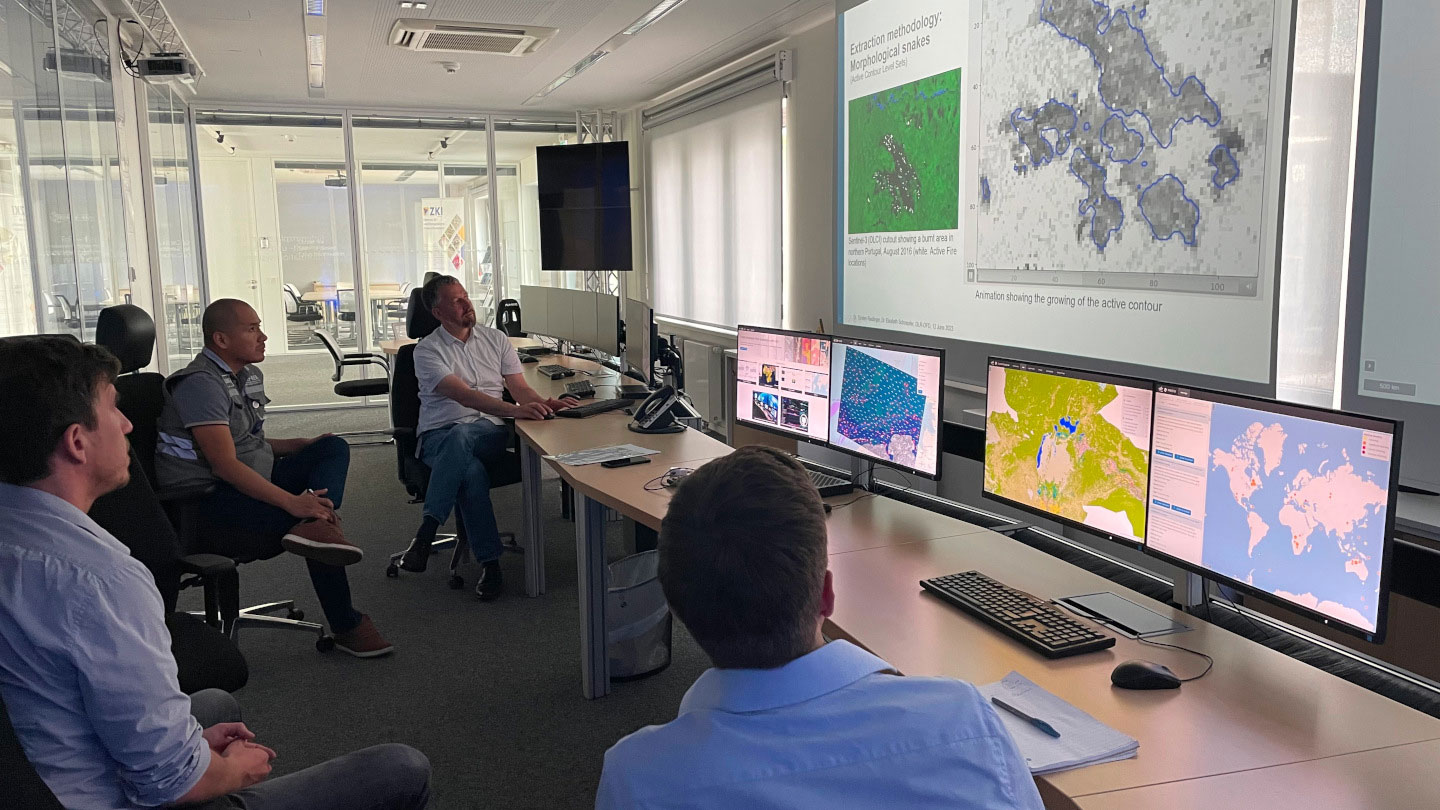
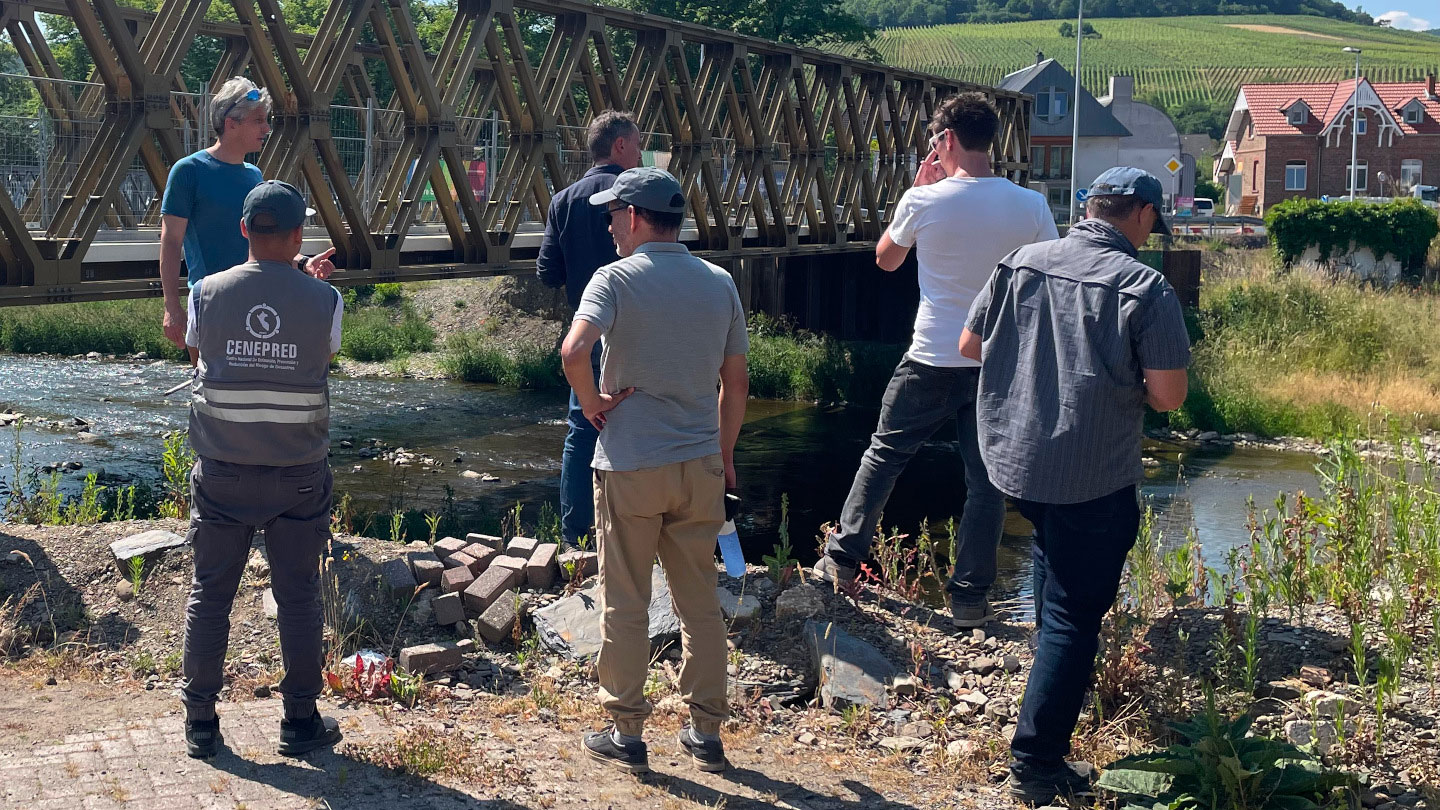
19.05.2023
From May 17-19, 2023, the International Conference “Joint Urban Remote Sensing Event (JURSE) 2023” was held in Heraklion, Greece. JURSE is known as a forum of excellence where researchers, practitioners and students present, share, and discuss their latest findings and results. JURSE is committed to introduce innovative methodologies and technological resources recently employed to investigate the manifold aspects of the urban environment through orbital and airborne remote sensing data. Within the frame of the RIESGOS 2.0, Prof. Christian Geiß (DLR) presented recent studies on the spatiotemporal extrapolation of population data. For the RIESGOS pilot region Metropolitan Lima and Callao which features a high population dynamic, experimental results were shown and discussed with the audience.
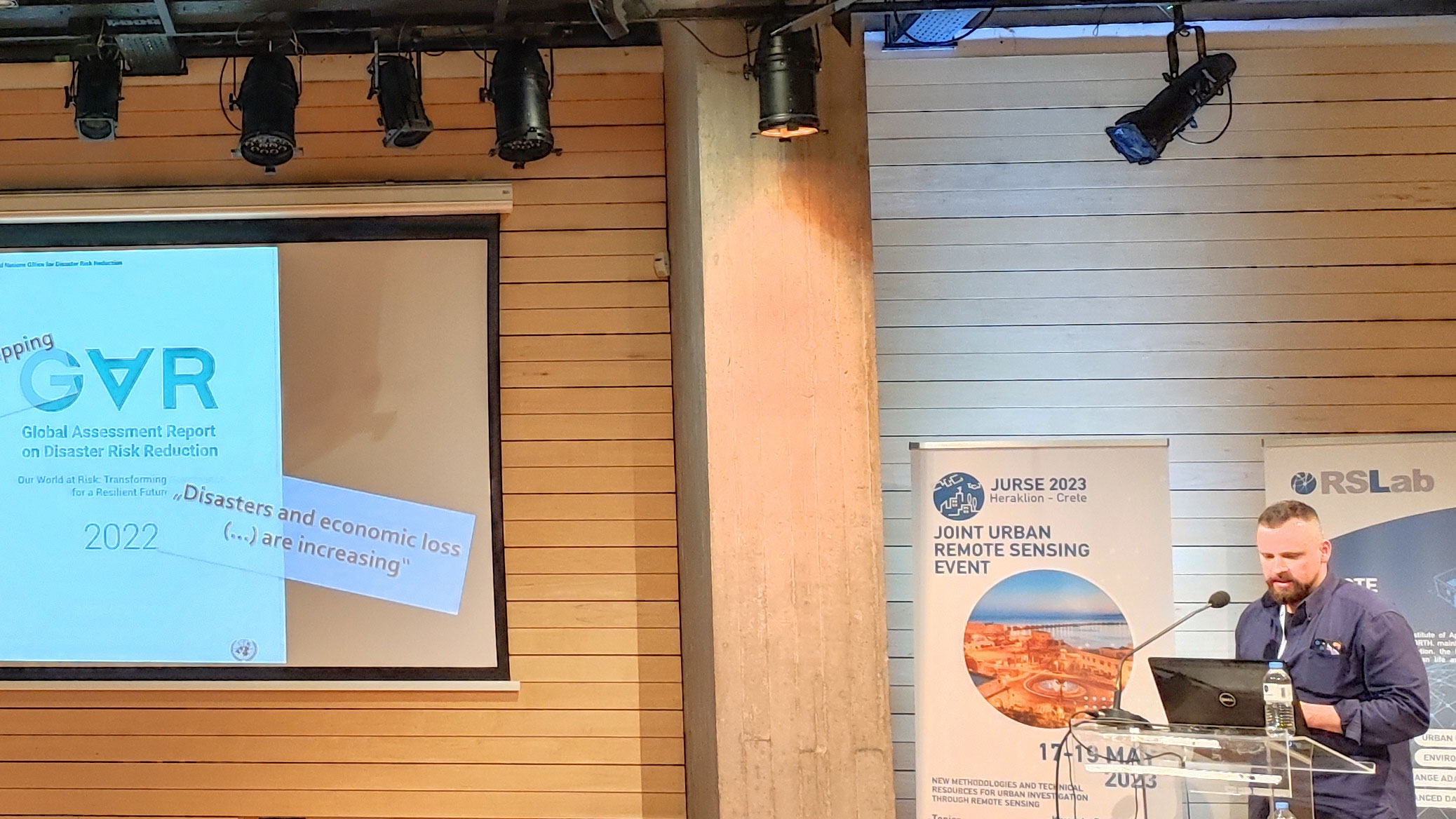
05.05.2023
Together with the Chilean research centre CIGIDEN, RIESGOS 2.0 representatives met on 05 May 2023 with the National Disaster Prevention and Response Service (SENAPRED) in Santiago de Chile. In the meeting, the use of research and technology, such as the RIESGOS 2.0 demonstrator for scenario-based risk analysis, were discussed. SENAPRED emphasised the importance of collaboration with this two scientific institutions, which is based on several years of trustful cooperation. The focus of the potential gaps to address are, among others, the development of risk and exposure assessments for the regions at threat in Chile, and the development of local capacities.
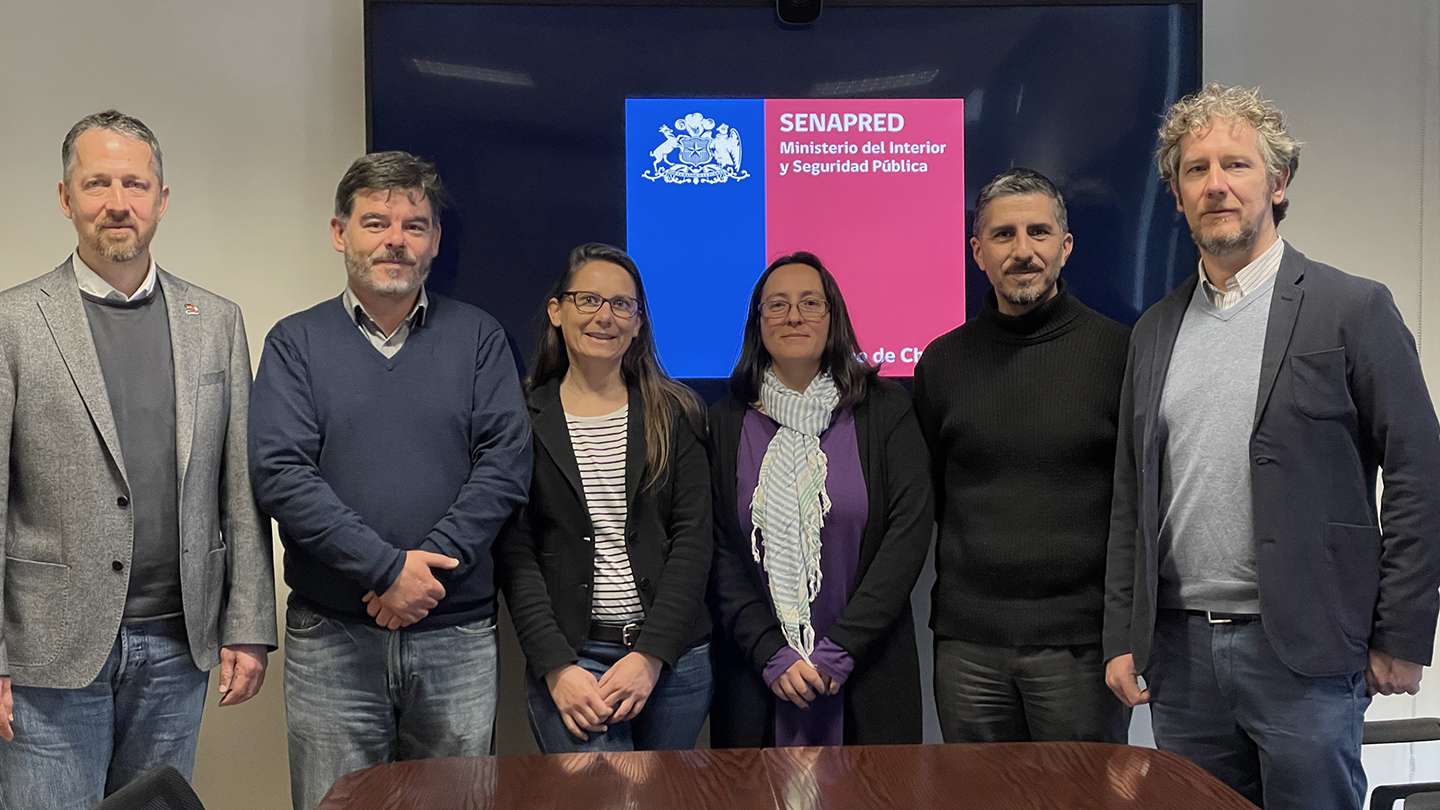
04.05.2023
Organised by the Chamber of Industry and Commerce Nuremberg for Central Franconia, together with all Bavarian Chambers of Industry and Commerce, the first Latin America Forum Bavaria took place on 04 May 2023 at the “Haus der Wirtschaft” in Nuremberg. Participants were treated to a mix of theory and practical examples of trade in and with Latin America. German entrepreneurs who are already doing business in Latin America gave exciting insights into Latin American entrepreneurial culture. Interested parties were thus able to get a good overview of the challenges and opportunities of a potential trade relationship and gain information that goes beyond the university textbook. Various presentations also provided insight into the legal, financial and political backgrounds of a Latin American market launch or company foundation or even trade relationship between Germany and Latin America. The event was rounded off by the presentation of the individual Latin American countries by representatives of the German Chambers of Foreign Trade.
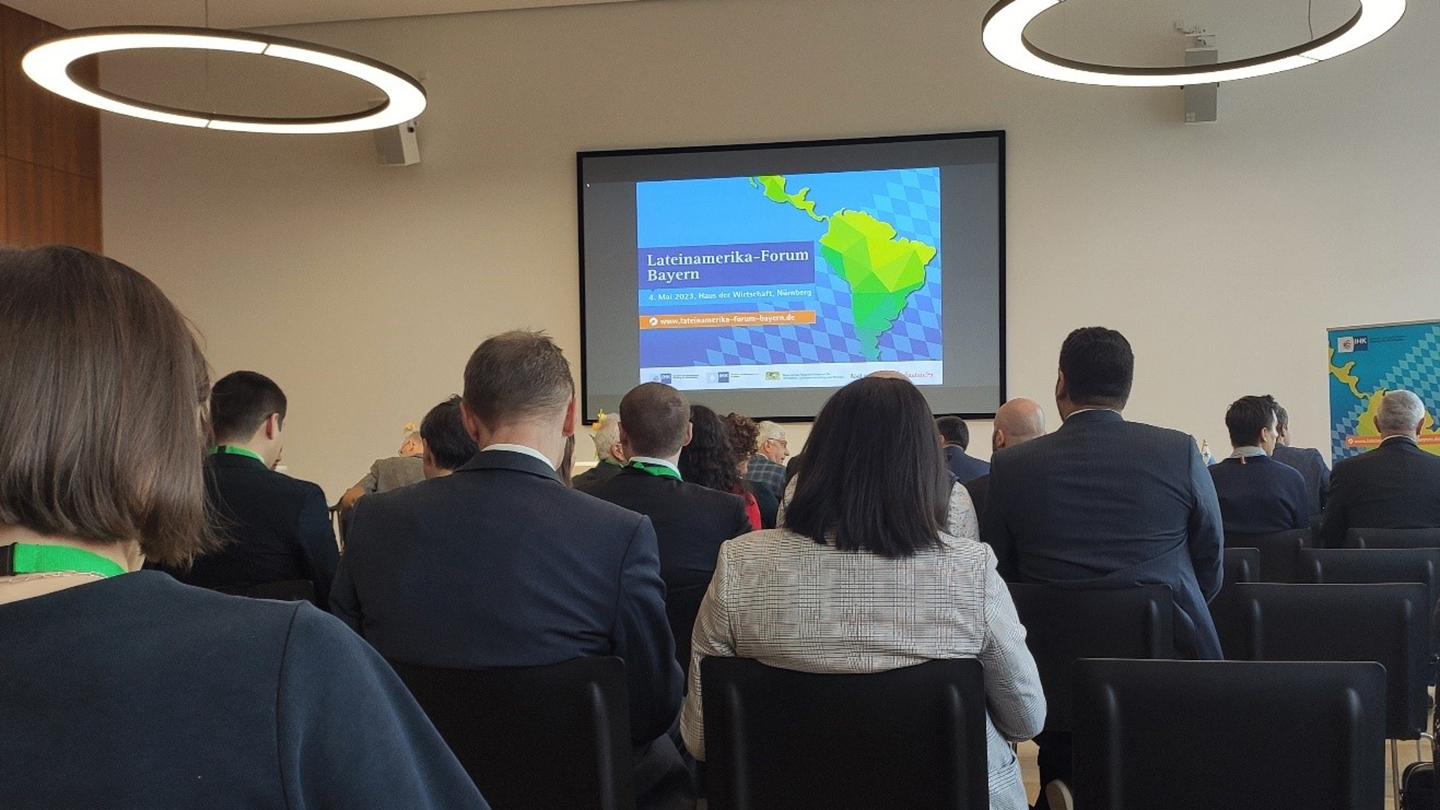
27.04.2023
During this week (23-28 April 2023) EGU General Assembly 2023 takes place in hybrid format in Vienna, Austria. Again, the RIESGOS 2.0 team is represented with several contributions. Among others, Dr. Alexey Androsov (AWI) presents work on tsunami simulations for the Peruvian coast focusing on Metropolitan Lima and Callao. The study was done in collaboration with Dr. Sven Harig (AWI) and Dr. Natalia Zamora (Barcelona Supercomputing Center; previously PostDoc at CIGIDEN, Chile) and builds on a longstanding collaboration with CIGIDEN that focused on work in the pilot region of Valparaíso, Chile, to compute tsunami inundations involving a comparison of numerical models. The ongoing work presented at EGU focuses on inundation properties and the role of nonlinear contributions in the numerical simulations relevant to the impact and damage due to tsunami events in a case study in Peru.
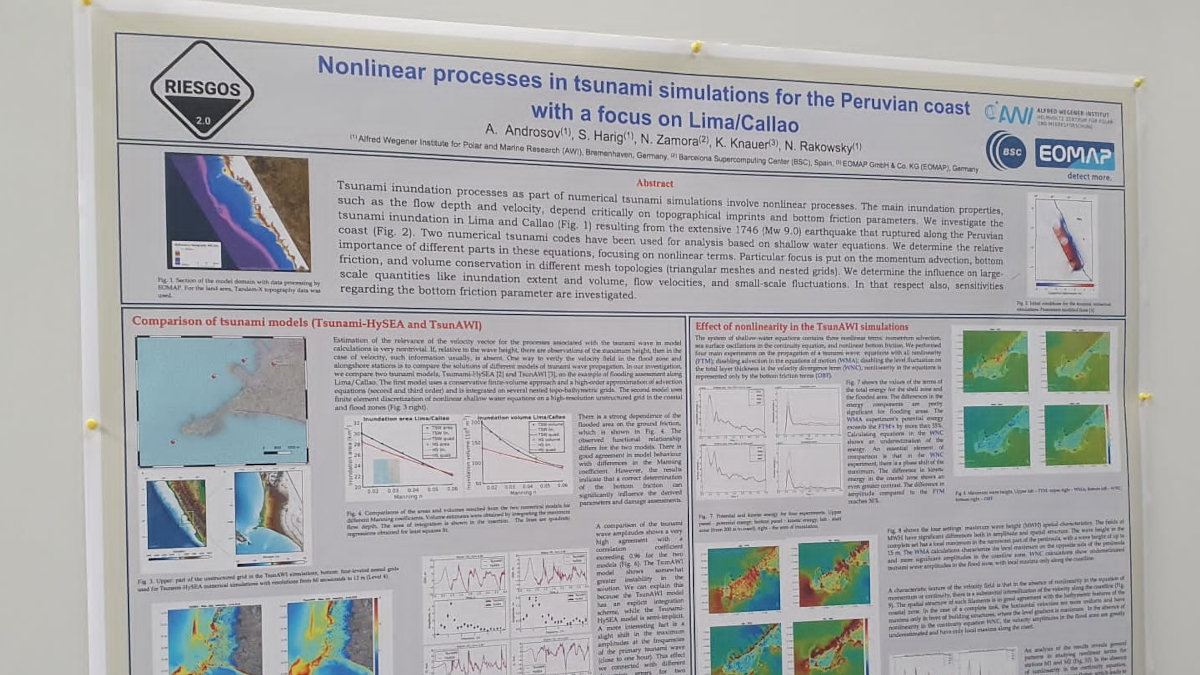
03.02.2023
Risk analysis and management commonly employs natural hazard scenarios, for evaluating potential consequences and the effectiveness of mitigation measures. Although representative natural hazard scenarios are typically based on historical records and expert local knowledge, there is no methodology for systematically selecting them, considering their potential impact in buildings and critical infrastructure. For filling this gap, Hugo Rosero and Prof. Daniel Straub from the Technical University of Munich proposed to define a scenario that is representative for a certain degree of loss, for example, the 100-year loss, as the most likely one among all possible scenarios leading to this loss. Taking basis in a generic model of natural hazards and their impact on spatially distributed engineering systems, such as a power network, they developed algorithms that enable an efficient evaluation of these scenarios. More details can be found in the article “Selection of representative natural hazard scenarios for engineering systems”, published in the Journal Earthquake Engineering and Structural Dynamics.
23.01.2023
Juan Camilo Gomez Zapata (PhD candidate within the RIESGOS project at GFZ) successfully defended his doctoral thesis at the University of Potsdam on January 23rd, 2023. His supervisors, Prof. Dr. Fabrice Cotton, Dr. Massimiliano Pittore, and the other members of the committee (made of distinguished researchers from Italian, British, and German institutions) decided on a final grade of Magna Cum Laude.
The main objective of his Ph.D. thesis was related to the development of multi-hazard risk models in the field of natural hazards (earthquakes, tsunamis, volcanic hazards) for large-scale urban building stocks. These developments are mainly motivated by the following issues:
- In risk calculations, exposure models (e.g. the number and location of buildings/people) are often the weak point of the assessment. These models have a low spatial resolution and are not adapted to multi-hazard risk calculations.
- The current risk models do not take into account the cumulative damage of hazards operating in cascade.
Juan Camilo Gomez Zapata has been addressing these challenges in an innovative way:
- He has shown that the resolution of exposure models can be improved by integrating crowdsourcing and remote sensing data. He has shown that the improvement of the resolution of these models has a significant impact on the impact calculations performed during seismic risk scenarios for the city of Valparaíso (Chile).
- He has developed a new method to take into account the damage generated by each hazard (e.g. earthquakes) to calculate the “cumulative” damage due to the next hazard (e.g. tsunami) in a cascade process. In this mathematically rigorous approach, the practical aspects related to the different vulnerability models used for each hazard are taken into account. This method was tested in the city of Lima (Peru) and it ultimately allowed to separate the impact of earthquakes and tsunamis.
For more details on the topic, you may read through the corresponding scientific articles listed in the publications section of the website.
2022
07.12.2022
In the context of the application potentials and economic perspectives of RIESGOS 2.0, two virtual workshops were conducted by the SMEs geomer, 52°North and SLU in cooperation with the German Chambers of Commerce Abroad in Chile, Ecuador and Peru on 30.11.2022 and 07.12.2022. Thematically, the first workshop addressed risk management in the mining sector in the wake of floods and heavy rain events. The second workshop focused on applications in the agricultural and forestry sector. Here, on the one hand, risk management in the case of natural events and, on the other hand, the monitoring of agricultural and forestry areas was dealt with. In addition to the general presentation of the topics, the workshops aimed to present the SMEs’ services and products. Participants were companies from the three partner countries Peru, Ecuador, and Chile, which are mainly active in the fields of mining as well as agriculture or forestry. The lively discussions at the end of each workshop showed the companies’ great interest and need for the geomer, 52°North, and SLU applications.
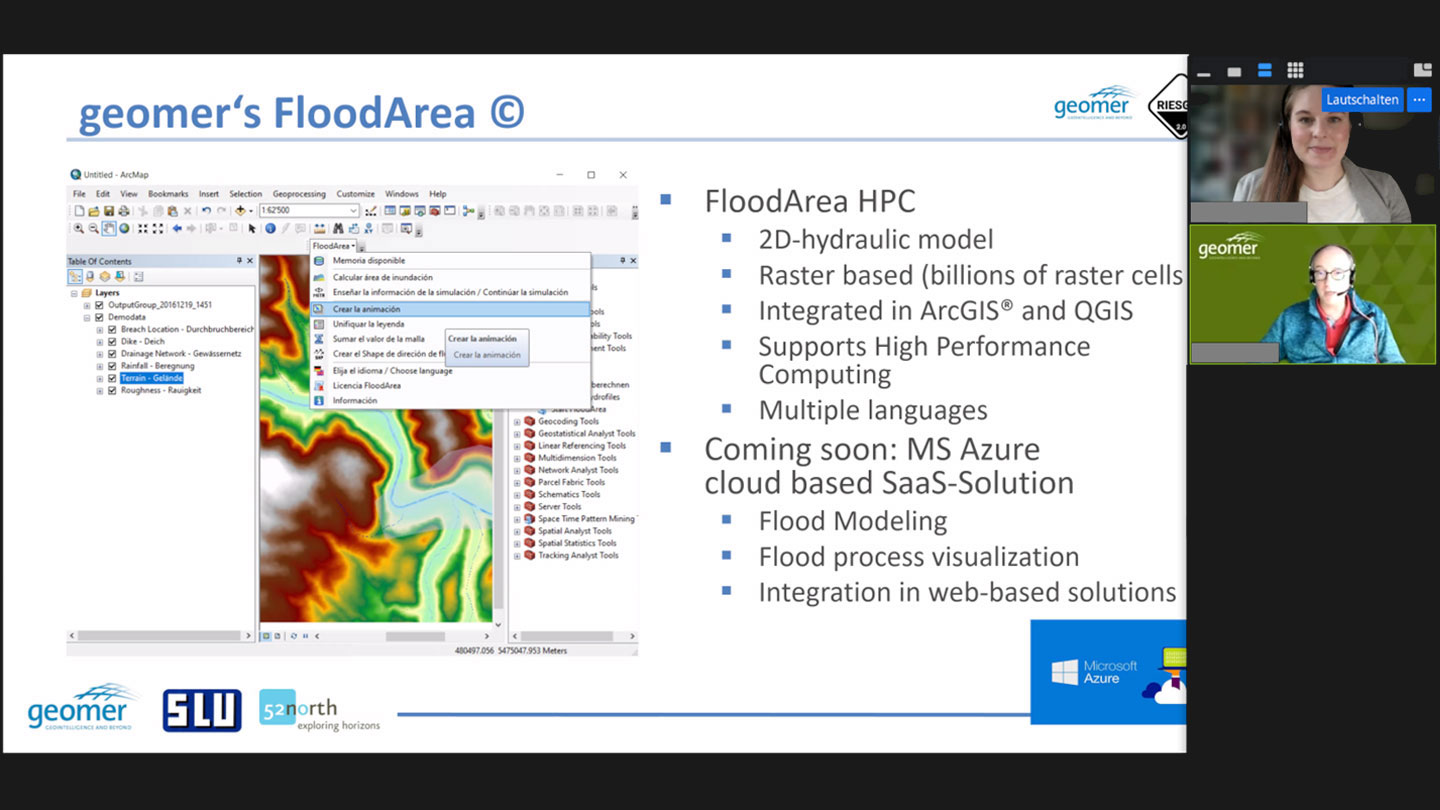
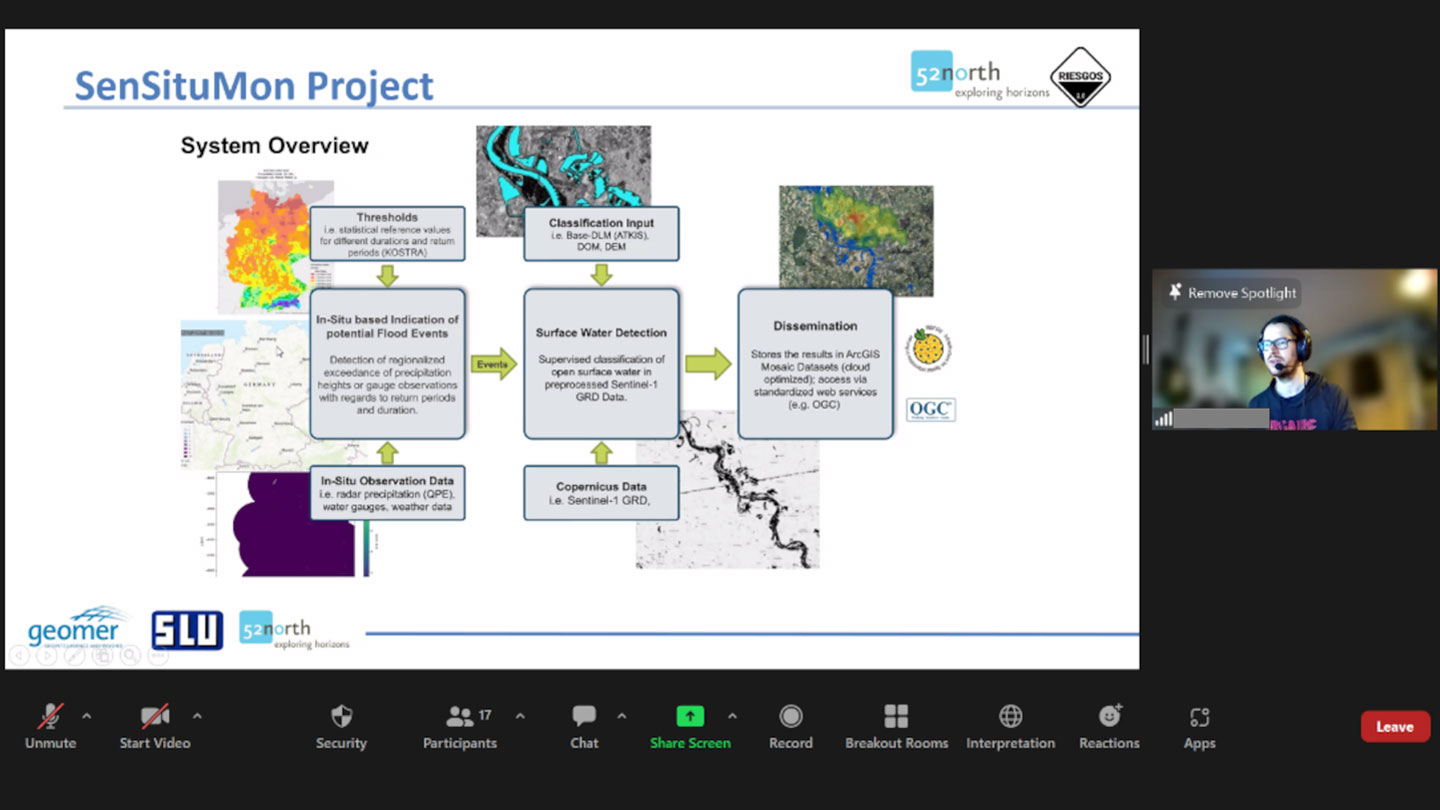
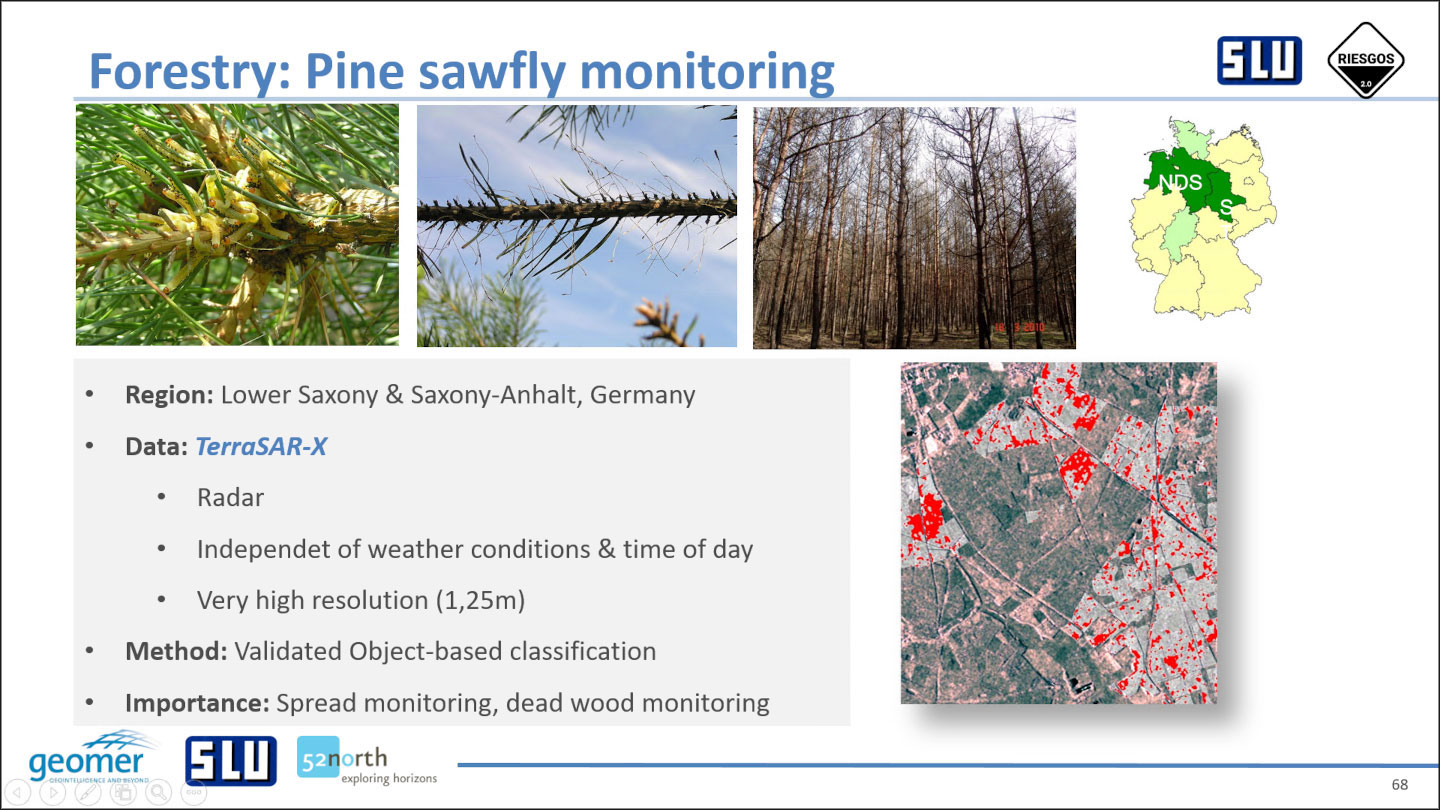
21.10.2022
Prof. Rodrigo Cienfuegos, Professor at the Pontifical Catholic University of Chile and Director of the Centre of Excellence CIGIDEN, visited the German Aerospace Center (DLR) and the German Research Centre for Geosciences (GFZ) from 17 to 21 October 2022.
There has been long-standing contact with Prof. Cienfuegos since the founding of CIGIDEN in 2012, within the project context of RIESGOS. The guest visit took place at the same time as the RIESGOS 2.0 annual meeting, so that the stay was characterized by many discussions and exchanges with the German project partners. In a guest lecture, Prof. Cienfuegos presented the research lines of CIGIDEN and gave an insight into the planned continuation of the centre. In addition, current research work in the context of multi-risk analyses and potential cooperation opportunities with colleagues at DLR and GFZ were discussed during the stay.
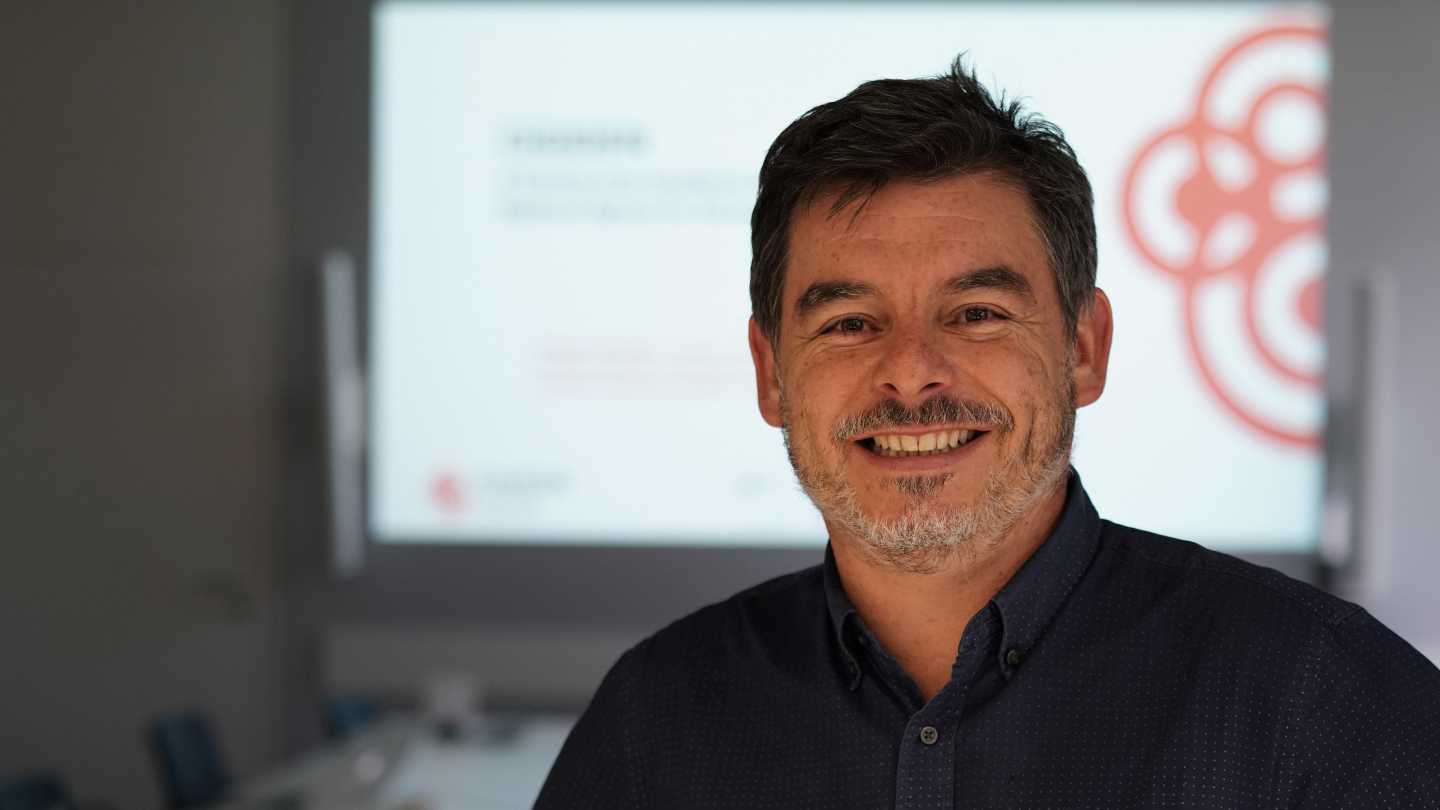
20.10.2022
From 18 to 19 October 2022, the RIESGOS 2.0 team met for their annual meeting. After more than 2 years of digital exchange, this time the meeting took place in presence. After short presentations of the most important work during the past project year, the team had an intensive exchange on upcoming tasks. Among others, the interim results from the dialogue process with actors in Chile, Peru and Ecuador were presented and the current status of the integration process of the demonstrator for a multi-risk information system at institutions in South America was evaluated. The planning of the work within the remaining project time was continuously discussed and structured. For instance, the next steps within the cross-cutting subject of “uncertainties” were determined and topics to be worked on by the IT development team were discussed. Besides the personal reunion, the participation and guest lecture by Prof. Rodrigo Cienfuegos (CIGIDEN, Chile) was certainly one of the many highlights of the 2-day meeting.
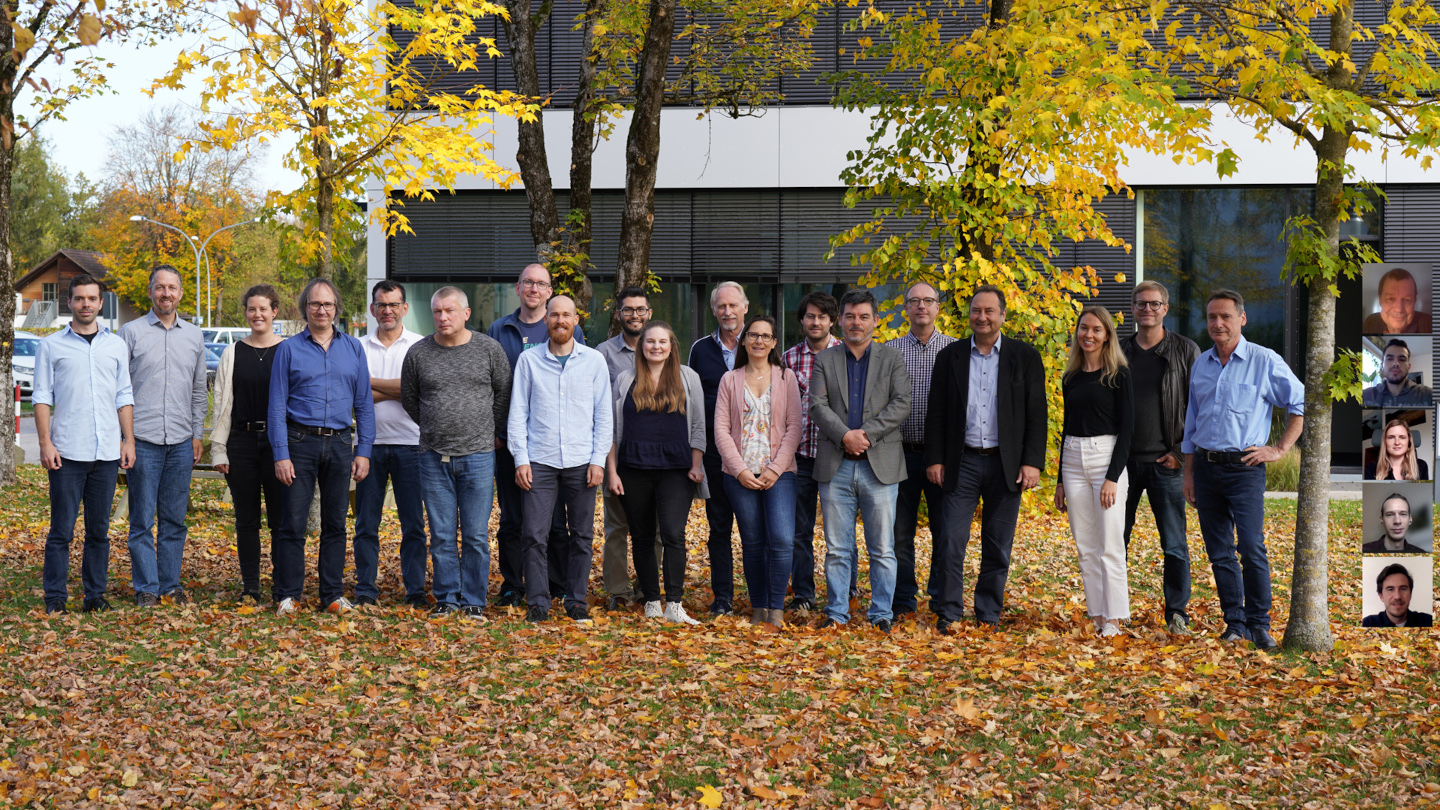
30.09.2022
After a longer break due to Corona, a small group of the RIESGOS 2.0 team was able to travel to Chile from 26 to 30 September 2022. During the stay, an intensive exchange took place with the CIGIDEN centre of excellence and the Chilean Institute for Disaster Resilience (Itrend). Among other things, they were jointly invited to a workshop at the disaster management authority ONEMI, where work on the scenario-based approach and multi-risk analysis was presented and discussed. After 3 days in Santiago de Chile, the team travelled on to the project pilot area Valparaíso. Together with ONEMI Region Valparaíso, a workshop was held at the Hydrographic and Oceanographic Service of the Navy (SHOA) on 29 September 2022 as part of the dialogue process organised by RIESGOS. Facilitated by DIALOGIK, local stakeholders were invited to discuss the RIESGOS demonstrator with regard to its potential use as a tool for situation assessment and initial assessment in the aftermath of a disaster. Although the tool was primarily designed for risk analysis, it emerged during the dialogue process that the tool could also be used for use cases where insufficient information is available. Workshop participants also referred to the use of the demonstrator as an exploration tool to run through different scenarios and compare the impacts of a possible disaster.
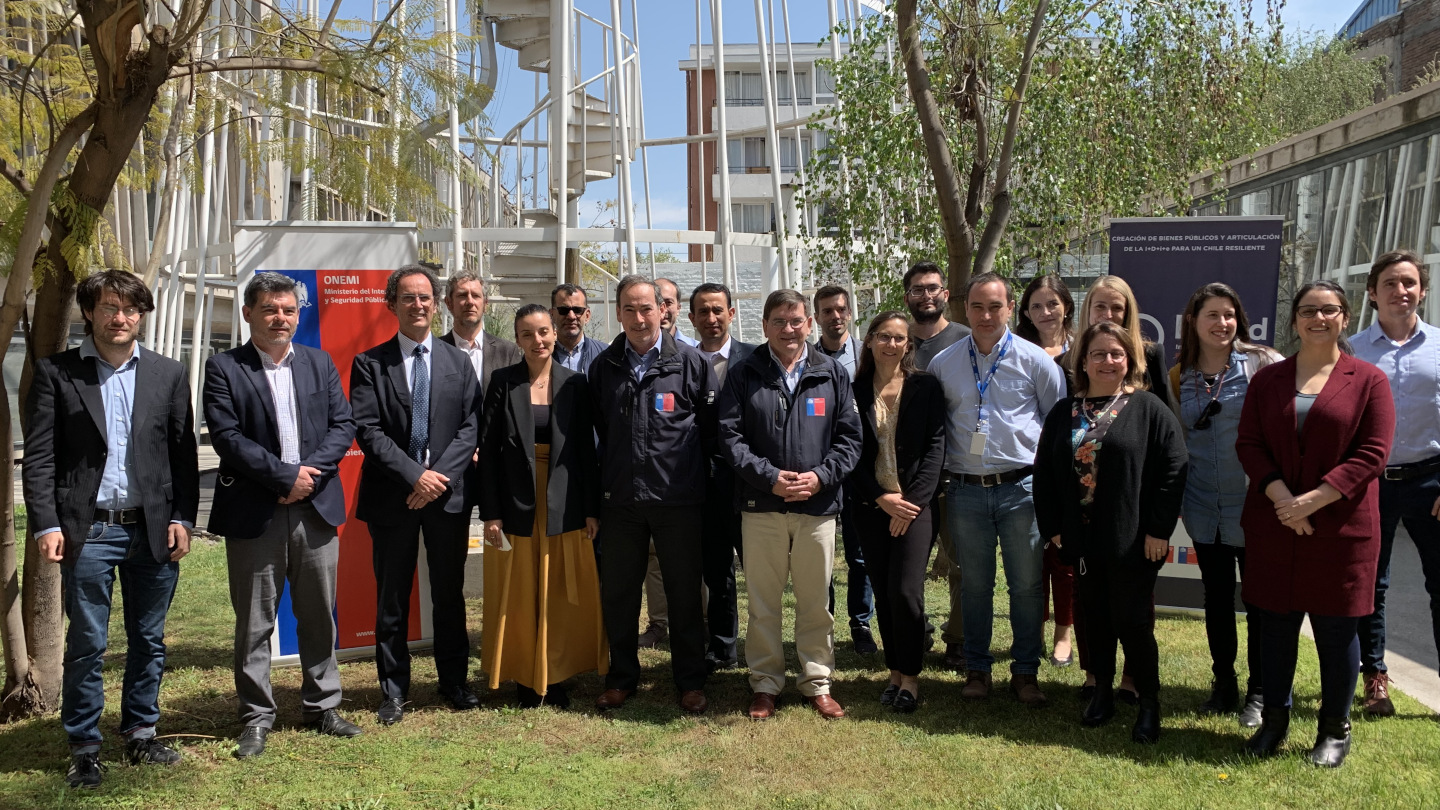
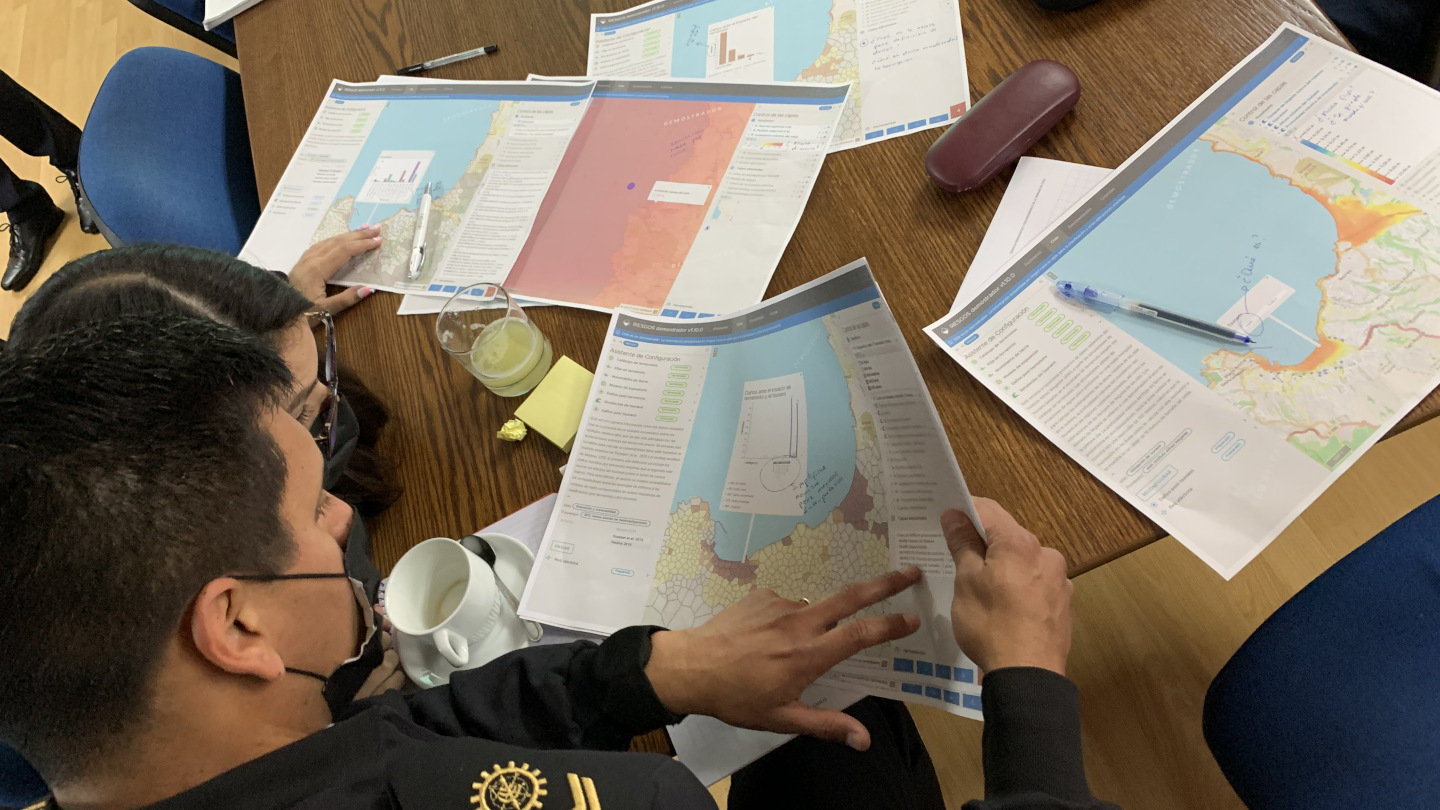
26.09.2022
From 19 to 23 September 2022 a training on Web Processing Services (WPS) and their integration in the multi-risk analysis tool (demonstrator) developed by RIESGOS took place at CENEPRED (Centro Nacional de Estimación, Prevención y Reducción del Riesgo de Desastres) in Lima. The training was conducted on site by experts from the RIESGOS 2.0 project in hybrid form. In addition to CENEPRED, staff from the Ministry of Housing, Construction and Sanitation (MVCS) also participated in the training. Training contents ranged from setting up a WPS server to integrating new data and integrating the service into the tool’s graphical user interface. At the end of the training week, possible further use cases for the use of WPS were discussed and next steps were agreed upon.
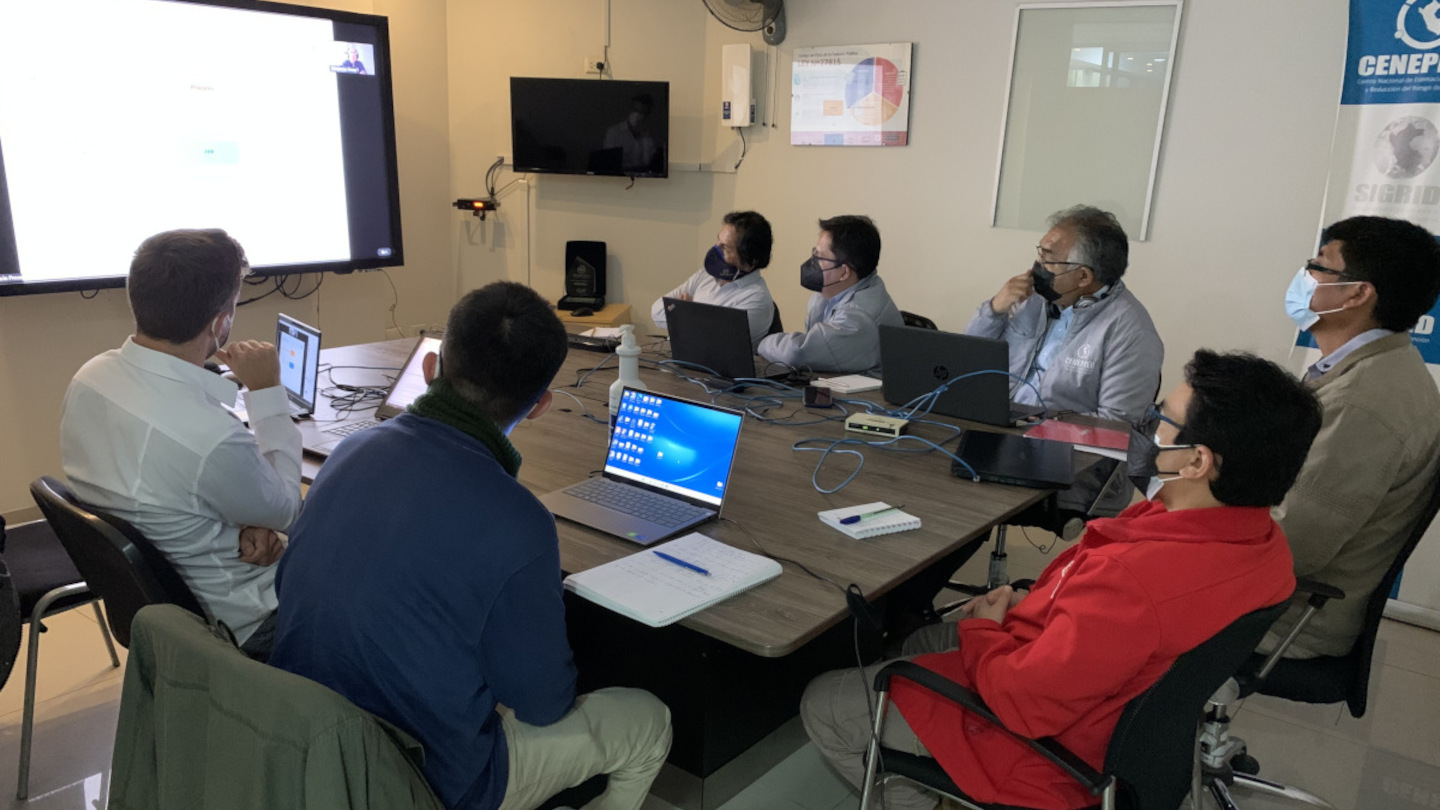
31.08.2022
On 15 August 2022 four scientists of the Landslide Research Group of the Technical University of Munich (TUM) started into a two-week field research stay in Ecuador. After a meeting with Dr. Daniel Andrade from the local research partner IG-EPN, the group prepared for field work at Chimborazo volcano. Recent secondary lahars occurred in the glacier fore field and extended into populated areas. In order to further analyse the triggering of these lahars, the TUM team conducted geophysical measurements (electrical resistivity tomography) on the debris-covered glacier and performed thermal imaging studies. Despite the altitude of the study area and strong winds, the effort was rewarded with novel data and fantastic views.
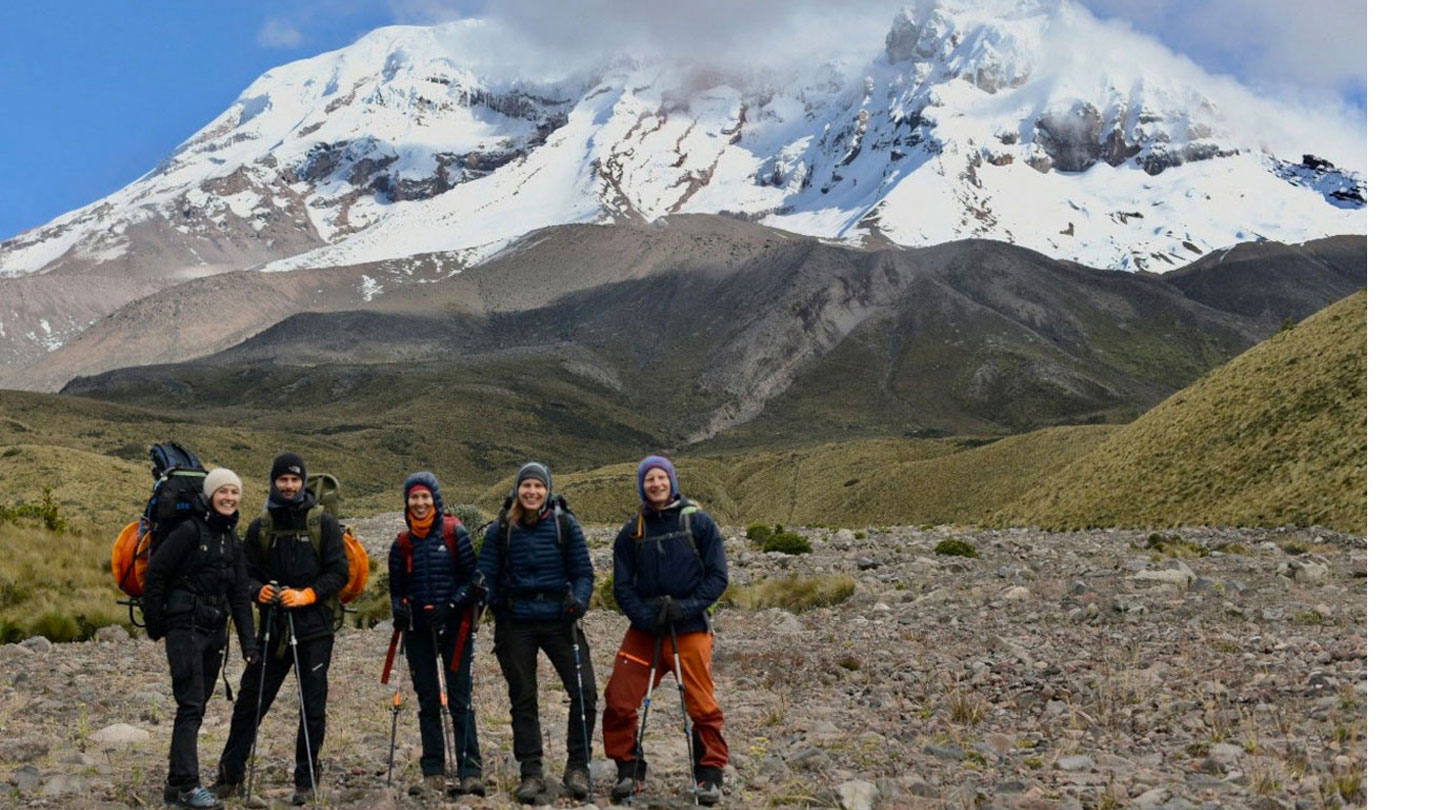
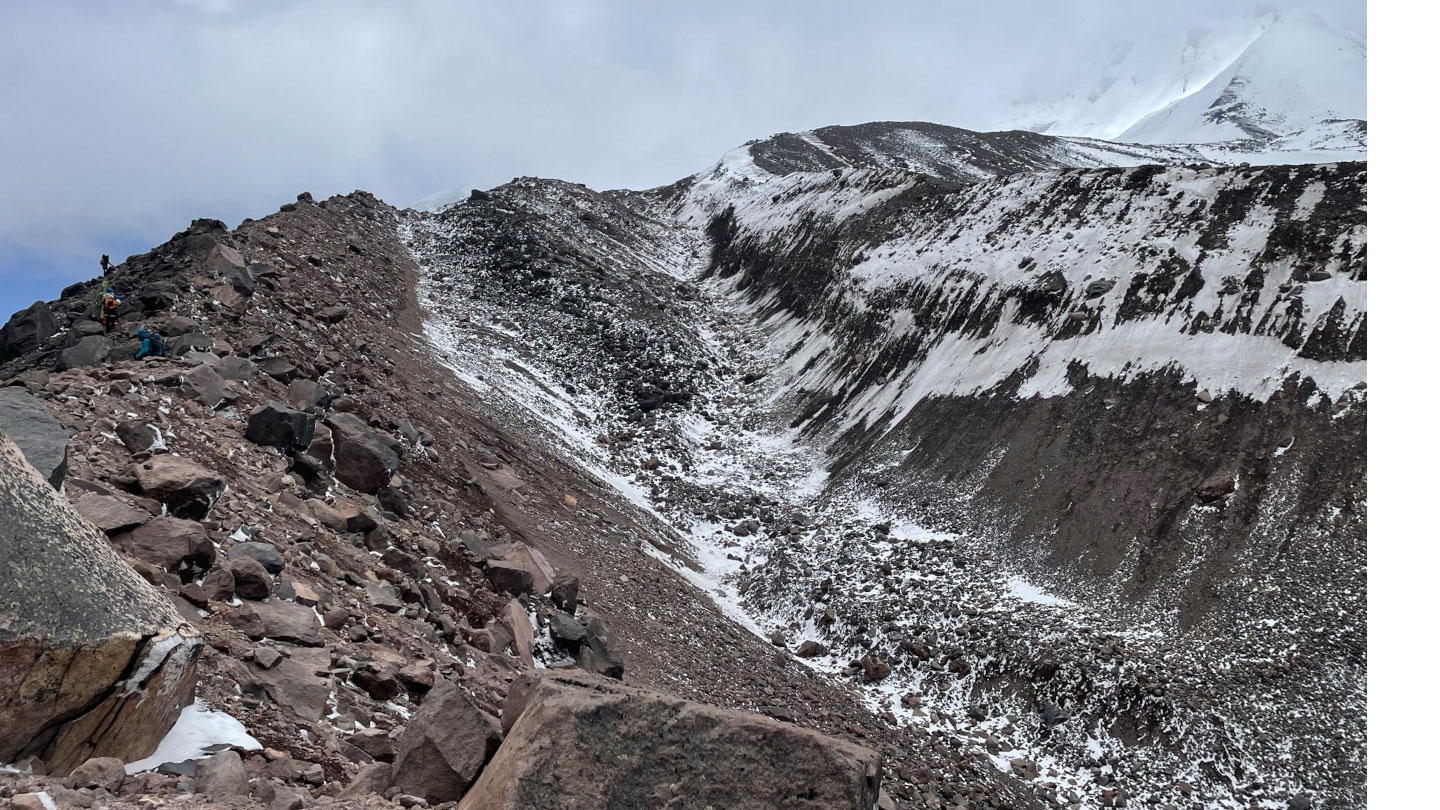
15.07.2022
After conducting workshops and discussions in Peru (March and May 2022) and Ecuador (May 2022) as part of the dialogue process on the topic “Multi-risk analysis and dealing with uncertainties”, the current findings were captured and interim conclusions drawn. This state was discussed during a meeting of the RIESGOS 2.0 project team and used as input for the definition of the next steps. The meeting took place in hybrid form at the GFZ in Potsdam on July 14 and 15, 2022. The topic “uncertainties” was focus on the second day of the meeting. For the kick-off Prof. Ortwin Renn (DIALOGIK/IASS) gave a keynote speech entitled “Dealing with uncertainties in the context of planning and risk management of natural hazards”. In the following the team discussed, among other things, how to deal with uncertainties and how to communicate them, as well as about new approaches dealing with complex risks such as resilience analysis.
16.05.2022
After 2.5 years of purely digital exchange, a small group of the RIESGOS 2.0 team was able to travel to Ecuador and Peru in May (2. - 13.5.2022) to finally conduct on-site workshops and bilateral meetings. The trip focused mainly on conducting workshops in the context of the dialogue process on “Utilising information from multi-risk analysis" (see news entry of 23.03.2022) as well as on discussions regarding a possible implementation of the RIESGOS Demonstrator.
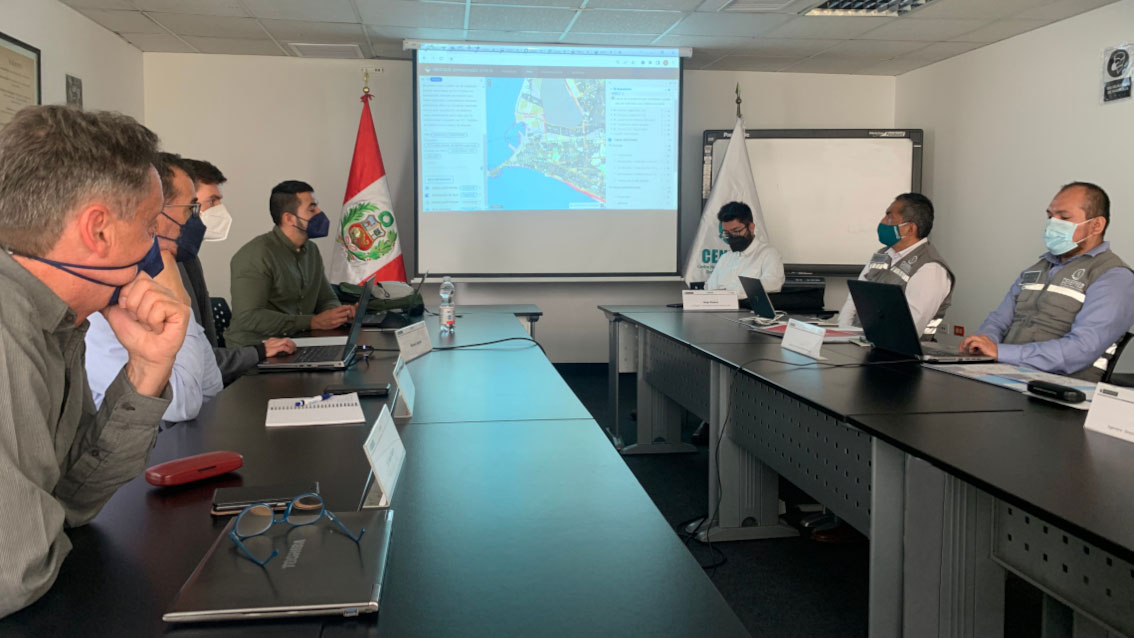
07.04.2022
The International Air and Space Fair (FIDAE) took place from 5 to 10 April 2022. As part of the online event, the “Latin American Remote Sensing” (LARS) conference was organised, which this year included a special session on disaster management and monitoring. Dr. Christian Geiß (DLR) gave a presentation entitled “Remote Sensing Techniques for Natural Hazard Exposure Assessment”. In this context the recent results on natural hazard risks of the metropolitan area of Santiago were discussed with the colleagues from Chile. Earth observation techniques were identified as a valuable tool to reduce uncertainties in existing risk models and to improve the spatial level of detail – at this point the German consortium can make a valuable contribution to the local actors in Chile. Four colleagues from CIGIDEN (Gabriel González (UCN), Carolina Martínez (UC), Patricio Catalán (USM) and Jorge León (USM)) also contributed in the session with technical presentations.
23.03.2022
The project RIESGOS 2.0 just started a dialogue process on the “Utilising information from multi-risk analysis”. The aim of the dialogue process is to discuss together with local stakeholders the challenges of using information in disaster risk management processes, communication and planning. A particular focus is put on the importance of uncertainties - which are coming with data and model results - and how these affect the interpretation of the results. Multi-risk information and products generated by the RIESGOS Demonstrator were used as the basis for the dialogue which is taking place in all RIESGOS partner countries, i.e. Chile, Peru and Ecuador.
The first two workshops took place on 16 and 17 March 2022 in Lima, Peru. Christian D. León (DIALOGIK) moderated the workshop on site. Together with stakeholders from the district administrations of Los Olivos and Villa El Salvador in Lima as well as experts from the Centro de Estudios y Prevención de Desastres (PREDES), product examples of the demonstrator were discussed and validated with regard to their use for concrete application cases. During the workshop, there was also a live virtual connection with experts from the project team in Germany to answer specific questions about the model assumptions and visualizations.
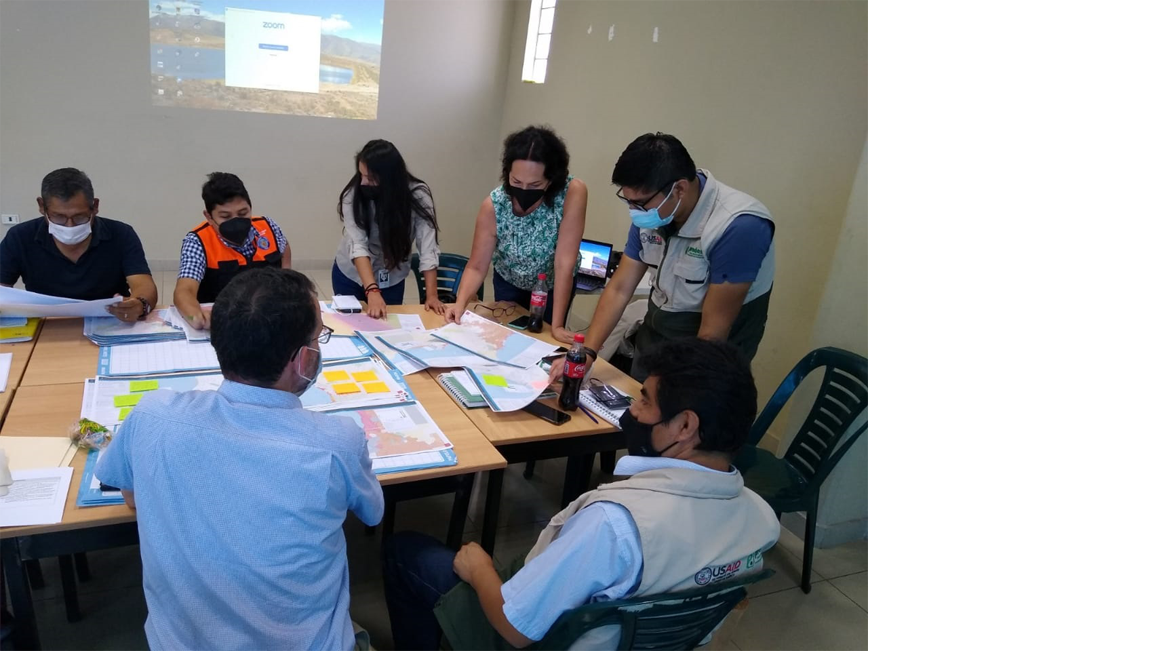
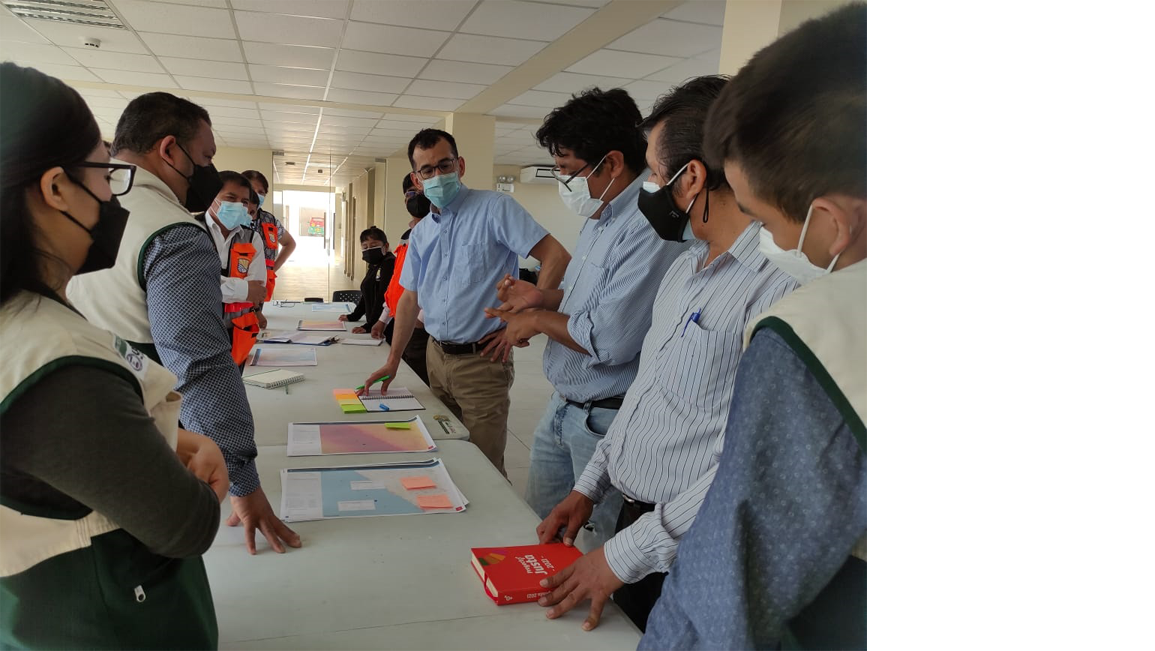
Further workshops are planned in Peru, Chile and Ecuador. If you would like receive more information, please kindly write an email (see contact information).
06.02.2022
Juan Camilo Gomez-Zapata and Massimiliano Pittore (GFZ) are the common authors in two publications that have been recently accepted in two high-impact Journals.
The first one has been published in the Journal “Bulletin of Earthquake Engineering”. It counted with the valuable guidance of Prof. Dr. Fabrice Cotton as well as other co-authors’ contributions, among them, Paula Aguirre and Hernán Santa María (CIGIDEN, Chile). This paper is entitled „Epistemic uncertainty of probabilistic building exposure compositions in scenario-based earthquake loss models”. That study presents a method that is made up of a logic tree arrangement that is transversal to the construction of probabilistic exposure models. This is a Bayesian approach that accounts for expert-based assumptions on the composition of a building portfolio as well as surveyed data. This constitutes a novel method to explore the epistemic uncertainties related to the definition of the building exposure model (i.e. selection of building classes, fragility functions, prior assumptions, observed or neglected attributes during surveys, among others), and how they might be propagated throughout the scenario risk chain.
The second paper is entitled „Towards a Sensitivity Analysis in Seismic Risk with Probabilistic Building Exposure Models: An Application in Valparaíso, Chile Using Ancillary Open-Source Data and Parametric Ground Motions“. It has been published in the Special Issue “Advanced Methodology for Developing an Inventory Database of Human-Made Structures in Urban Areas for Assessment of Risk and Vulnerability” of the Journal “ISPRS International Journal of Geo-Information”. It constitutes the continuation of the Master thesis of Raquel Zafrir submitted in 2020, who continued to support this publication. In addition, there were inputs from Yvonne Merino (CIGIDEN, Chile). This study proposed updating an existing exposure model through a probabilistic approach by integrating ancillary data from OpenStreetMaps (OSM). A worst-case earthquake scenario is presented to calculate direct economic losses and highlight the degree of uncertainty imposed by exposure models in comparison with other parameters used to generate the seismic ground motions within a sensitivity analysis.
Along with these two publications, two data repositories were made available:
• RRVS Building survey for building exposure modelling in Valparaiso and Viña del Mar (Chile)
• Scripts to generate (1) attribute-based fuzzy scores for SARA and HAZUS building classes, and (2) probabilistic inter-scheme compatibility matrices. An application on the residential building stock of Valparaiso (Chile) for seismic risk applications
2021
06.12.2021
Juan Camilo Gomez-Zapata, Nils Brinckmann, Fabrice Cotton, and Andrey Babeyko (GFZ) together with two former colleagues at the same institution, Massimiliano Pittore, and Raquel Zafrir, and Sven Harig (AWI) have recently published an article in the Journal Natural Hazards and Earth System Sciences. It is entitled: “Variable-resolution building exposure modelling for earthquake and tsunami scenario-based risk assessment: an application case in Lima, Peru”. That study presents a method to generate a set of variable-resolution boundaries based on central Voronoi tessellations (CVTs) to spatially aggregate the residential building exposure model of Metropolitan Lima (Peru). Their geo-cell sizes are inversely proportional to underlying distributions that account for the combination between hazard intensities and exposure proxies. These exposure models are used as inputs to assess their physical vulnerability (damage estimates and economic losses) to independent earthquake and tsunami scenarios. This study shows the importance of considering the compatibility between hazard intensities in the derivation of these aggregation models, their computational efficiency and associated uncertainties in risk-loss estimates and their mapping. This article also cites several freely accessible datasets of the GFZ data services that have been made available as part of the open-source strategy of the RIESGOS 2.0 project.
01.12.2021
On 30 November 2021, colleagues met in a hybrid meeting (2G+ rule) to exchange views on the topic of “uncertainties in the context of multi-risk analyses from the user perspective” within the RIESGOS 2.0 project. Next to the exchange of experiences in dealing with uncertainties in other project contexts, the focus of the one-day meeting was on the elaboration of an implementation strategy including the planning of (virtual) workshops and webinars.
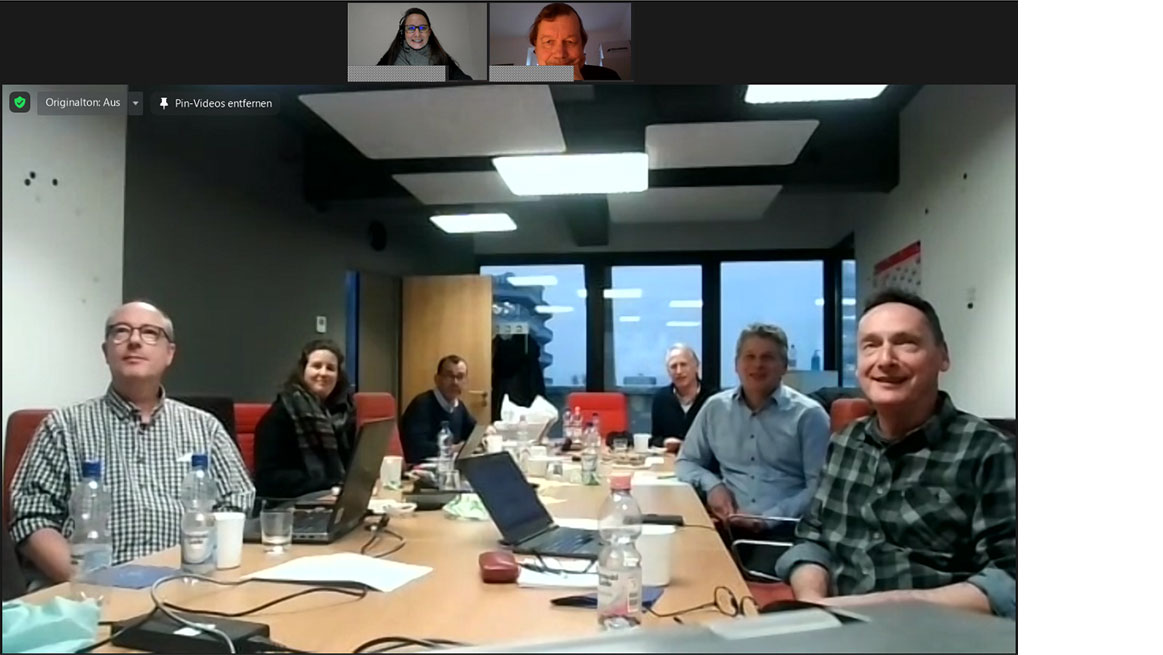
29.10.2021
From 26 to 28 October 2021, the Federal Ministry of Education and Research (BMBF) hosted the international CLIENT conference. The kick-off event on the first day took place in hybrid form live from the “Umweltforum” Berlin and virtually. The conference offered various opportunities for exchange, including region-specific sessions, project presentations and thematic workshops on cross-cutting issues.
In the workshop “Natural Risks”, Elisabeth Schoepfer presented the preliminary results of RIESGOS / RIESGOS 2.0 and discussed with the participants in a virtual panel challenges in project work and shared respective solutions. In the regional workshop “South America”, participants exchanged on international cooperation in times of the pandemic. An overview of all CLIENT II projects can be found on the CLIENT website.
20.10.2021
The annual meeting of the RIESGOS 2.0 project took place from October 18 to 19, 2021. The project team reported on the work done since March 2021 on the various topics in the areas of research, development and application. In addition, the current status on the partner dialogue and the integration of the demonstrator for a multi-risk information system at institutions in Chile, Peru and Ecuador was reported. In addition to the presentations, the virtual meeting was used to discuss the cross-cutting topic of “uncertainties” and to determine the next steps in the project.
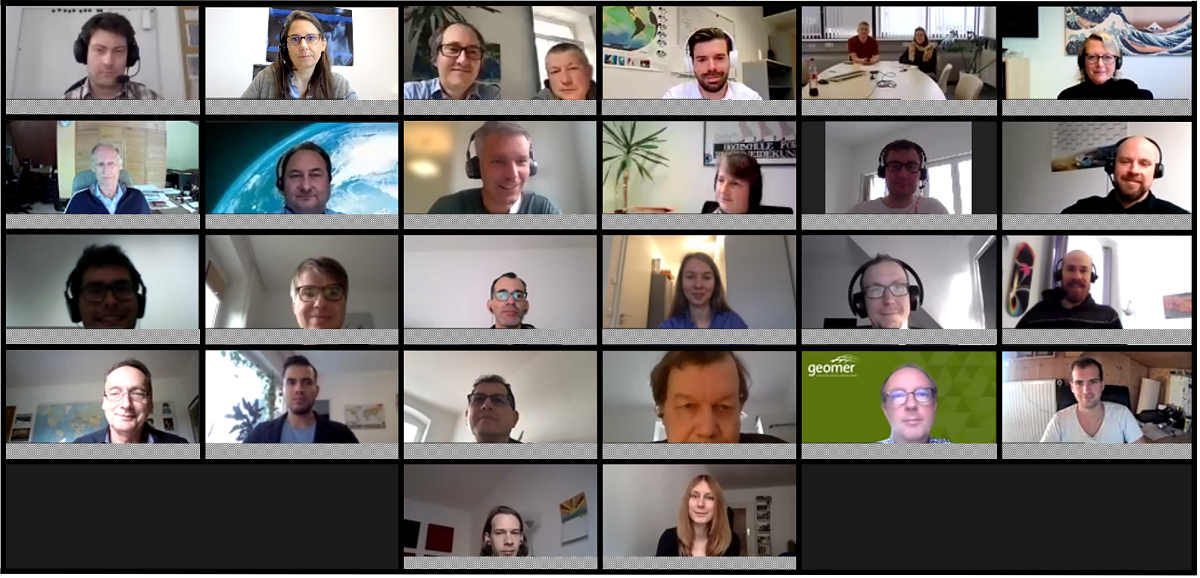
06.10.2021
The “37th General Assembly (GA) of the European Seismological Commission, ESC 2021” was held virtually from 19-24 September 2021. Juan Camilo Gómez Zapata (GFZ) presented a poster entitled “Exploring epistemic uncertainties of probabilistic building exposure models in scenario-based earthquake loss models”. This study gathers the collaborative efforts with colleagues of CIGIDEN in Chile about the uncertainties in defining the building composition of Valparaíso and their impacts in seismic risk.
The “Second International Conference on Natural Hazards and Risks in a Changing World 2021” took place in a hybrid format at the University of Potsdam from 5th to 6th October 2021. Juan Camilo Gomez Zapata (GFZ) presented an on-site oral presentation entitled “Scenario-based multi-risk assessment for consecutive earthquakes and tsunamis in Lima, Peru”. Besides the presented innovative approach, collaborative efforts with scientists from AWI and Peruvian institutions within this study were highlighted. In a joint authorship, GFZ (Juan Camilo Gomez and Henning Lilienkamp) and TUM (Hugo Fernando Rosero Vasquez) presented their work entitled “Increasing computational efficiency of seismic risk analysis for infrastructure networks”. This study focused on new paradigms about the efficiency in assessing the reliability of the electrical power systems of Central Chile after the occurrence of future earthquakes scenarios.
13.09.2021
As an outcome of their scientific collaboration RIESGOS 2.0 researchers (Patrick Aravena Pelizari, Christian Geiß, Hannes Taubenböck from DLR) and CIGIDEN (Paula Aguirre, Hernán Santa María, Yvonne Merino Peña from the Pontifical Catholic University of Chile) published an article on the automated seismic vulnerability related characterization of buildings.
The presented study evaluates the potential of the combined use of Deep Convolutional Neural Networks (DCNNs) and street-level imagery such as provided by Google Street View for the efficient large-area collection of vulnerability-related structural building characteristics. The proposed approach involves a hierarchical categorization workflow to structure the highly heterogeneous street-level imagery in an application-oriented fashion. Thereupon, state-of-the-art DCNNs are deployed to explore the automated inference of Seismic Building Structural Types as well as the material of the lateral-load-resisting system and building height. Experimental results obtained for the earthquake-prone Chilean capital Santiago show that the addressed building characteristics can be inferred with high accuracies. This underlines the potential of the proposed methodology for an efficient in-situ data collection on large spatial scales with the purpose of risk assessments related to earthquakes, but also other natural hazards (e.g., tsunamis, or floods).
02.08.2021
We are pleased to announce the launch of a Special Issue of the journal Natural Hazards and Earth System Sciences (NHESS) on Multi-risk assessment in the Andes region. The deadline for paper submission is 31 July, 2022.
The special issue aims at making a significant contribution to single-hazard and multi-hazard risk assessment, including exposure and dynamic vulnerability, and progressing towards the analysis of cascading effects. Specific topics of this special issue include, but are not limited to,
- new methods and techniques for (multi-)hazard scenarios, exposure, and vulnerability modelling;
- new methods and techniques for impact assessment, cascading effects, and loss estimation;
- design, development, and implementation of tools for the analysis of multi-risks;
- analysis and development towards practical applications for stakeholders and decision makers.
The special issue asks for contributions that address countries of the Andes region. Submissions for all manuscript types such as research articles, review articles, and brief communications are welcome.
Important note: During the manuscript registration process, it is important that the authors select the correct special issue through the selection of “Multi-risk assessment in the Andes region” from a drop-down list.
14.04.2021
On 14.04.2021 a planning workshop of the German RIESGOS 2.0 team took place. In the one-day online workshop, the second project phase of RIESGOS was further detailed and the next steps were determined. The team took particular account of the feedback and input from the preceding series of “RIESGOS Eventos Virtuales” events.
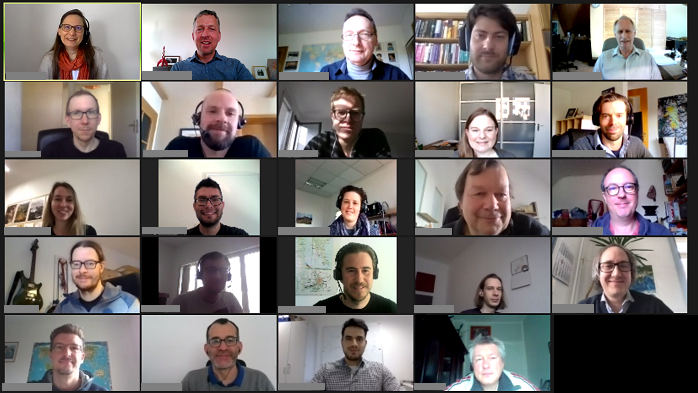
05.03.2021
The journal paper “Participatory Assessment of Multi Risks in Urban Regions - The Case of Critical Infrastructures in Metropolitan Lima” provides a comprehensive picture of risk governance and conceptualize an approach to dealing with multi-risks in the Metropolitan Region of Lima, Peru. Departing from the problem setting and the challenges for practice and science, the article is guided by the following research questions: First, how is systemic criticality currently addressed in Metropolitan Lima? Second, what are the barriers to stakeholder communication in multi-risk events? Third, which cascading effects contribute most to the impacts of extreme events? The findings are based on a participatory multi-method stakeholder approach that aimed at providing a comprehensive picture of risk governance and conceptualizing an approach to deal with systemic criticality. The overall results show that the electricity sector is the sector with the highest systemic criticality, followed by IT and emergency response. These results help to identify gaps in actors’ awareness of interdependencies and show the general criticalities of infrastructures with regard to both physical and actor-related factors. A better understanding of the given interconnection between sectors, but also of specific system elements, is an indispensable prerequisite for resilience building. Furthermore, the analysis underlines specific cooperation and communication needs between different stakeholders but also indicates the requirement for a prioritization of sectors in contingency plans and spatial planning.
01.03.2021
On 1 March 2021 the follow-up project RIESGOS 2.0 was officially launched. Further details can be found in the press release.
05.02.2021
In a large collaborative inter-institutional effort, 13 researchers, including scientists from the GFZ (Juan Camilo Gomez-Zapata, Massimiliano Pittore, Fabio Brill and Harald Spahn); TUM (Theresa Frimberger, Michael Krautblatter and Hugo Rosero-Velásquez); DLR (Michael Langbein and Elisabeth Schoepfer) and geomer (Kerstin Büche); together with local researchers from Ecuador: Fernando Barragán-Ochoa (APGR), Camilo Zapata-Tapia (GADPC) and Cristhian Parrado (Grupo FARO as part of GIZ) have recently published an article in the journal Sustainability on risk communication and perception. The article is entitled “Community Perception and Communication of Volcanic Risk from the Cotopaxi Volcano in Latacunga, Ecuador”. The study integrates quantitative risk assessment and semi-quantitative social risk perceptions to volcanic hazards, aiming for risk-informed communities. The iterative development concept of the RIESGOS demonstrator and its possible practical application for the interactive exploration and visualization of risk scenarios was described. The latter was tested by local stakeholders during workshops in Ecuador in 2018 and 2019. Moreover, the community risk perception in Latacunga was investigated through field surveys to map the social perception of volcanic risk factors.
28.01.2021
The project RIESGOS starts the new year with a series of events with our partners in Chile, Peru and Ecuador which will not take place on site in the countries due to the Covid-19 pandemic, but virtually. The events (“RIESGOS Eventos Virtuales”) are organized in the form of online conferences, virtual workshops, and webinars. The aim is to present and discuss RIESGOS project results with collaborating actors in Chile, Ecuador, and Peru. While individual workshops will be country-specific, the kick-off and closing events as well as webinars are taking place be cross-national. This is intended to facilitate exchange between the countries.
The kick-off event on 27.01.2021 was attended by around 200 participants and showed the great interest in the topic of multi-risks. The online conference featured presentations and panel discussions with representatives from academia, practice, and users to discuss the challenges and advances of multi-risk analysis in the Andes region.
Country-specific user workshops at national and local level serve to test the current version of the RIESGOS demonstrator with regard to applicability, usability and information content. The feedback flows directly into the further development of the demonstrator. In order to advance the research on multi-risk analyses, scientific workshops are specifically aimed at research institutions from the three partner countries. Webinars offer the opportunity to exchange ideas on selected topics (exposure and dynamic vulnerability, critical infrastructures, and risk communication) across countries.
The RIESGOS event series concludes the first project phase and heralds the start of the second project phase of RIESGOS 2.0.
2020
27.11.2020
On 26 November 2020 a virtual workshop was organized by RIESGOS with the German Chambers of Commerce Abroad (AHK) in Chile, Ecuador and Peru. The objective of this workshop was bringing together commercial partners from the RIESGOS project (geomer, 52North, EOMAP) with interested business stakeholders who are working in the domain of disaster risk management and civil protection in the 3 countries. After a brief introduction to the overall RIESGOS approach, the partners geomer, EOMAP and 52N presented selected services of their portfolios. During the three-hour workshop, potential business opportunities were discussed and possible cooperation in the development of geodata technologies and tools identified.
30.10.2020
Fabio Brill (GFZ), Silvia Passuni Pineda (INDECI/CEPIG), Bruno Espichán Cuya (INDECI/CEPIG) and Heidi Kreibich (GFZ) have recently published an article in the journal Geomatics, Natural Hazards and Risk on our flood damage modelling research, titled "A data-mining approach towards damage modelling for El Niño events in Peru”. The study demonstrates the potential of machine learning methods in combination with open geodata, to identify drivers of observed building damage from such a compound event. The investigation is based on a comprehensive empirical survey conducted by Peruvian state authorities in the aftermath of the severe coastal El Niño 2017, as well as on complementary satellite data products, and thereby exemplifies how systematic data collection can be utilized for advancing process understanding in vulnerability research. As a thematic key finding, the authors state that buildings in rural areas appear more vulnerable than in urban environments. While urban areas are often in the focus of overall risk mitigation, due to the concentration of exposed elements, this contrasting finding suggests that rural areas should not be neglected.
14.10.2020
The third annual meeting of the RIESGOS project took place virtually from 12 to 13 October 2020. For the past three years, the RIESGOS team has been working with partners in Chile, Ecuador and Peru to research and develop new methods for the analysis of multiple risks. The results are integrated via decentralized web services into a demonstrator for scenario-based multi-risk assessment. The project team reported on last year’s highlights on natural hazards, exposure and vulnerability and cascading effects including their impact on critical infrastructures. Furthermore, the current status of the demonstrator for a multi-risk information system and results from the user feedback process were presented. From the areas of risk communication and land use planning followed a report on the currently ongoing dialogue process in the pilot region Lima and Callao. The participating SMEs presented the planned virtual workshop on application potentials in cooperation with the German Chambers of Commerce Abroad in Chile, Ecuador and Peru. Besides the presentations, the virtual meeting was used to discuss the next steps in the project.
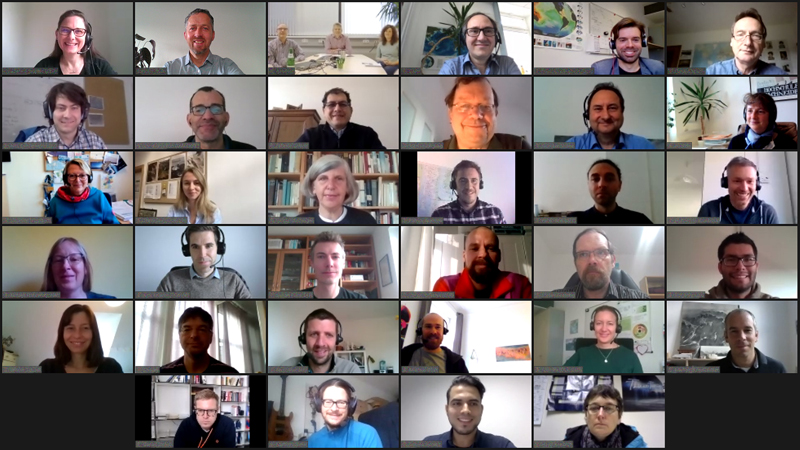
18.09.2020
Science and research flourish best if on the exchange between national and international players. To foster networks and to actively participate in the scientific community is also of crucial interest in RIESGOS.
The virtual conference „AOGS-EGU Joint Conference on New Dimensions for Natural Hazards in Asia“ takes place from 21-23 September 2020. Dr. Heidi Kreibich from the German Research Center for Geosciences (GFZ) is co-hosting a session on „Multi-hazard Relationship, Transient Effects and Dynamic Vulnerability“. See more details (programme and registration).
From September 23-24, IDRiM | International Society for Integrated Disaster Risk Management holds the “IDRiM Virtual Workshop for Interactive Discussions between Senior and Early-Career Scientists”. Dr. Gisela Wachinger from DIALOGIK is looking forward as co-moderator to the exchange on “Involving stakeholders to risk governance”. See more details (programme and registration).
04.08.2020
The Project RIESGOS just started a virtual dialog on “Communication of Multiple Risks and Effects on Critical Infrastructure - Implications for Disaster Risk Management in Peru”. This activity is performed in cooperation with the National Centre for Strategic Planning (CEPLAN) in the frame of the project RIESGOS by the partners DIALOGIK and plan + risk consult.
In order to avoid or prevent multiple risks in the population and critical infrastructure (e.g. drinking water, energy, transport, health), risk communication and territorial planning is more important than ever and requires coordination between public authorities, infrastructure operators and civil society. For the further discussion of these issues and the joint elaboration of recommendations, a virtual stakeholder dialogue was initiated. The virtual dialogue consists of two questionnaires, two virtual meetings and a final event.
If you would like receive more information, please kindly write an email (see contact information).
10.07.2020
Due to the travel and event restrictions caused by the Corona pandemic and the associated delays in the work plans, an application for a cost-neutral extension of the RIESGOS project by 4 months was made. The application was approved - the project finishes on 28 February 2021, accordingly. The application for a follow-up project RIESGOS 2.0 is currently under review.
08.05.2020
The RIESGOS project was present at the European Geosciences Union General Assembly 2020 with eight contributions. Due to the corona pandemic, the conference was held in an online format from 4 to 8 May 2020. However, this did not change the significance, visibility and scope of this event. On the contrary, it showed that the research community is standing together and has turned the challenges of the pandemic into opportunities. The RIESGOS team is proud to be part of this community.
11.03.2020
The source code of the RIESGOS demonstrator is now available on GitHub, a platform for creating and managing collaborative and free software.
The demonstrator for a multi-risk information system is based on a modular and scalable concept. Web services can be combined and managed in a targeted manner so that a potential user of the demonstrator can independently analyze and evaluate different multi-risk scenarios. An important added value of this modular and interoperable approach is the possibility to integrate different web services into already existing system environments.
The publication of the source code allows the individual use and further development of the RIESGOS framework. At the same time existing web services can be extended by new freely available services, thus increasing the number of components. Furthermore, the discussion on modelling cascading effects in complex multi-risk situations shall be stimulated.
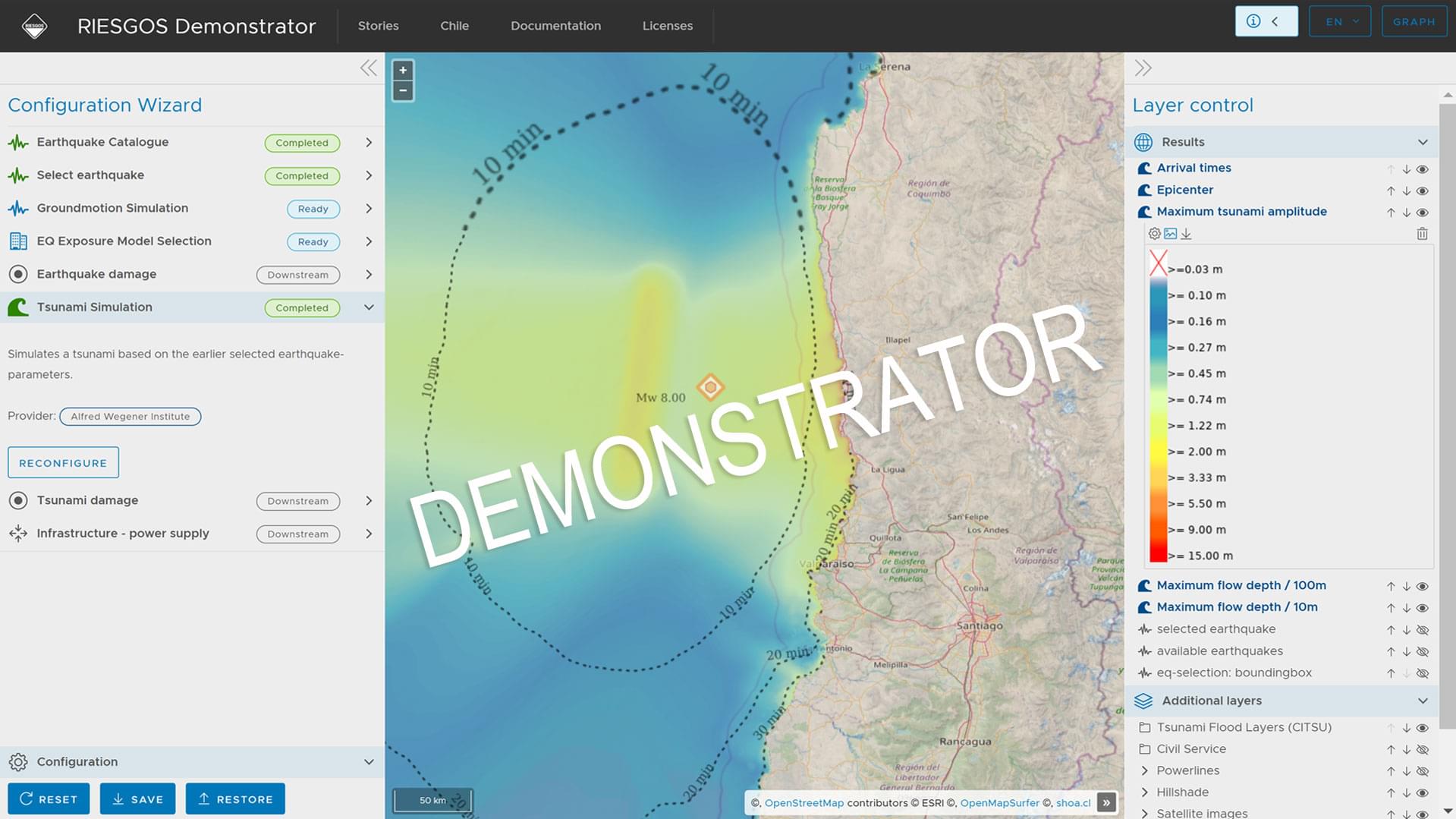
2019
11.12.2019
From 18 to 29 November 2019 the first version of the RIESGOS demonstrator for a multi-risk information system was presented in Peru and Ecuador. The German project team and its partners in Chile, Peru and Ecuador have worked for two years to develop the first version of the demonstrator. Close exchange with public authorities and civilian organizations dealing with disaster management takes place during the entire duration of the project. This assures that the needs of potential users can be identified and their feedback integrated. At the core of the information system are web-based services that enable open and flexible access to decentralized data and computing services.
The user workshops at national and local levels served to test the demonstrator in practice with regard to applicability, usability and information value. Feedback will flow directly into further development of the demonstrator. In addition to the technical presentation, bilateral meetings were arranged to strengthen cooperation and coordinate joint research activities.
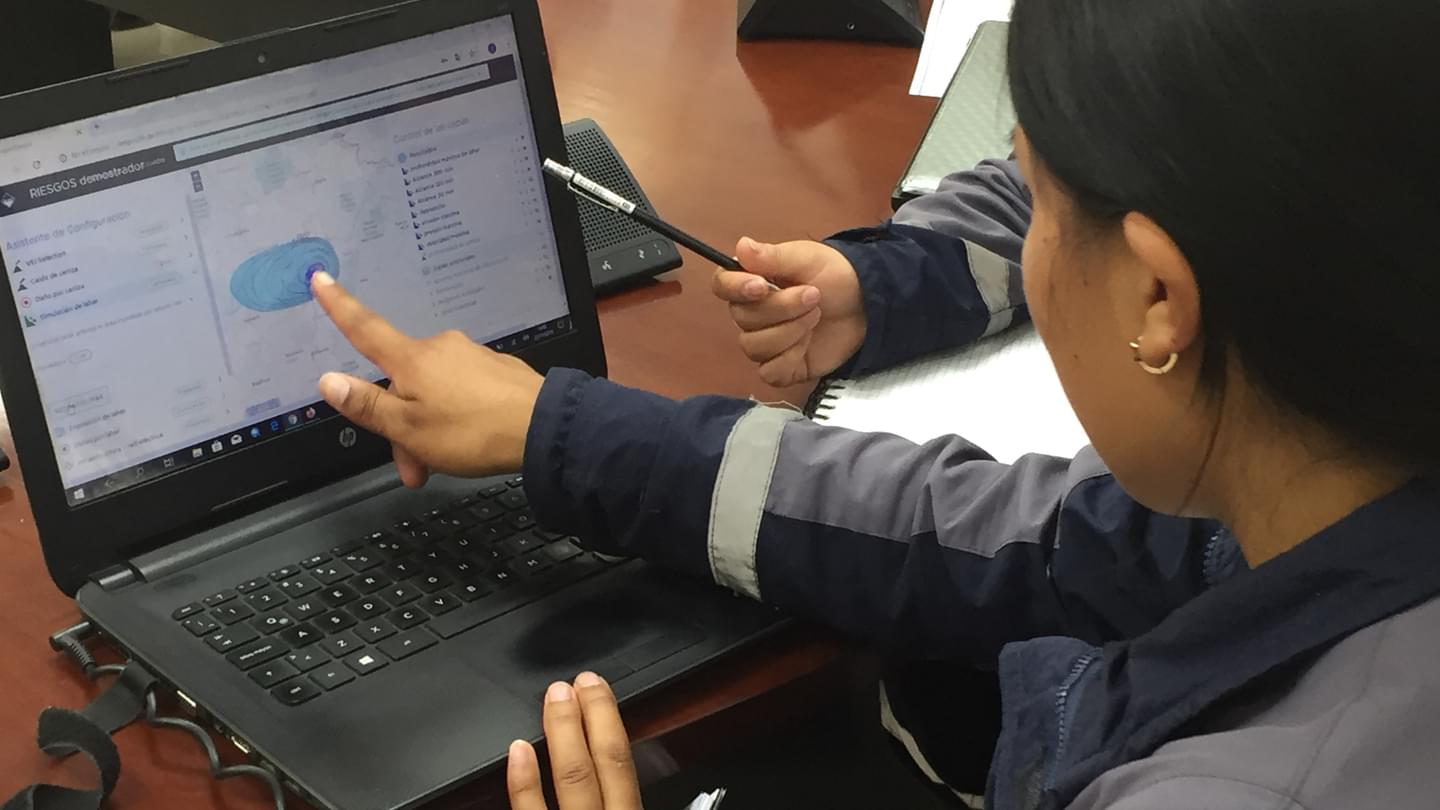
31.10.2019
Dr. Daniel Andrade from the Instituto Geofísico de la Escuela Politécnica Nacional (IG-EPN) in Quito visited the Technical University of Munich (TUM) and the German Aerospace Center (DLR) as guest scientist in the frame of the RIESGOS project from 15 - 26 October 2019. The IG-EPN is responsible for the assessment of seismic and volcanic hazards in Ecuador.
The visit was kicked-off with the participation of Daniel together with Theresa Frimberger (TUM) at the 3-day conference “Early warning systems for debris flows” in Bolzano, Italy. Daniel and Theresa are both studying lahars (debris flows) at the volcano Cotopaxi. The conference was the ideal platform to get in exchange with international colleagues on the current state of research.
In the following a 2-day workshop at DLR was taking place focusing on the implementation of the web service “Ash Dissemination” in the RIESGOS demonstrator. This web service is hosted by IG-EPN and already receives probabilistic hazard maps from IG-EPN, which will now be showed at the demonstrator presentation in Ecuador in November 2019.
During his stay at the TUM’s Department for Slope Movement, an intensive exchange on the TUM’s lahar modelling took place. Daniel presented current mapping and radar measurements activities of IG-EPN carried out in the area of the volcanic flank of Cotopaxi. Last but not least Daniel gave a lecture on “Lahars at Ecuadorian volcanoes: overview of the hazards and monitoring strategies” in the seminar series “Frontiers in Earth Sciences” in front of numerous students and lecturers of the LMU and TU Munich.
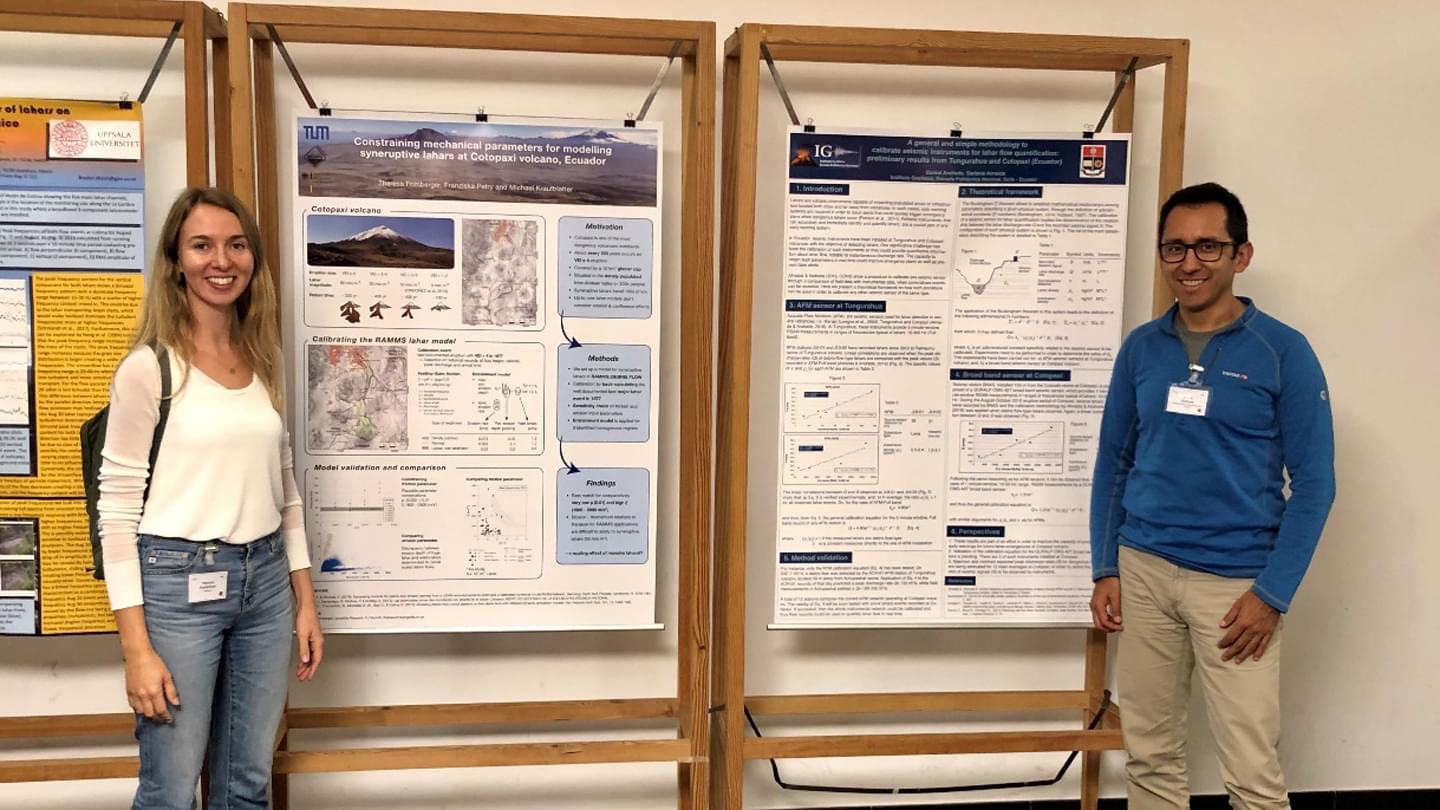
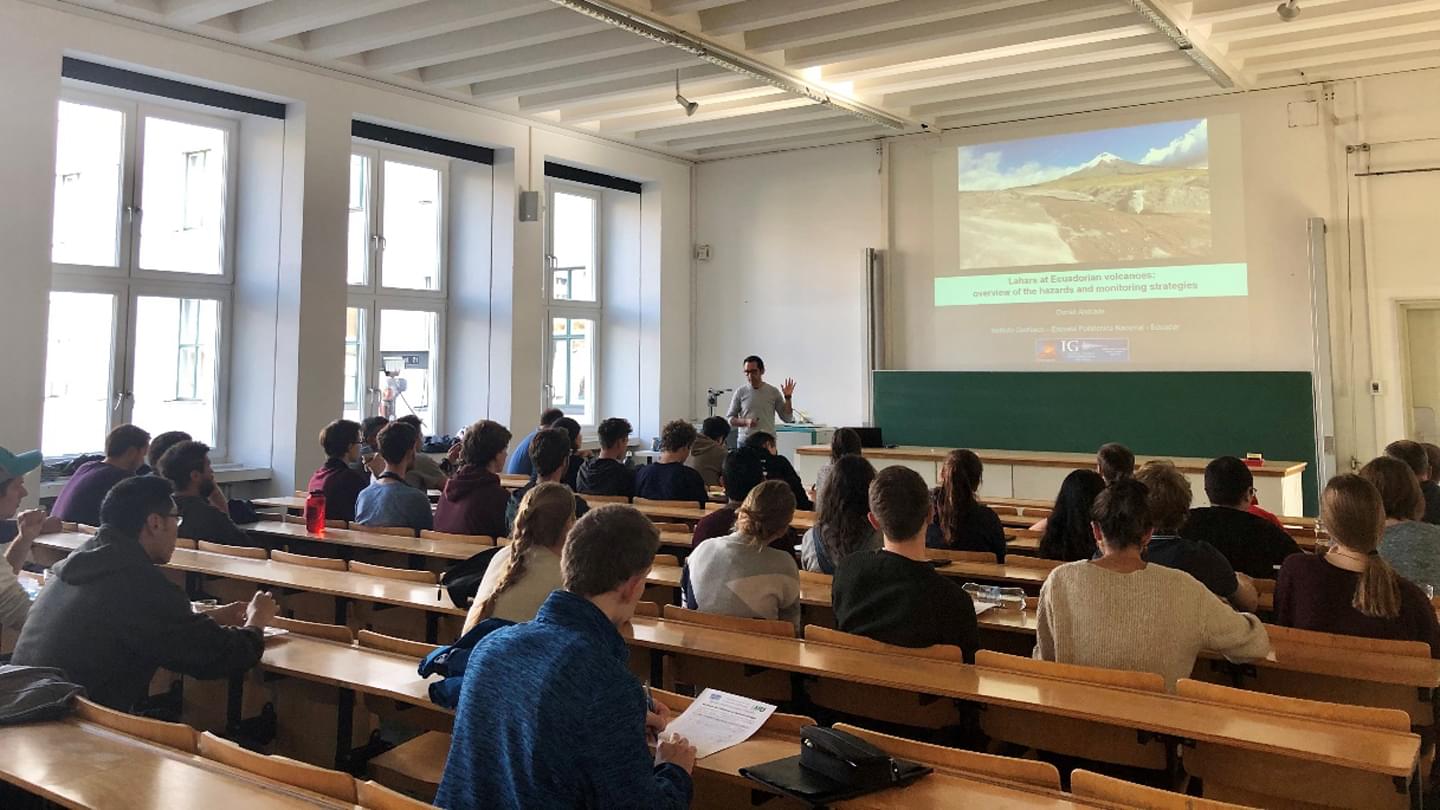
07.10.2019
The second annual meeting of the project RIESGOS takes place from 7 to 8 October 2019. For almost two years the RIESGOS team has been working on research and development of scientific methods to better understand complex interactions in the context multi-risk analysis in order to prevent future natural disasters. In addition to the presentation and discussion of the results of all project partners, the two-day meeting will focus on the presentation of the first demonstrator version for a multi-risk information system. This year’s annual meeting represents an important milestone in the project RIESGOS, as the work will be presented later this year in user workshops in Chile, Ecuador and Peru. And accordingly the next development steps will be defined jointly with the South American research partners.
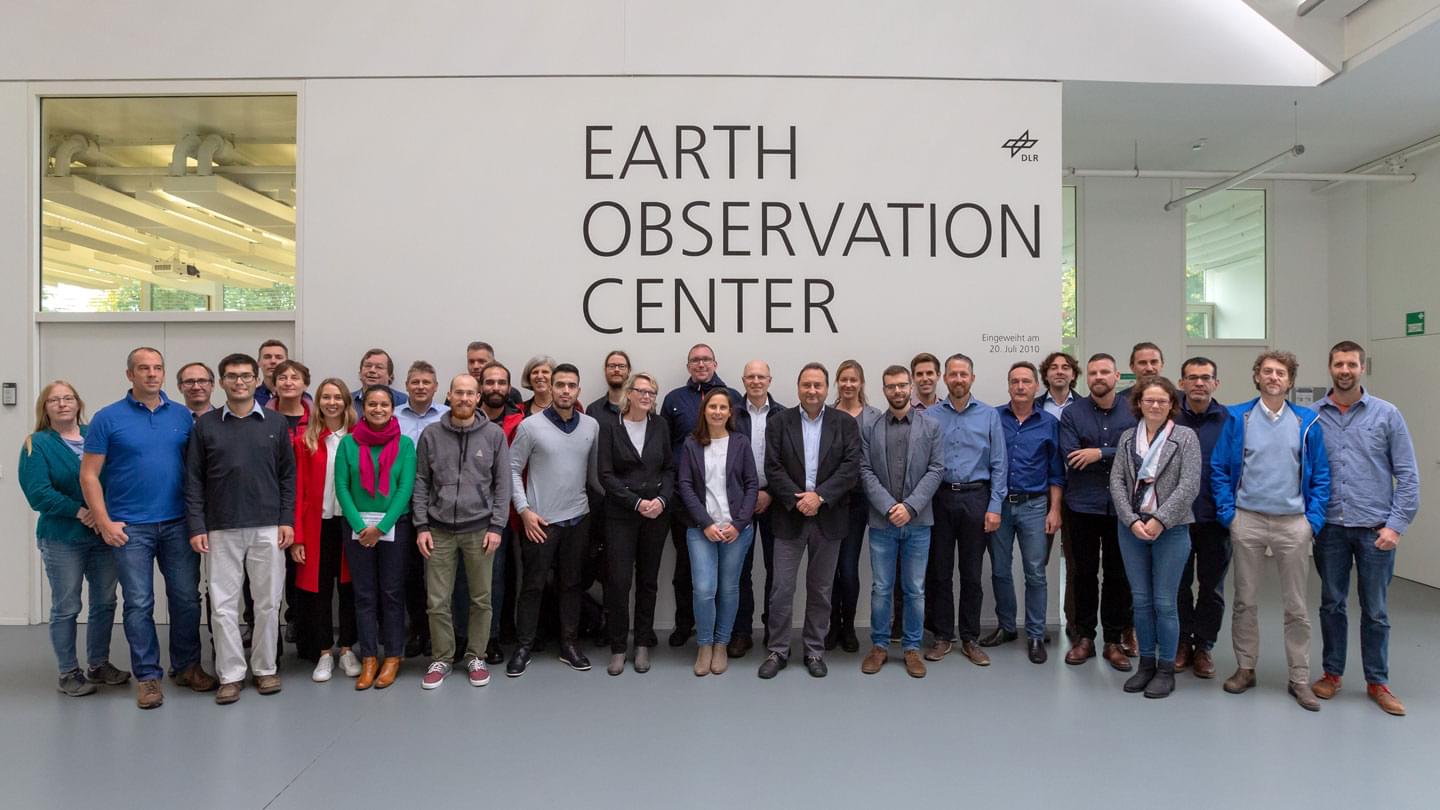
18.09.2019
The first CLIENT II conference took place in Berlin on 17 and 18 September 2019. The aim of the event was to foster the exchange of experiences in and between projects, to establish regional networks and to gain further inspirations to the own project implementation and related market transfer.
The multifaceted and interactive programme with panel discussions, thematic workshops, poster presentations and a market place enabled an active exchange with approx. 250 participants. The experiences from the project RIESGOS were discussed in the panel on “Insights into project work and lessons learnt” by Dr. Elisabeth Schoepfer from the German Aerospace Center (DLR). In the workshop on “Natural Risks” participants discussed challenges in project work and shared respective solutions. In this context, various support activities for the project implementation were presented. An overview of all CLIENT II projects can be found at the CLIENT II website.
05.09.2019
For three days developers, scientists and users met at the Geospatial Sensing Conference 2019 in Münster, Germany, to discuss new developments in the field of sensor-data. An active research and development community works on new approaches to share, manage, discover, analyze and visualize sensor-data.
Nico Mandery from the German Aerospace Center (DLR) presented the RIESGOS architecture as an example of an OGC-conform, distributed application structure.
26.08.2019
For one week RIESGOS developers met at German Aerospace Center (DLR) for a development sprint to synchronize their work on a first version of the demonstrator. Main targets were among others to integrate new processes in RIESGOS’ standardized, distributed architecture, and to link existing systemcomponents into a component chain.
To this end, participants from GFZ, 52North, AWI, TUM, geomer and DLR stood in close contact for a week. Amongst other outcomes, issues in components’ communication were resolved, several processes were extended, and the number of integrated processes was almoust doubled.
Further work is ongoing based on findings acquired during this sprint.

18.07.2019
From 10 to 17 July 2019 Lieutenant Commander Carlos A. Zúñiga from the Hydrographic and Oceanographic Service of the Chilean Navy (SHOA) visited the Alfred Wegener Institute (AWI) and the German Aerospace Center (DLR) in the frame of the RIESGOS Project.
There is a long-lasting cooperation between SHOA, DLR, AWI and GFZ on research for tsunami early warning and risk assessment. At AWI in Bremerhaven researchers from AWI and GFZ came together to discuss joint research and development interests especially with respect to topics related to tsunami modelling. Carlos presented the current state of affairs and recent developments of the tsunami early warning system operated by SHOA while the discussions dealt with promising directions for the ongoing and future collaboration in the RIESGOS context and the next steps. During the stay at DLR in Oberpfaffenhofen, the focus of the discussions was on the current work on the demonstrator of the RIESGOS Multi Risk Information System. In the frame of the seminar programme of the department “Georisks and Civil Security” Carlos presented the work of SHOA, in particular the important tasks of the National Tsunami Warning Center (SNAM).
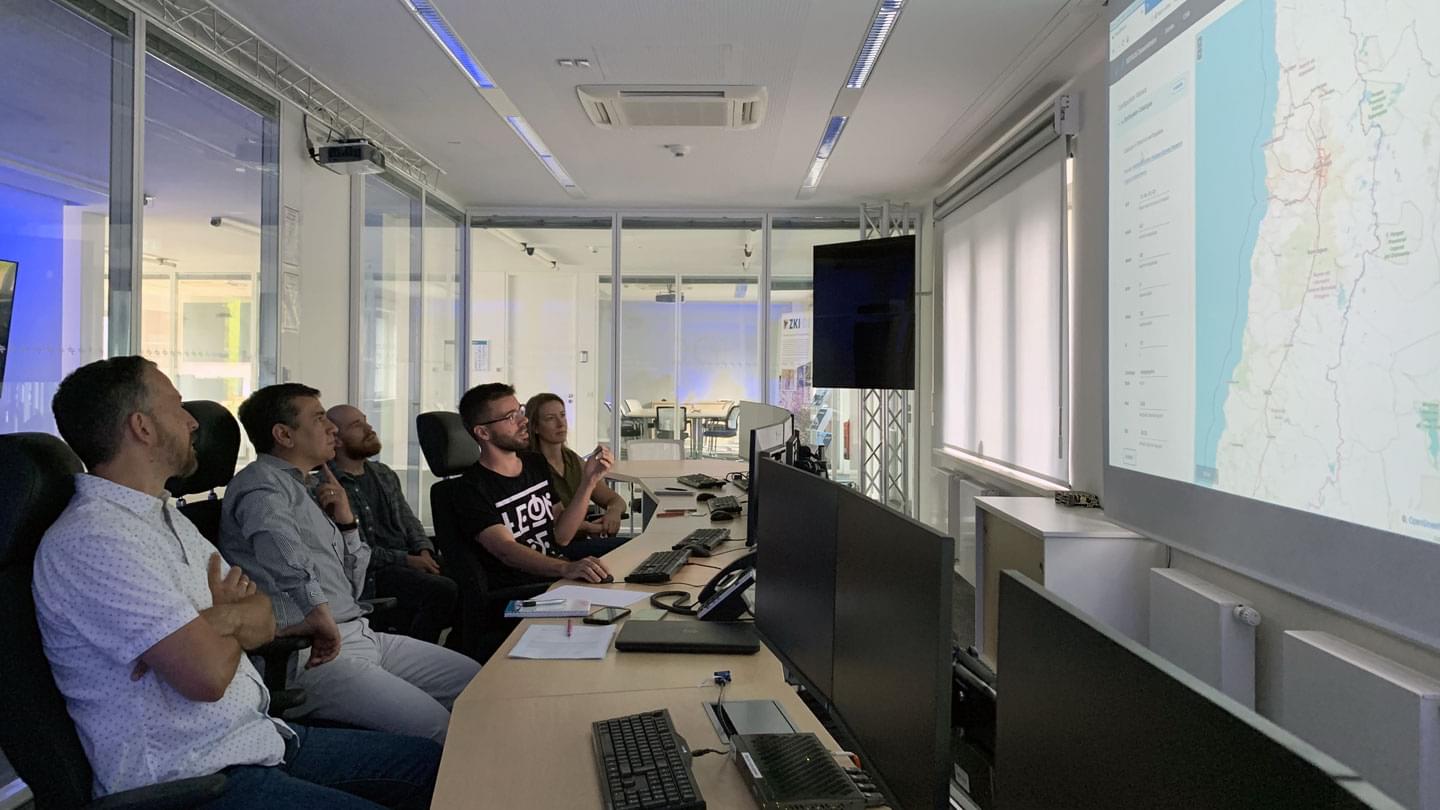
14.05.2019
Organized by the International Network for Multi-Hazard Early Warning Systems (IN-MHEWS), in conjunction with the 2019 Global Platform for Disaster Risk Reduction, the second Multi-Hazard Early Warning Conference (MHEWC-II) aimed to demonstrate how the availability of and access to multi-hazard early warning and risk information can be improved.
Prof. Günter Strunz from the German Aerospace Center (DLR) presented the work of RIESGOS on 14 May 2019 during the session on “Big data and Space applications”.
05.04.2019
As part of it advisory support activities, UN-SPIDER carried out a Technical Advisory Mission (TAM) to Peru from 1 to 5 April 2019 to evaluate the current and potential use of space-based information in all aspects of disaster management. UN-SPIDER is associated partner of the RIESGOS project. Elisabeth Schoepfer, RIESGOS project coordinator, from the German Aerospace Center (DLR) was part of the expert team. Further information can be found at: http://www.un-spider.org/news-and-events/news/un-spider-tam-peru
23.03.2019
On March 20, 2019 a workshop on „Modelling the reliability of critical services in case of disasters” took place at the Pontifical Catholic University of Chile. The workshop was organized by colleagues of the research line „Risk and resilience in complex systems and networks“ within CIGIDEN jointly with the RIESGOS team of the Technical University of Munich / Engineering Risk Analysis Group. Prof. Daniel Straub and Hugo Rosero presented their work on generic models of systems in networks and cascading effects in the frame of the project.
The workshop participants consisting of researchers, national authority representatives, operators of critical infrastructures as well as end users, shared their experiences, discussed requirements and further specified the upcoming research tasks accordingly.
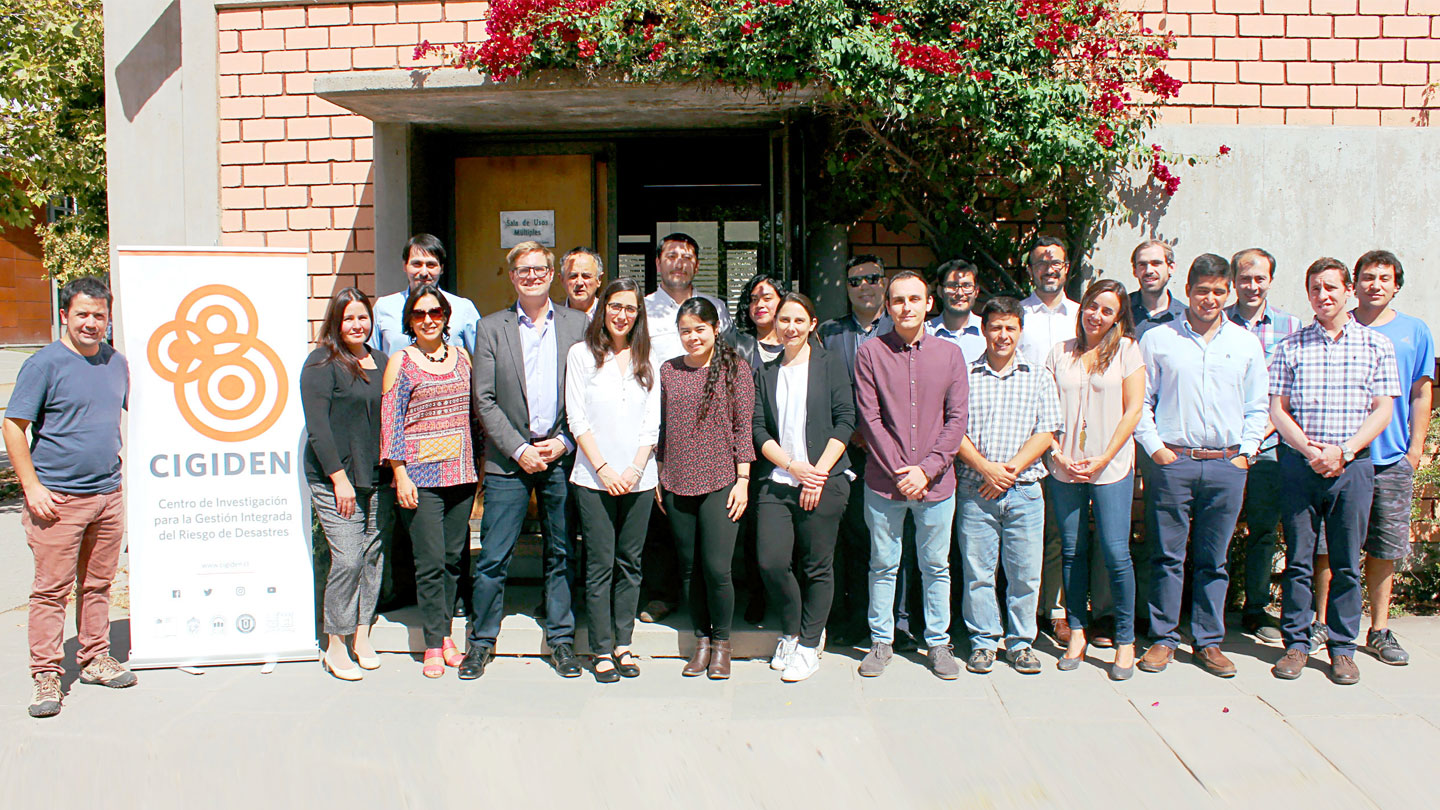
15.03.2019
In February/March 2019 researchers from the Technical University of Munich (TUM) travelled to Ecuador for a 3-weeks field investigation. After discussing the planned measurements with local partners from Instituto Geofísico and Instituto de Investigación Geológico y Energético, the group headed to Cotopaxi volcano and used the first days for acclimatization and equipment testing. They then climbed to the glacier margin at about 5200 m every day to conduct electrical resistivity tomography (ERT) and seismic refraction tomography (SRT) measurements. Despite struggling with adverse weather situations that kept arising reliably at noon, the group could complete the field campaign with 4 ERT- and 2 SRT-profiles. These measurements help to anticipate the impact of climate change (glacier retreat) and permafrost degradation on the formation of secondary lahars at Cotopaxi volcano.
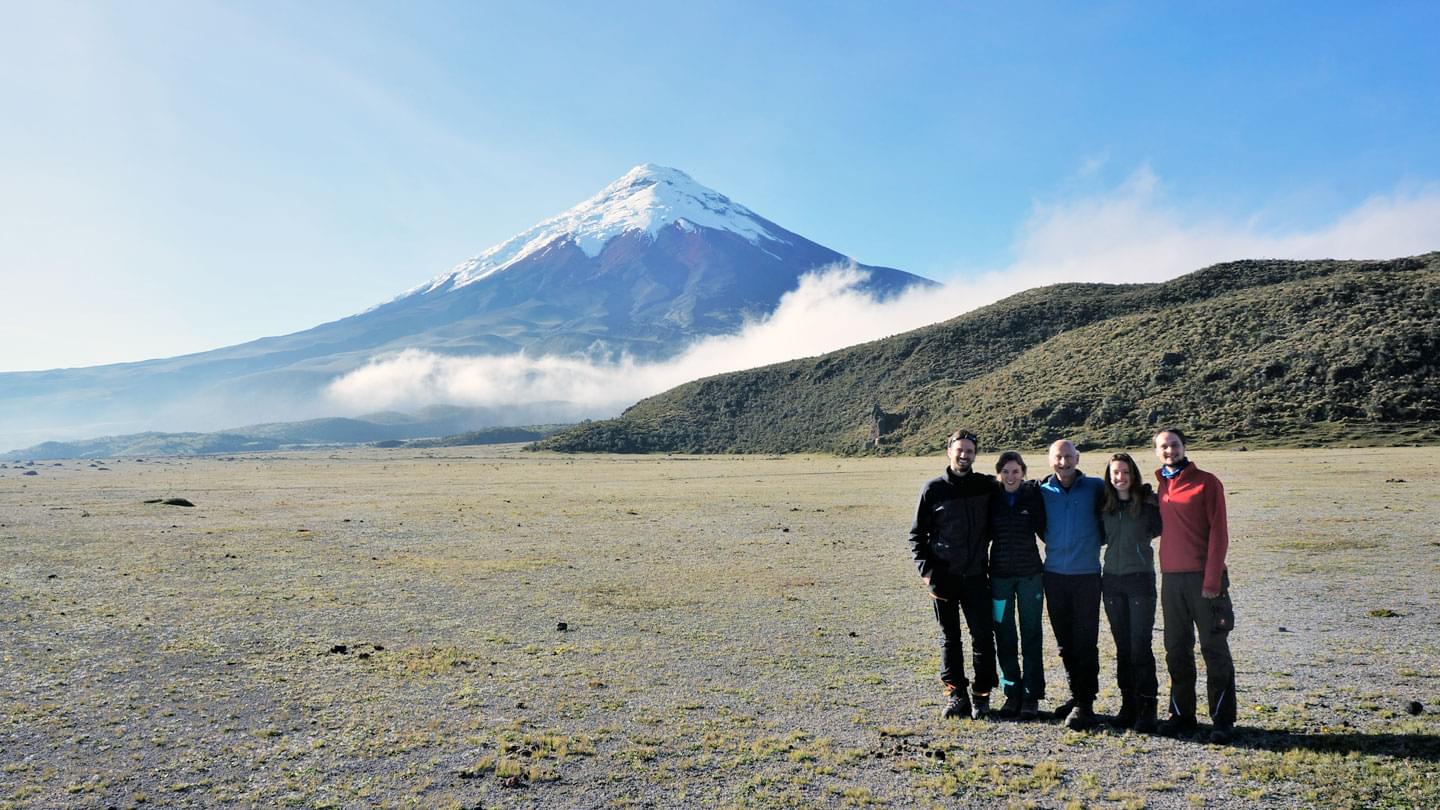
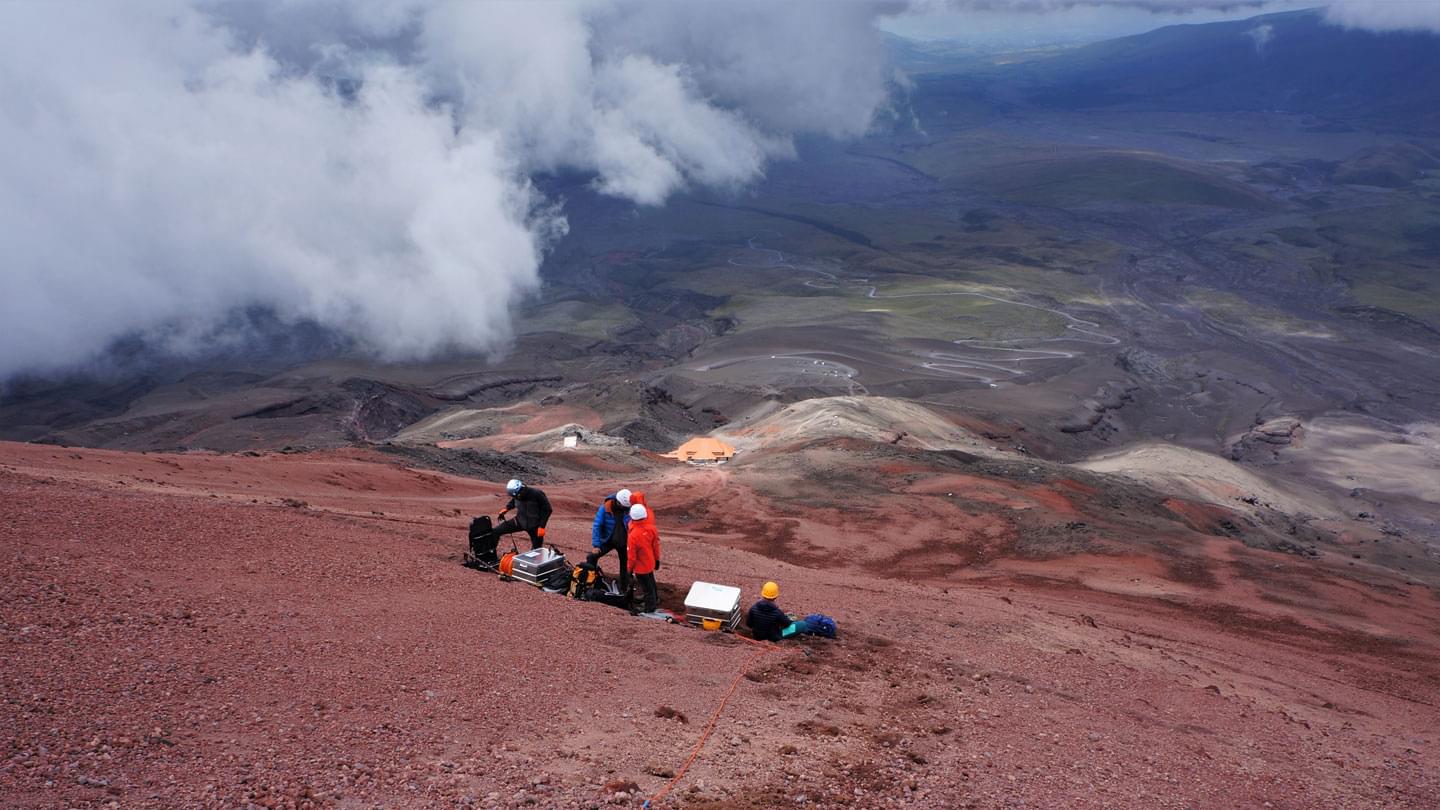
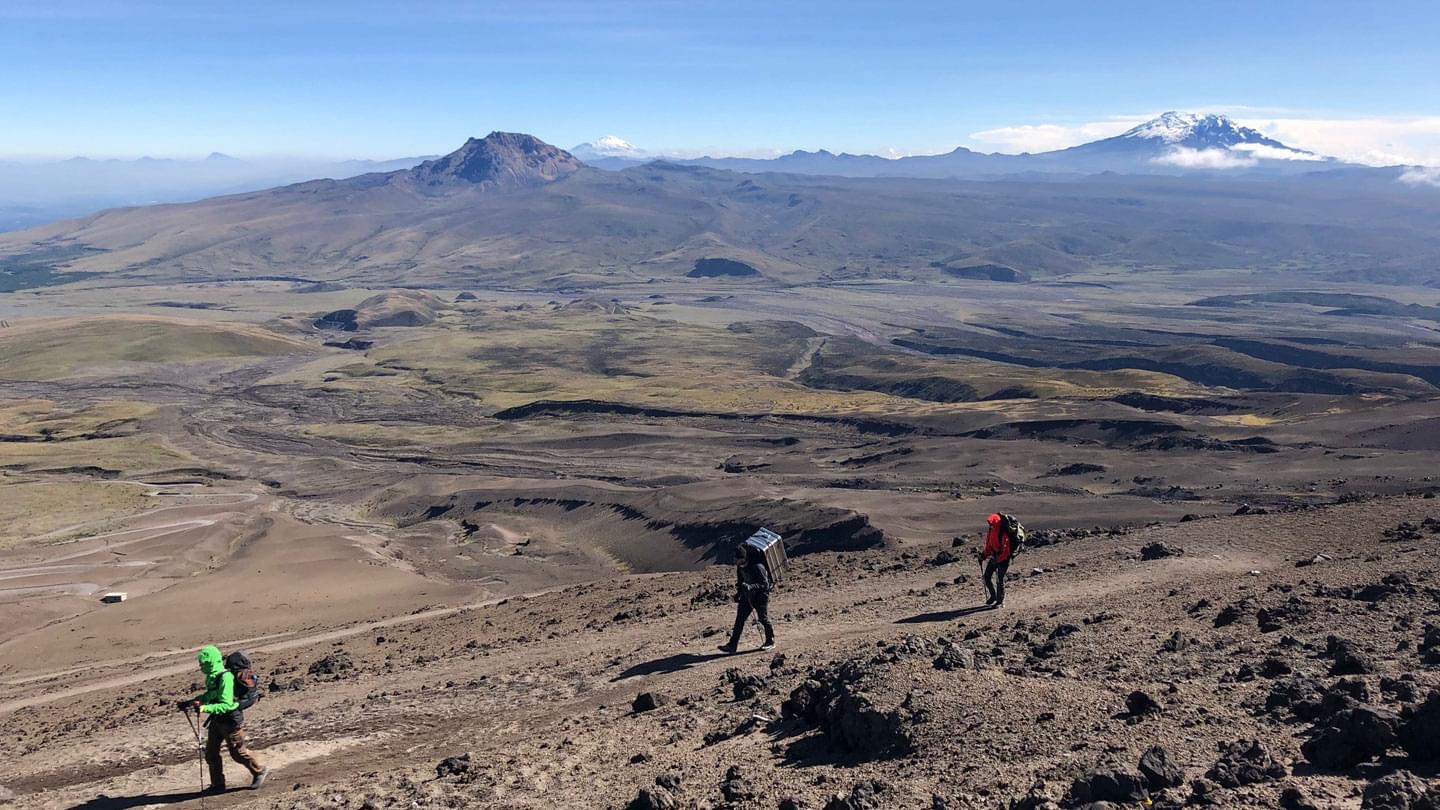
2018
17.12.2018
At the end of the first project year of RIESGOS, the second delegation mission to the partner countries Chile, Peru and Ecuador took place. The objective of the trip was to present the first project results in the form of showcases, which have been prepared for all three countries in the respective pilot areas. Dedicated scientific and user workshops were held with research partners and national/local end users. In addition to the presentations of the results during the workshops, the focus was put on fostering the cooperation during discussions in several bilateral meetings.
Among the many highlights during the mission, one was for sure the visit of the pilot region in the area of the volcano Cotopaxi in Ecuador. The RIESGOS team spent three days in the region. After a workshop with local end users, a two-day excursion took place.
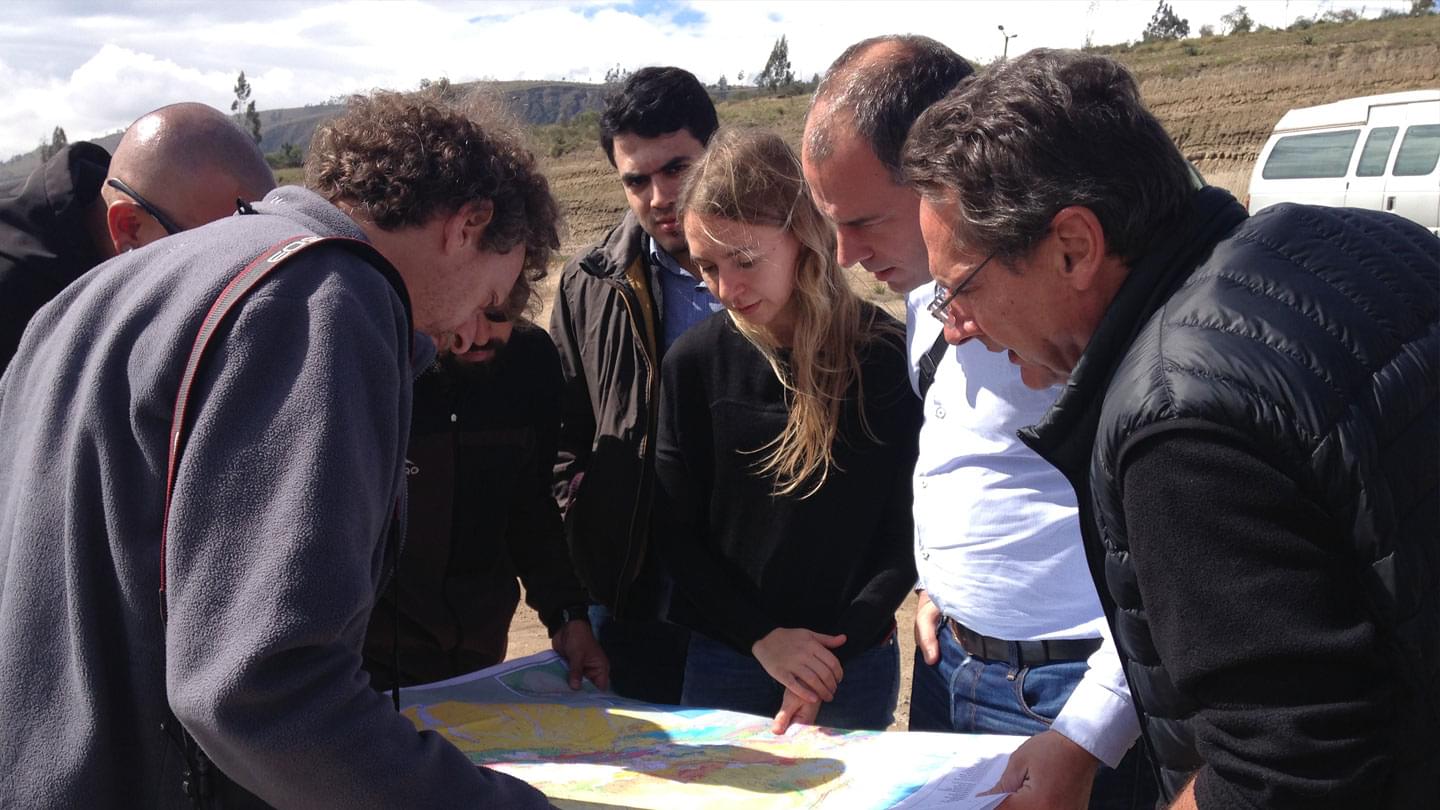
16.11.2018
From 4 to 16 November 2018 Dr. Mauricio Monsalve from the Research Center for Integrated Disaster Risk Management (CIGIDEN) visited the German Aerospace Center (DLR) and the Technical University of Munich (TUM) in the frame of the RIESGOS project.
During the two-week stay the focus was put on two topics, i.e. software components and web processing services as well as critical infrastructure.
The first topic was discussed using both, presentations and hands-on sessions. A three-day workshop took place focusing on the design of web service components and their publication on GITHUB, a code hosting platform for collaboration. During the time of the workshop Benjamin Pross from 52°North joined the team.
At the Technical University of Munich Mauricio presented his research on “Reducing disaster risk through data driven research” followed by presentations of TUM colleagues. In the following the set-up of a joint workshop on Critical Infrastructure was discussed. This workshop will take place in March 2019 at CIGIDEN in Santiago de Chile.
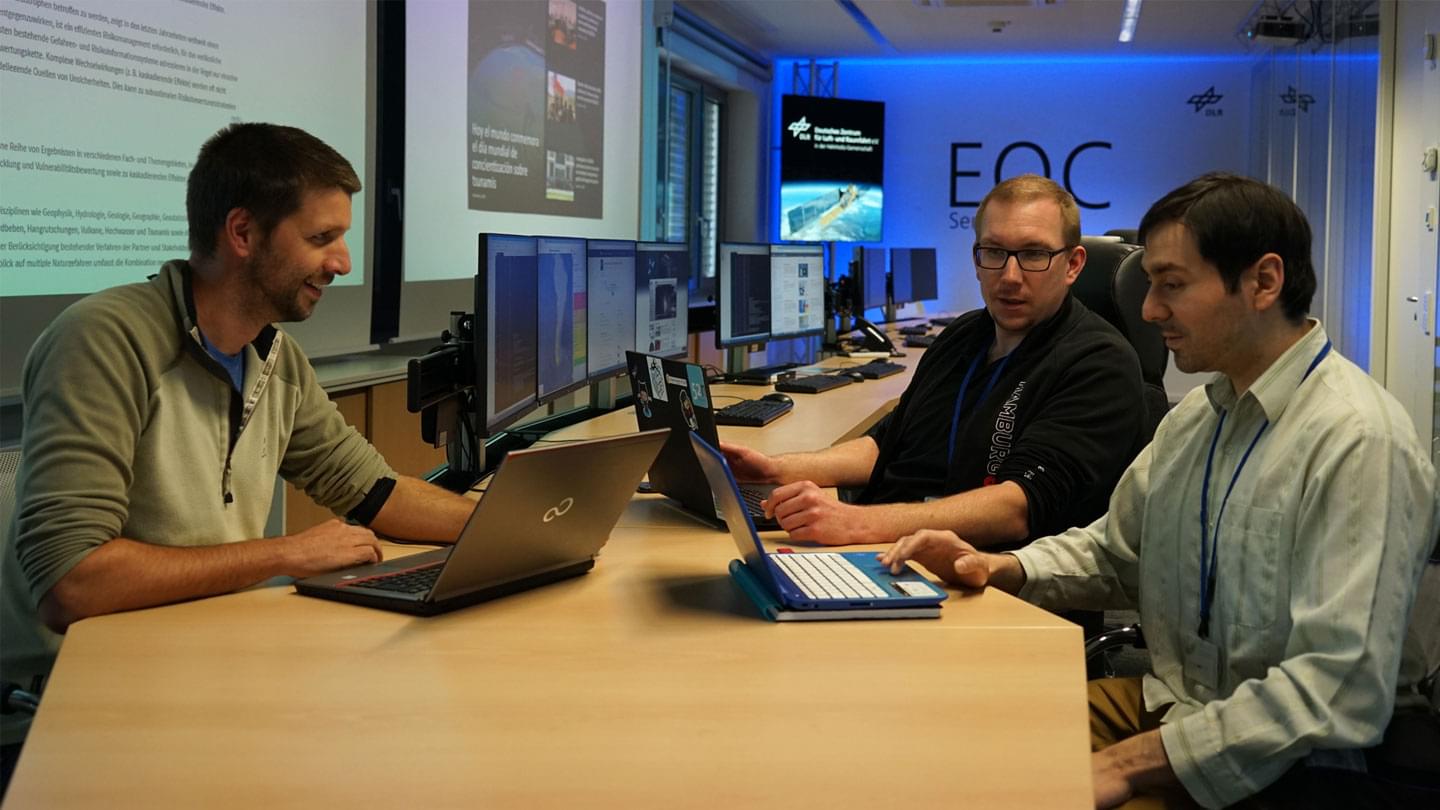
16.10.2018
The first annual meeting of the project RIESGOS takes place from 16 to 17 October 2018. For almost a year the RIESGOS team has been working on research and development of scientific methods to better understand complex interactions in the context multi-risk analysis in order to prevent future natural disasters. In addition to the presentation and discussion of the results of all project partners, the two-day meeting will focus on the presentation of the showcases. The research project pursues an iterative development approach to develop components for a multi-risk information demonstrator and to integrate the actual requirements of the respective end users. In a first step, showcases are developed, which show all components of a complex risk situation on the basis of a fictitious event. From the perspective of “What would happen if …?” individual components and functionalities of the planned demonstrator are described: an earthquake triggers a tsunami, which in turn damages critical infrastructure. Exposure and vulnerability are dynamic variables that need to be mapped accordingly. In addition to the interactive presentation of the envisaged functionalities, a “proof of concept” will be carried out for a selected part of the process chain in order to demonstrate the functionality of interfaces and to check the technical feasibility. This year’s annual meeting represents an important milestone in the project RIESGOS, as the work will be presented later this year in user workshops in Chile, Ecuador and Peru. And accordingly the next development steps will be defined jointly with the South American research partners.
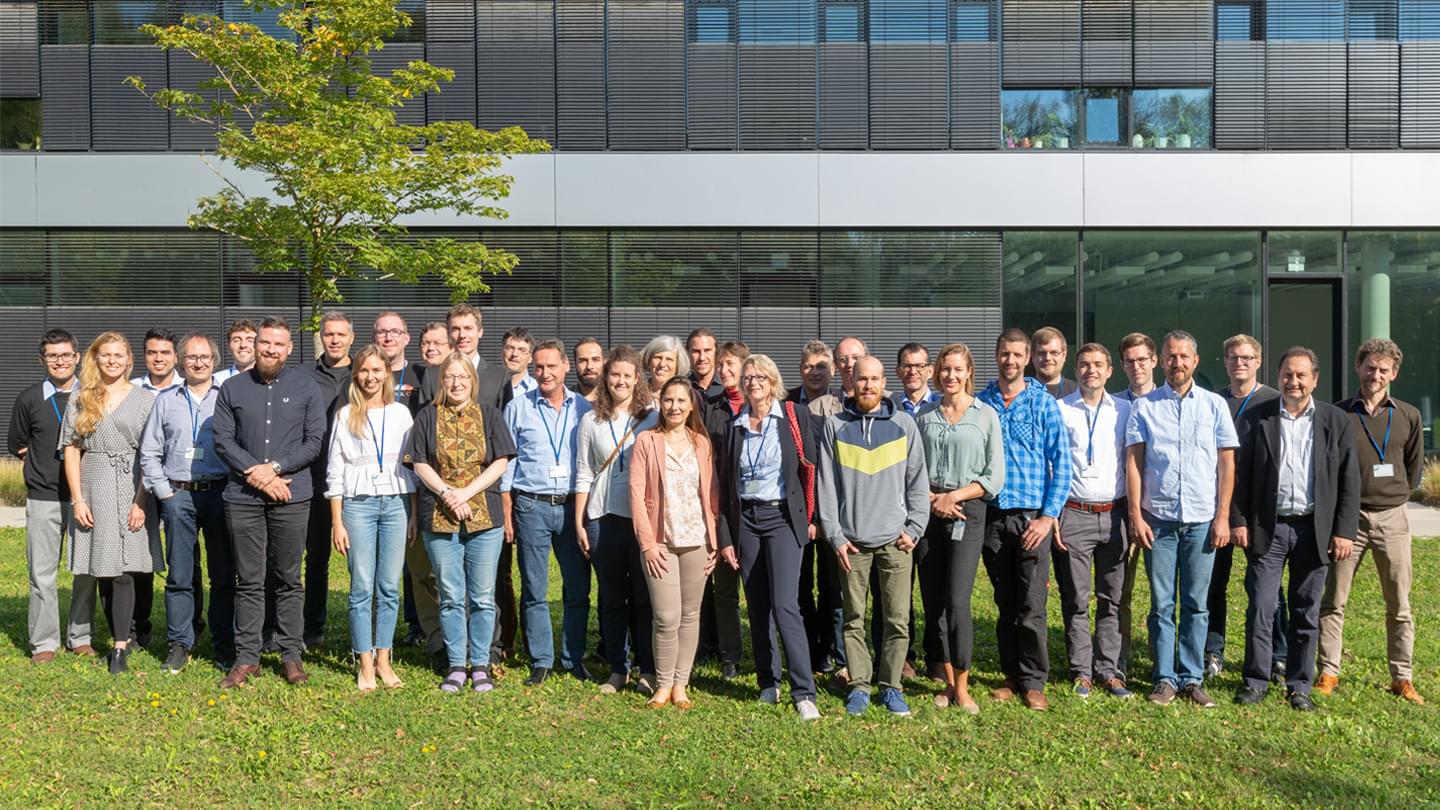
09.10.2018
The International Conference “Natural Hazards and Risks in a Changing World” took place at the University of Potsdam from 4th to 5th October 2018. During the session on “Cascade and Multi-Hazard” Dr. Christian Geiß from the German Aerospace Center (DLR) and Dr. Massimiliano Pittore from the German Research Center for Geosciences (GFZ) presented recent research approaches and concepts for multi-risk assessment during two talks.
24.09.2018
The Chile Day of the BMBF took place in Bonn on 20 and 21 September 2018. The event aimed at connects scientists and experts in Germany, who are interested in cooperation with Chile and to develop suggestions for future cooperation activities with Chile. The event focussed on networking and the exchange of experience.
The interesting programme with lectures, idea competitions, expert group meetings and panel discussions enabled a lively exchange with the participants. The presentation of various funding instruments for the expansion of existing collaborations as well as the set-up of new contacts provided deeper insights on project funding opportunities.
The project RIESGOS was represented by the active participation of Dr. Torsten Riedlinger and Dr. Elisabeth Schoepfer with contributions to the panel discussion and in the workshop on „Geosciences and Marine Research“.
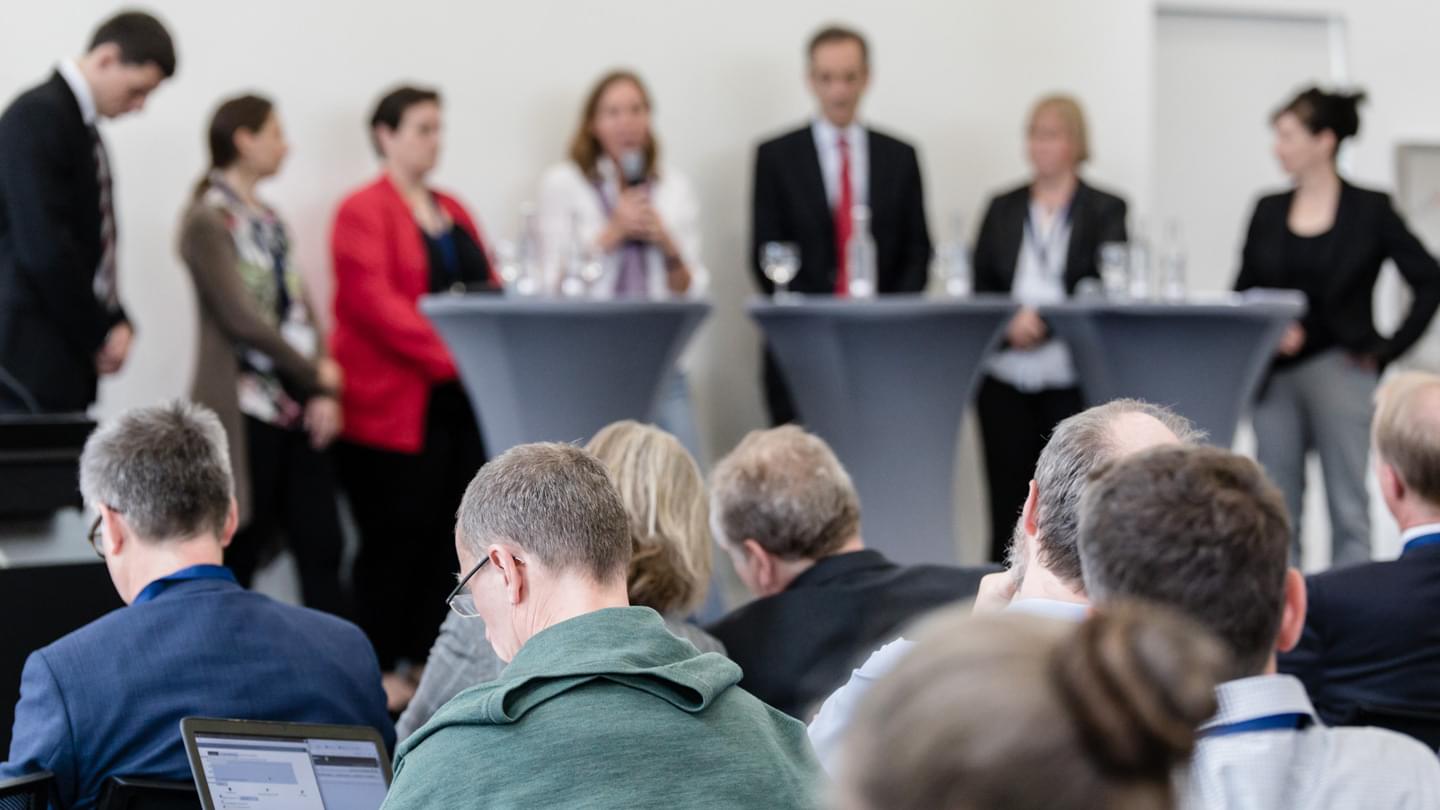
16.08.2018
An international tsunami training program took place from August 1-10, 2018 in Valparaíso, Chile. The RIESGOS project was represented by Dr. Sven Harig from the Alfred Wegener Institute, Helmholtz Centre for Polar and Marine Research (AWI). The event under the auspices of UNESCO/IOC was organized and hosted this year by the Hydrographic and Oceanographic Service of the Chilean Navy (SHOA). The training covered almost all aspects of tsunami early warning, from seismology and modelling to the development of Standard Operating Procedures (SOPs) for early warning. “The international networking of actors of the tsunami early warning centres and scientists enable to address new research questions, to exchange with experts and to continuously improve the interoperability of the systems”, said the participating RIESGOS tsunami modeller Dr. Sven Harig from AWI.
The tsunami experts and speakers were coming from the International Tsunami Information Center (ITIC), the Pacific Tsunami Warning Centre (PTWC) from Hawaii, the Intergovernmental Oceanographic Commission of the UNESCO (IOC), the North-western University in the U.S. as well as from the National Civil Protection in Chile (ONEMI) und various Chilean Universities. The participants from 12 countries came mainly from the Pacific region and the Caribbean. In addition to technical lectures, insights into many areas of the Chilean early warning system were offered, for example through guided tours of the operational Tsunami Early Warning Centre and a visit of the National Emergency Office in Santiago. In addition, all represented countries presented their own developments and concrete implementations of the tsunami early warning system.
During an excursion to the Quintero region a field experiment was conducted which provided the opportunity to search for, identify and classify tsunami sediments in the ground „with a hoe and a spade“. With this hands-on example in one of the endangered regions in Chile a comprehensive insight into the aspects of the tsunami topic was provided.

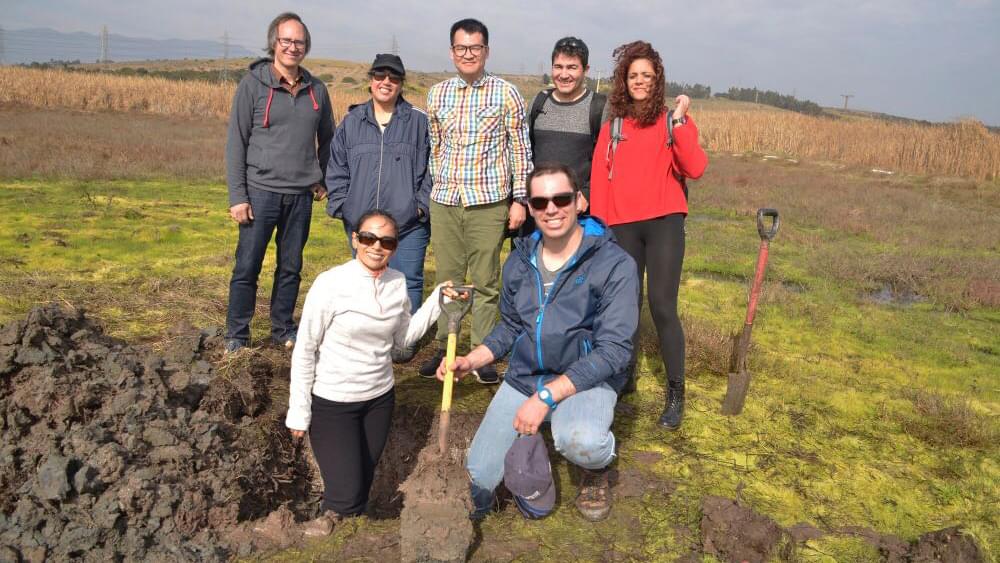
07.05.2018
Directly after the RIESGOS kick-off in Quito, the Landslide Research Group of the Technical University of Munich, conducted geological field research at Cotopaxi volcano. At the beginning, INIGEMM (Instituto Nacional de Investigación Geológico Minero Metalúrgico) was organizing an excursion together with representatives of the IGEPN (Instituto Geofísico de la Escuela Politécnica Nacional) and the UCE (Universidad Central del Ecuador), providing interesting insights into landslides and historic lahars in the Chillos Valley to the north of Cotopaxi volcano.
The following field work was centered around the research topic of „lahars“ as well. The group of the TU Munich visited trajectories of recent lahars and successfully placed temperature loggers near the glacier margin.
(responsible for the content: Technical University of Munich)
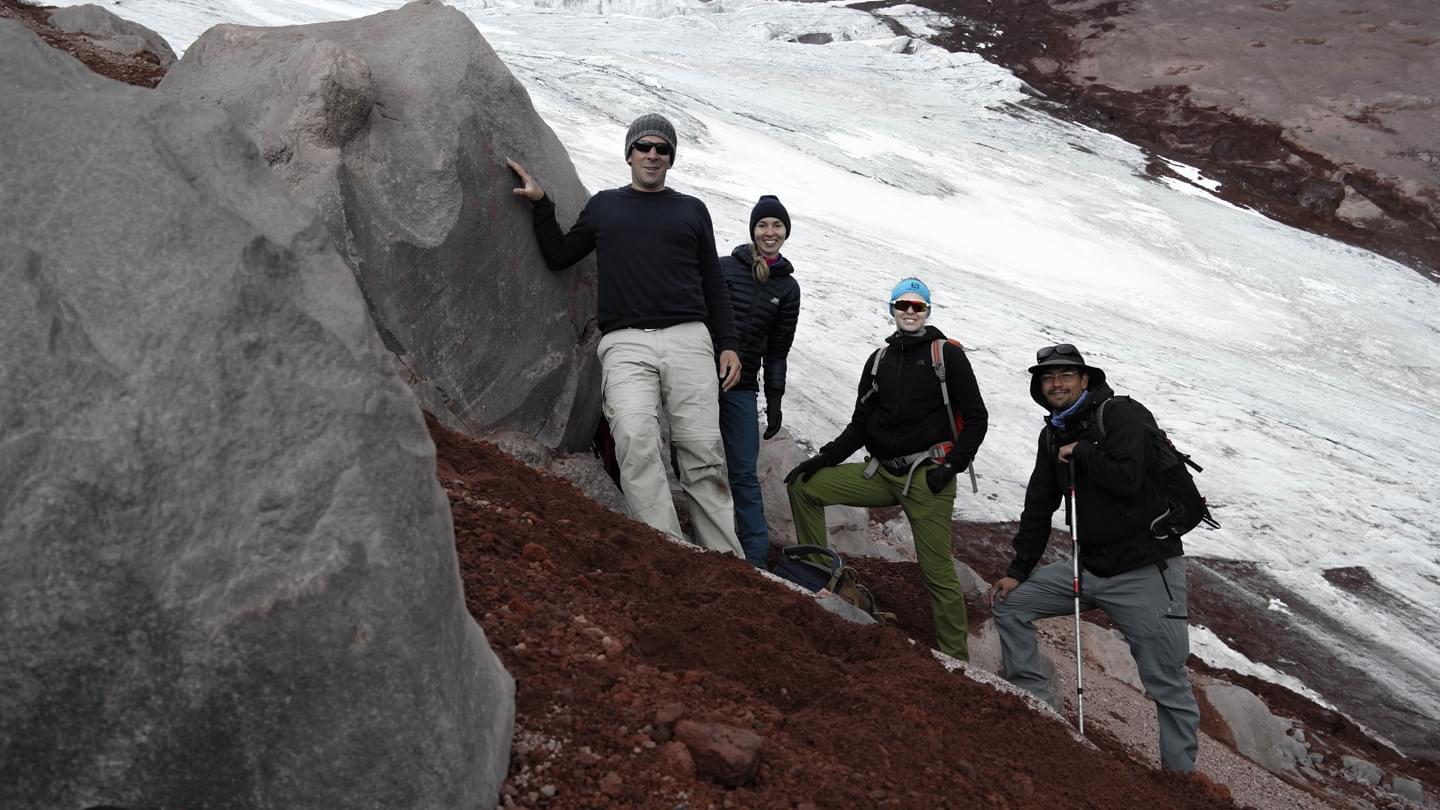
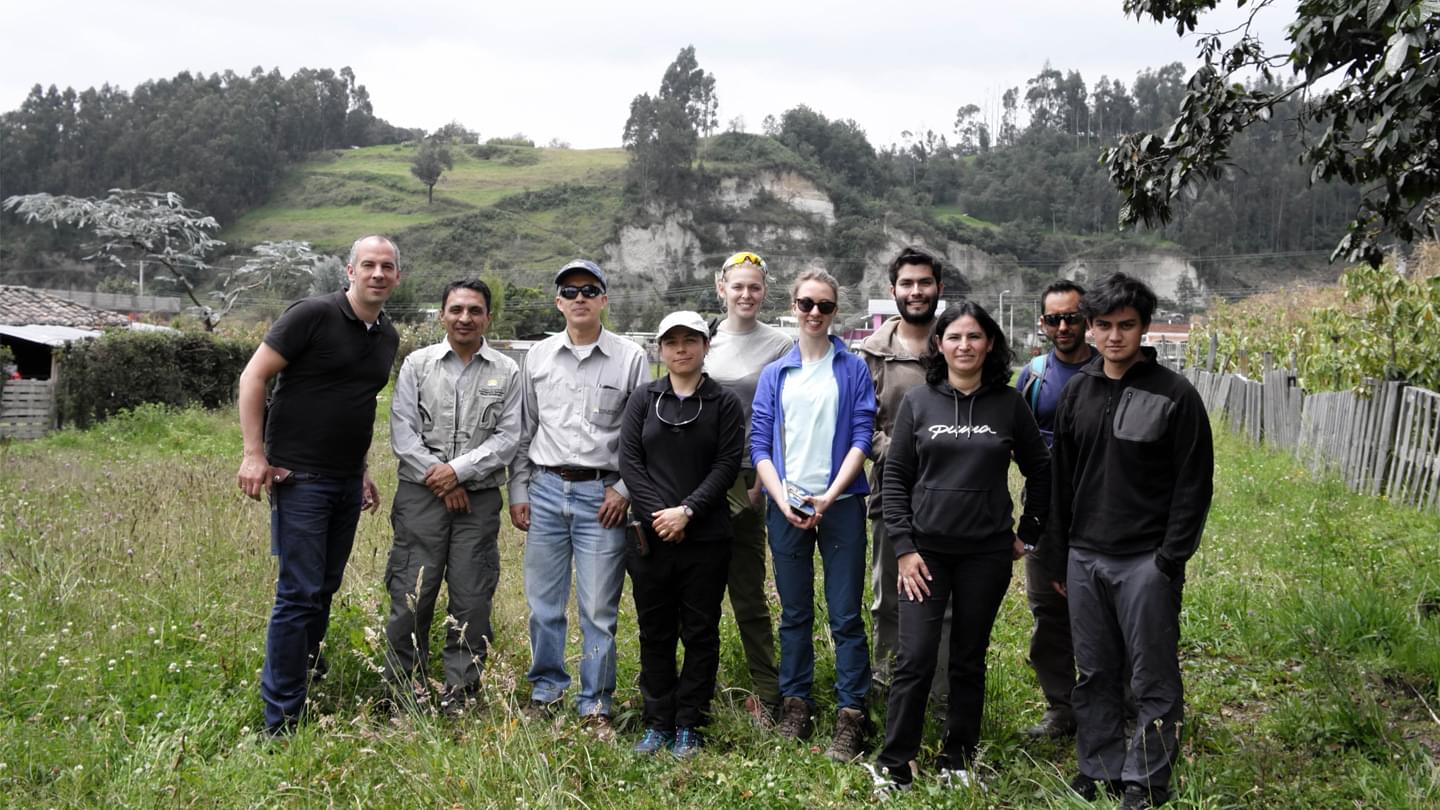
26.04.2018
Together with the Ecuadorian Ministry of Science “Secretaría de Educación Superior, Ciencia, Tecnología e Innovación (SENESCYT)” and National Secretariat of Disaster Risk Management “Secretaría de Gestión de Riesgos” (SGR) a 2-day RIESGOS Workshop was held in Quito on 24 and 25 April 2018. This second visit to Ecuador (the first trip took place in March 2017 as part of the project initiation phase) was dedicated to the nearby volcano Cotopaxi and related hazards. Using a selected scenario, complex risk chains were discussed, common research topics identified and cooperation opportunities discussed.
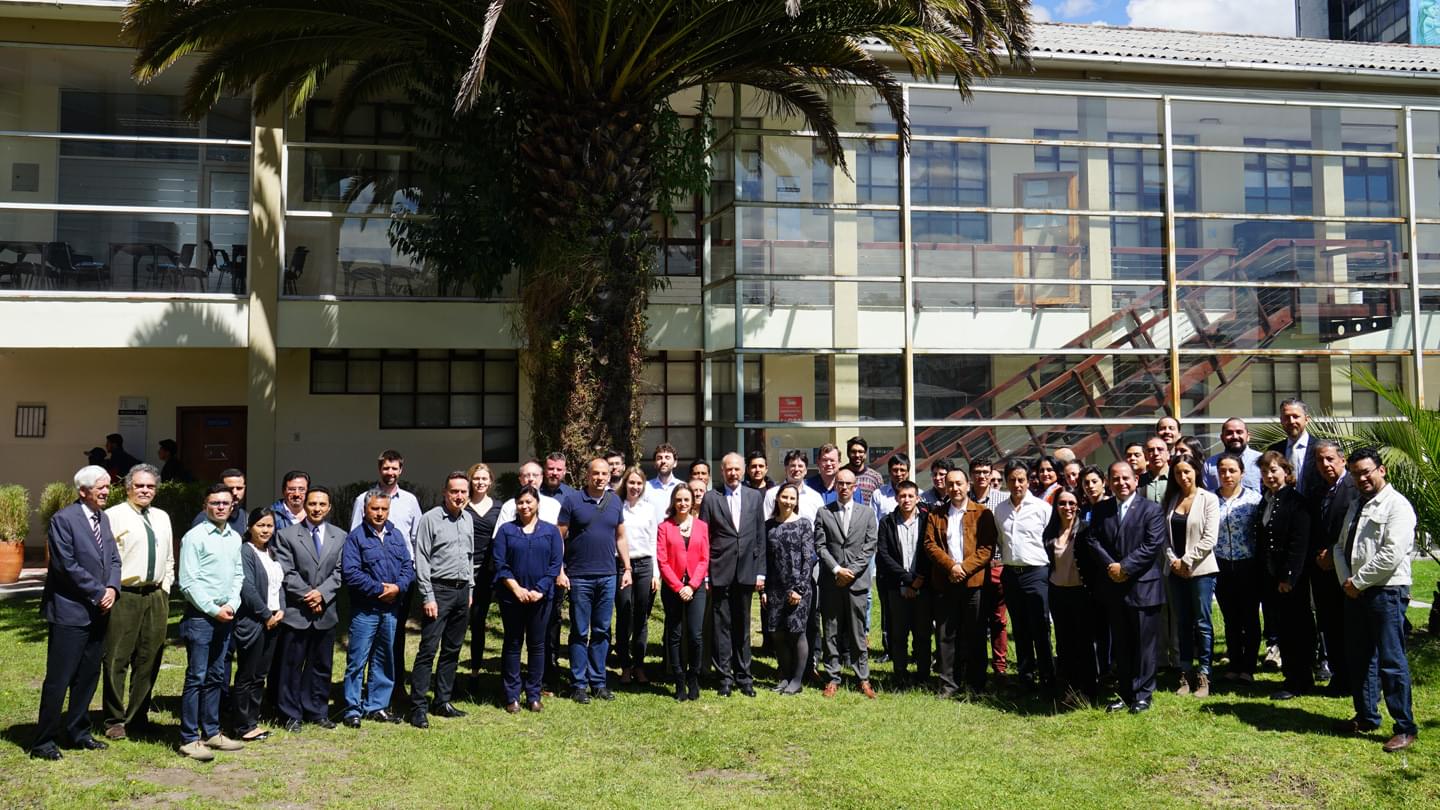
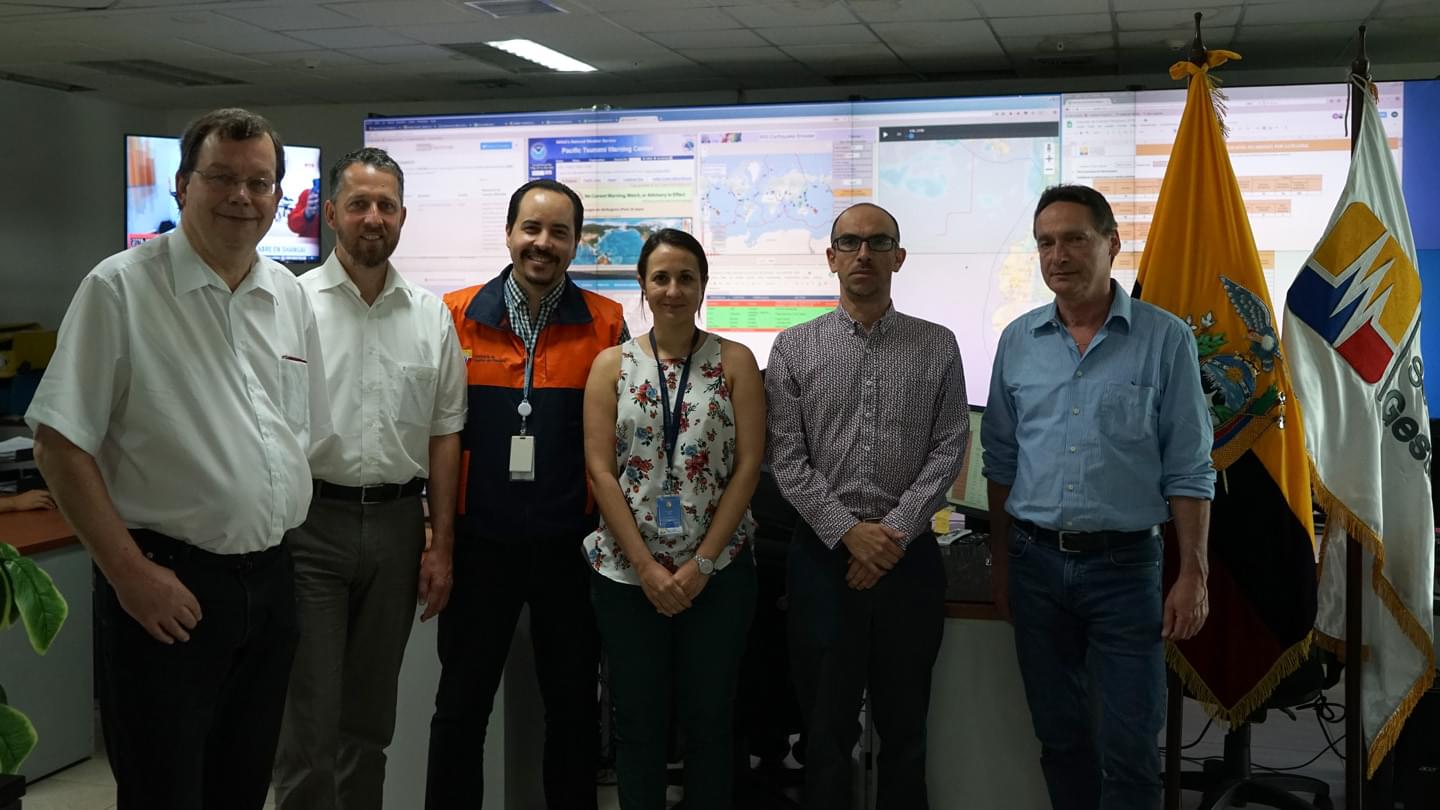
21.04.2018
On April 19 and 20, 2018, the RIESGOS consortium organised a 2-day RIESGOS Workshop in Lima. At the beginning of the workshop, the National Research Council “Consejo Nacional de Ciencia, Tecnología Innovación Tecnológica” (CONCYTEC) reported on current research activities in the context of natural hazards and risk in Peru. Afterwards the RIESGOS team presented the research topics planned for the next 3 years and followed the presentations of Peruvian institutions with great interest. Afterwards, possibilities for cooperation were discussed together with Peruvian research institutions and public authorities as well as end users of the project pilot region Lima.
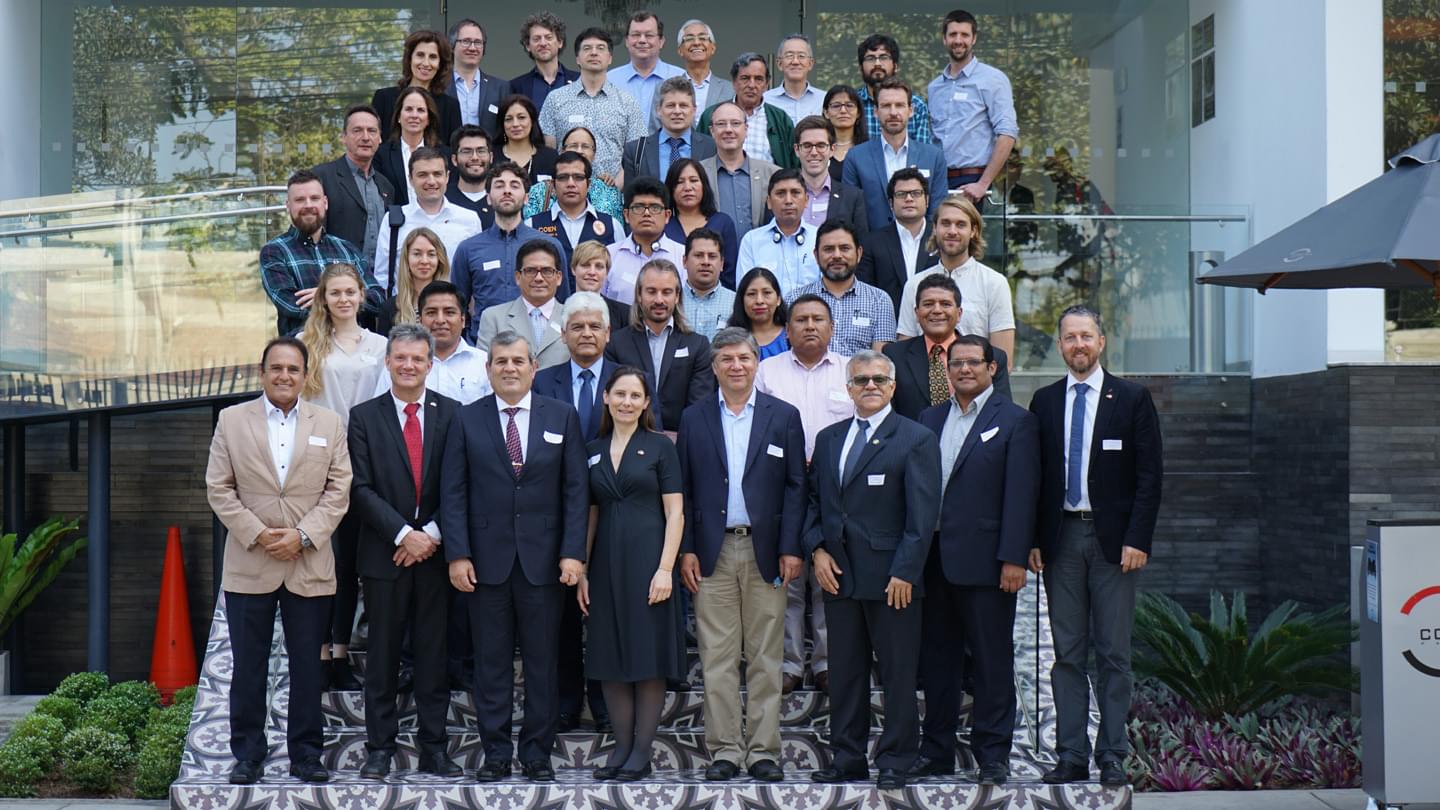
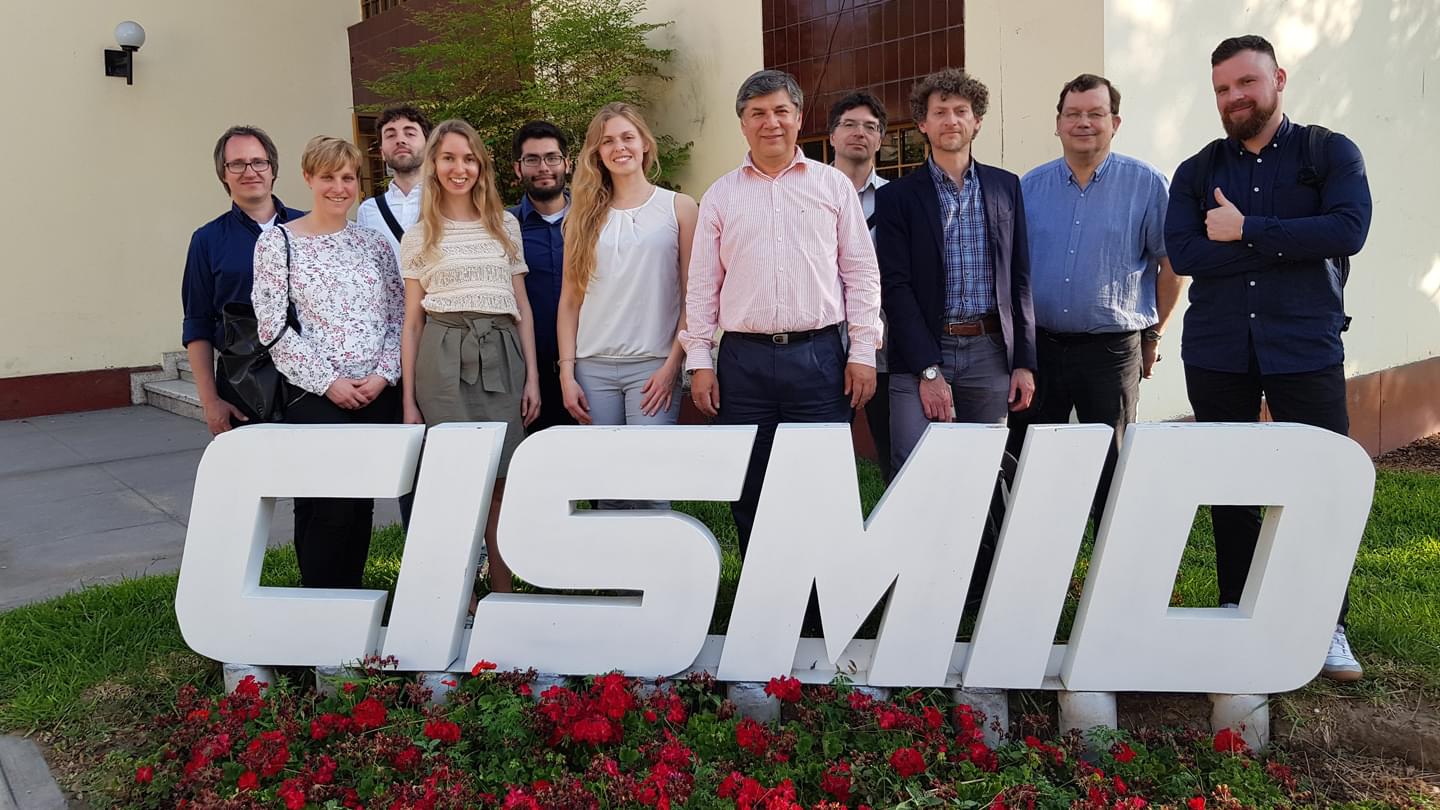
17.04.2018
On Monday, April 16, 2018, the RIESGOS delegation visited institutions in the project pilot region Valparaíso. The important port city of Valparaíso is located about 120 kilometres by road northwest of the capital Santiago de Chile at the Pacific Ocean. The greater metropolitan area Valparaíso - Viña del Mar is the second largest in the country after Santiago de Chile and is of great economic and tourist importance for Chile.
In the morning we visited the regional disaster management authority “ONEMI Regional de Valparaíso”. Afterwards, current research topics in the context of multi-risk analysis and tsunami modelling were discussed with scientists from the Universidad Técnica Federico Santa María. Finally, the delegation was received by Rear Admiral Patricio J. Carrasco and Lieutenant Commander Carlos Zúñiga of the Hydrographic and Oceanographic Service of the Chilean Navy (SHOA). The tsunami early warning system was impressively demonstrated in real time, using the example of the 2016 tsunami.
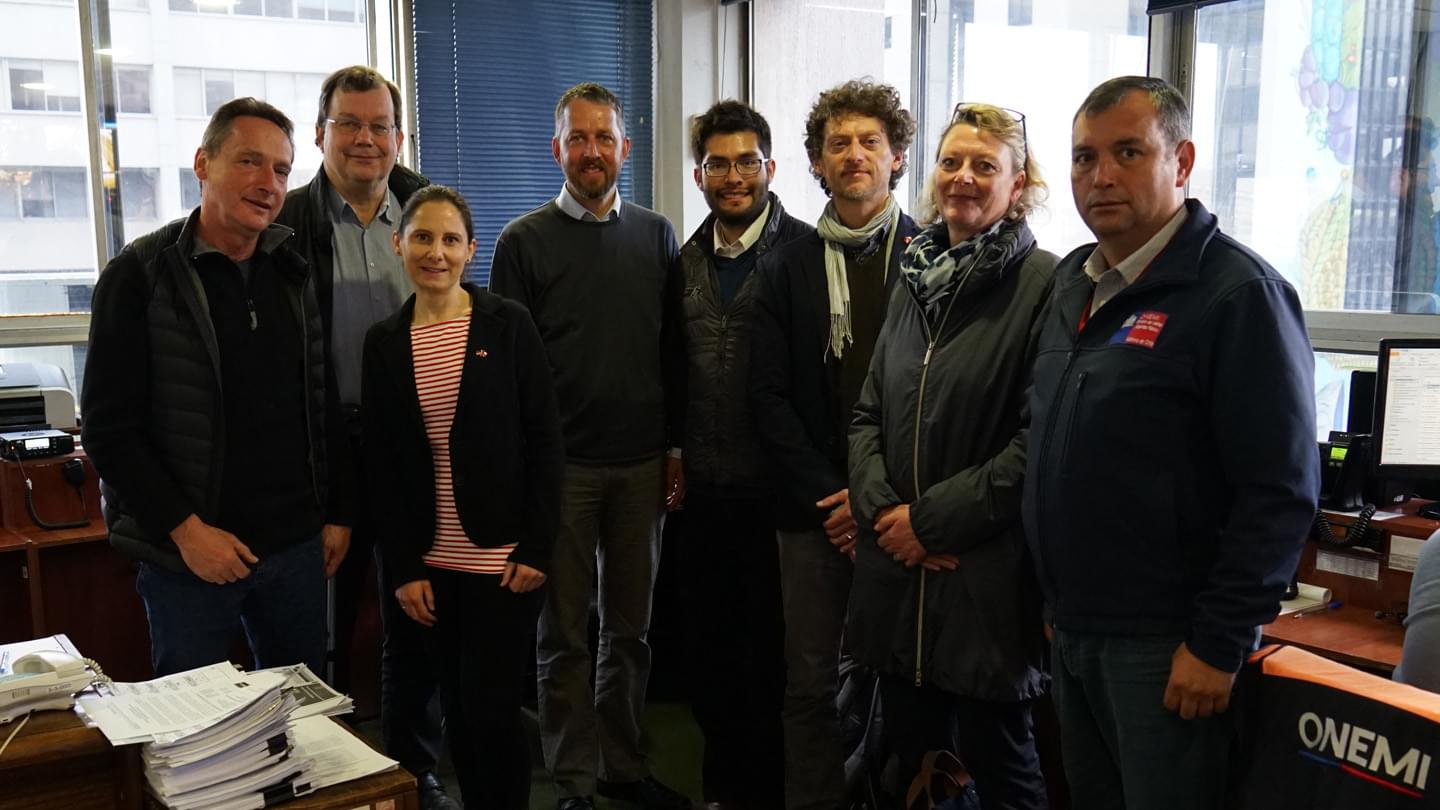
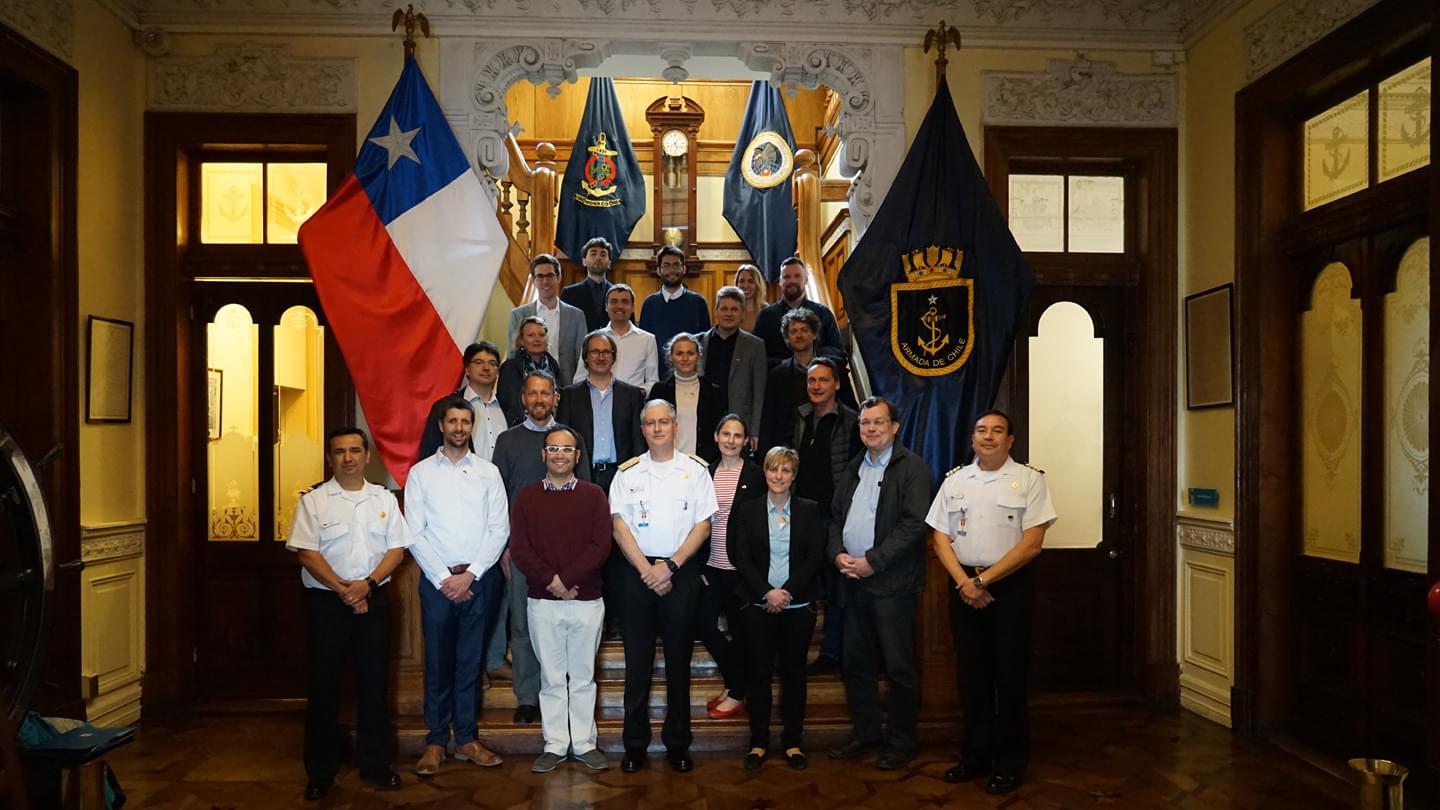
14.04.2018
The strengthening of the scientific exchange and the dialogue with South American users were the focus of a delegation visit of 18 German scientists and industry representatives at the start of the BMBF funded RIESGOS project.
A 2-day workshop was organised in Santiago de Chile together with the Chilean research network (CIGIDEN) and Chile’s National Emergency Office (ONEMI). The first day of the workshop (12 April 2018) was dedicated to a wide range of research topics. Together with Prof. Rodrigo Cienfuegos, the scientific director of CIGIDEN, the workshop was planned and conducted at the Pontificia Universidad Católica de Chile (UC). On 13 April 2018, a user workshop was held at Chile’s National Emergency Office (ONEMI) with several national representatives of public authorities. At this day the focus was put on existing information systems, both for early warning and for preventive measures. Requirements and challenges were discussed together with the national and regional users of these systems in order to make the best possible contribution of RIESGOS.
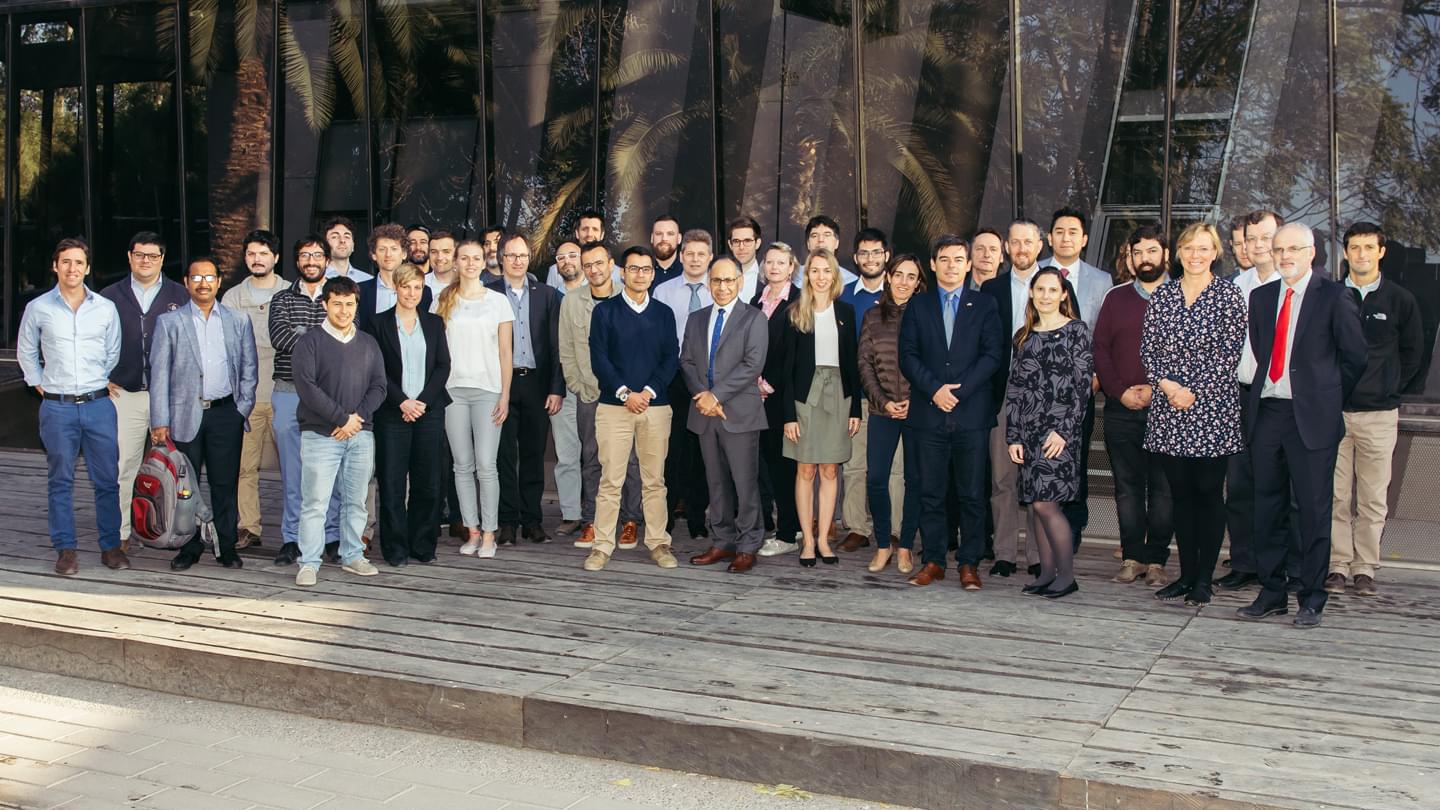
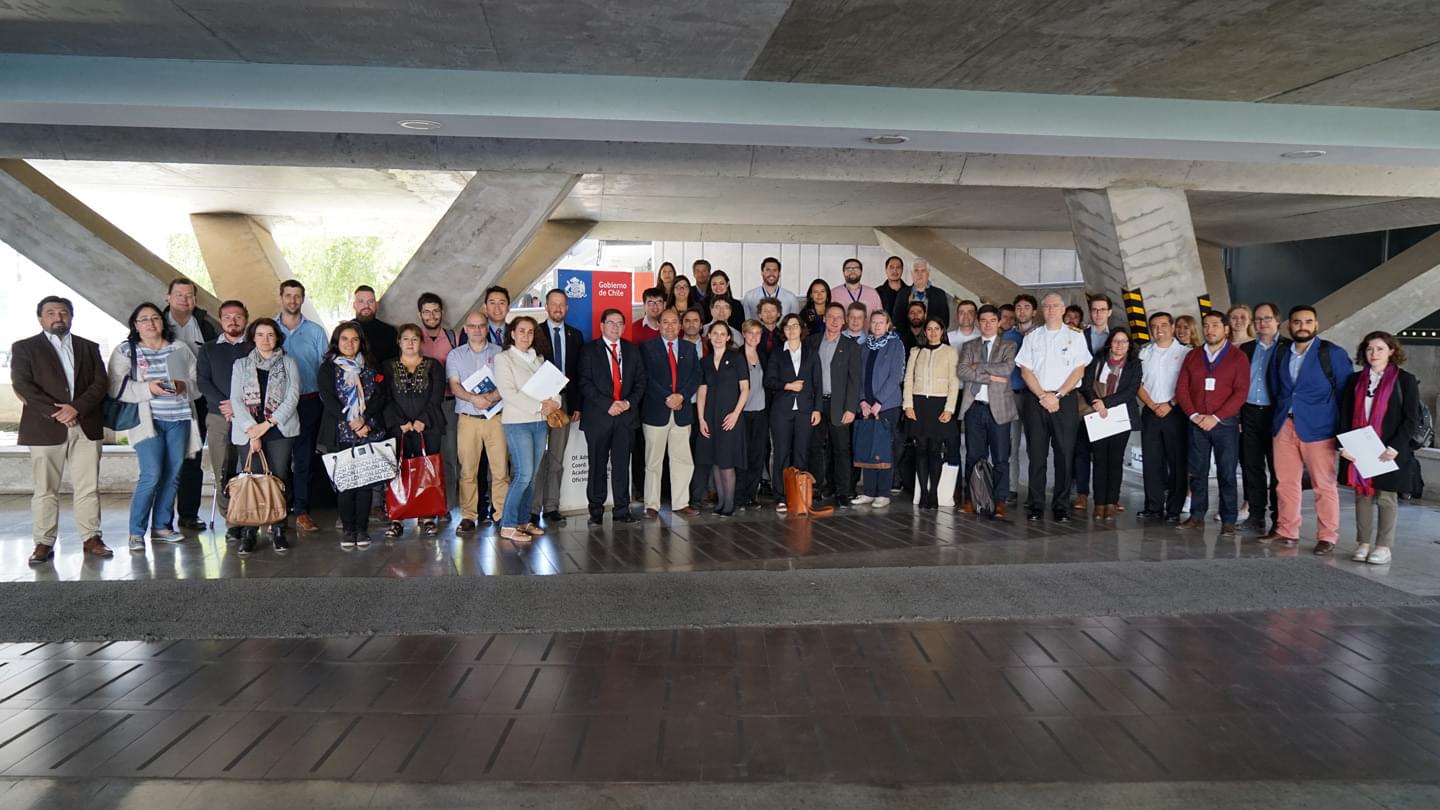
12.04.2018
The RIESGOS project is present at the European Geosciences Union General Assembly 2018 in Vienna, 8-13 April 2018.
Dr. Heidi Kreibich from the German Research Center for Geosciences (GFZ) presented the work of RIESGOS during the poster presentation session. Web link to the conference abstract.
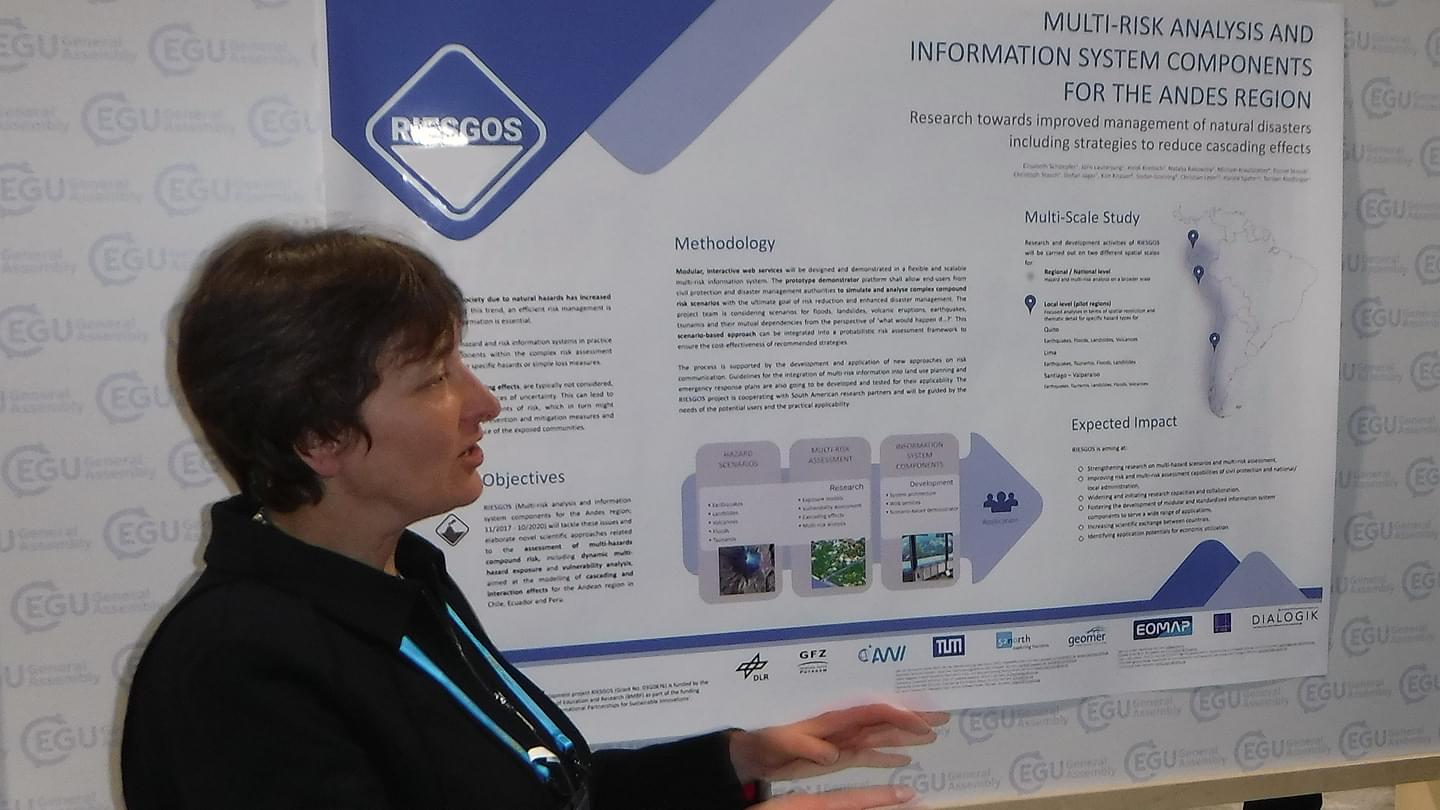
2017
07.12.2017
The RIESGOS project was officially launched with a kickoff meeting at the German Aerospace Center on December 7, 2017.
More information at: A better understanding of geo-risks – focusing on the Andes
